

WHO ARE WE?
About the conference.
Conference on Anatolian Landscape and Faith Tourism: Ancient Times to Present will be held with the support of the Rebuplic of Turkey Ministry of Culture and Tourism, Turkey's leading universities, public institutions and professional organizations, in cooperation with world-renowned respected academics, researchers, industry representatives and professionals, by Atilim University (Turkey), Cappadocia University (Turkey), University of Massachusetts Amherst (USA) and The Association of Turkish Tourism Academics.
ACADEMIC WORKS
TEAM MEMBER
CERTIFICATE OPPORTUNITY
How can i join, it's easy as 1-2-3-4. please follow the steps., submit your paper.
We accept papers until June 30, 2022.
Review process
All papers will be evaluated with peer-reviewed (double blind) process.
Live Sessions
All sessions will be live on Faith Tourism Virtual.
Certificates
The certificates will be given to the participants during the conference.
WHY FAITH TOURISM?
What can we offer you.
Conference on Anatolian Landscape and Faith Tourism: Ancient Times to Present aims to put forward the values and potential of faith tourism from past to present by synthesizing with many branches of science such as archeology, anthropology, ethnology, geography, architecture, art history and museology, and to introduce and share the richness of Anatolia.
Especially in terms of the increase in the touristic demand for Turkey, conference on Anatolian Landscape and Faith Tourism: Ancient Times to Present aims to highlight the very high potential values of Anatolia in the history of religions and faith tourism and to deal with tourism science and practices with respect and tolerance within the scope of academic and sectoral dimensions.
TO NETWORK WITH OTHER PROFESSIONALS
Join the conference and get the opportunity to meet other professionals.
TO RECIVECE FEEDBACK ON FOR YOUR RESEARCH FROM A DIVERSE AUDIENCE
Find out face-to-face what other professionals think about your work.
TO COMPLETE FOR THE BEST PAPER AND HONORABLE MENTION AWARDS
Prepare your paper to the best of your ability for the best paper and honorable mention awards.
TO HAVE QUALITY PUBLICATION (BOOK WITH ISBN OR SSCI, ETC.)
Get the opportunity to publish your work in an global indexes.
See our supporters
Marketing knowledge 85 %, team building 100 %, recruitment 40 %, ms office 75 %, english - language 90 %, spanish - language 50 %.

Aldağ Seramik
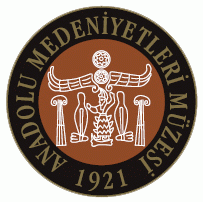
Anadolu Medeniyetleri Müzesi

ArtukBey Kahve
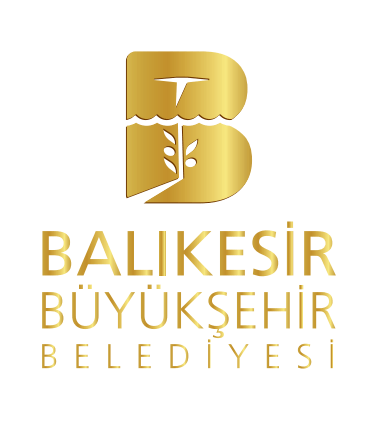
Balıkesir Büyükşehir Belediyesi

Detay Yayıncılık

Dinler Hotels
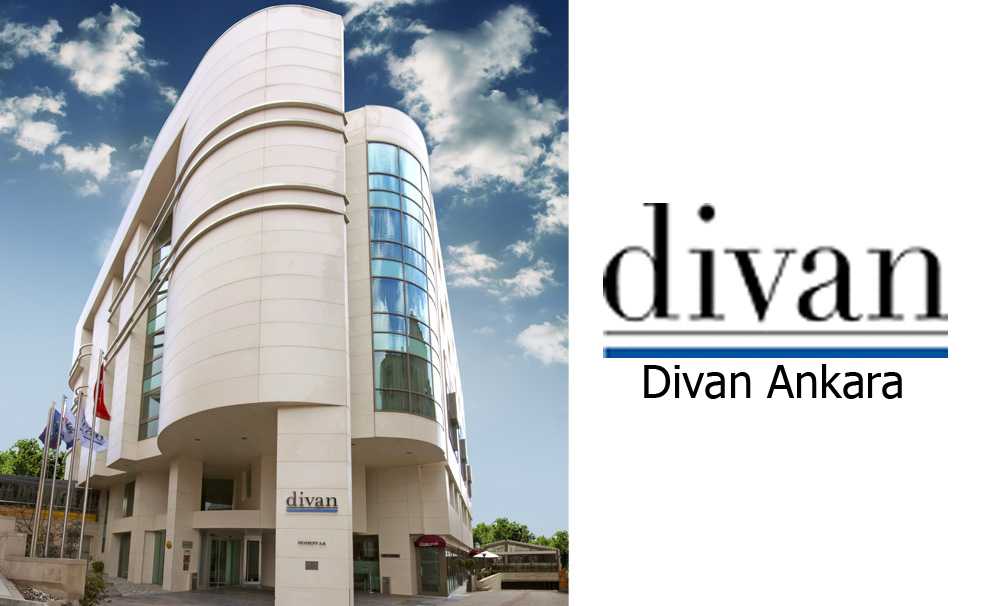
Divan Ankara

Mustafa Cappadocia Resort
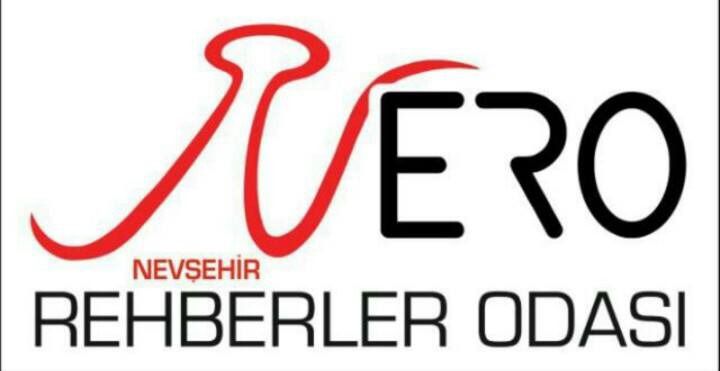
Nevşehir Rehberler Odası

Royal Balloon
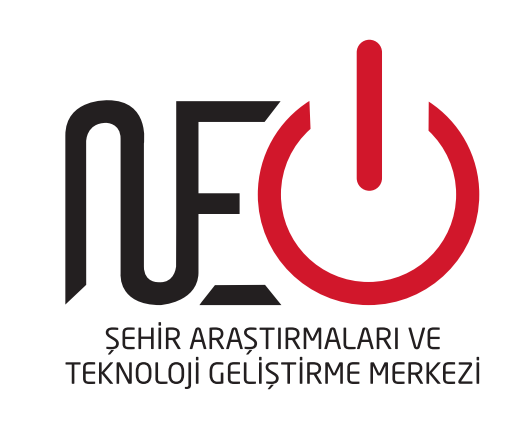
Şehir Araştırmaları ve Teknoloji Geliştirme Merkezi
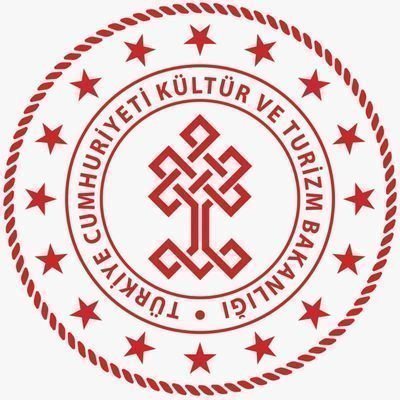
T.C KÜLTÜR VE TURİZM BAKANLIĞI
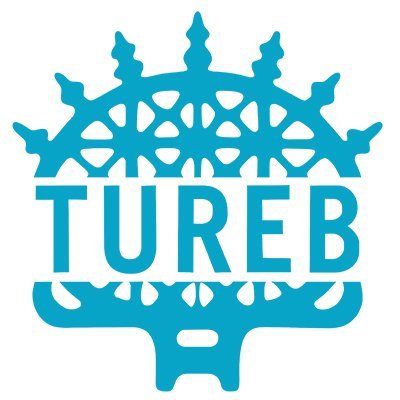
Turist Rehberleri Birliği

Ürgüp Naturel Kuruyemiş

+90 (312) 926 26 20
CONTACT US VIA E-MAIL
[email protected]
OUR SOCIAL MEDIA
Contact us. feel free to call or write anytime.

Must-see attractions in Moscow
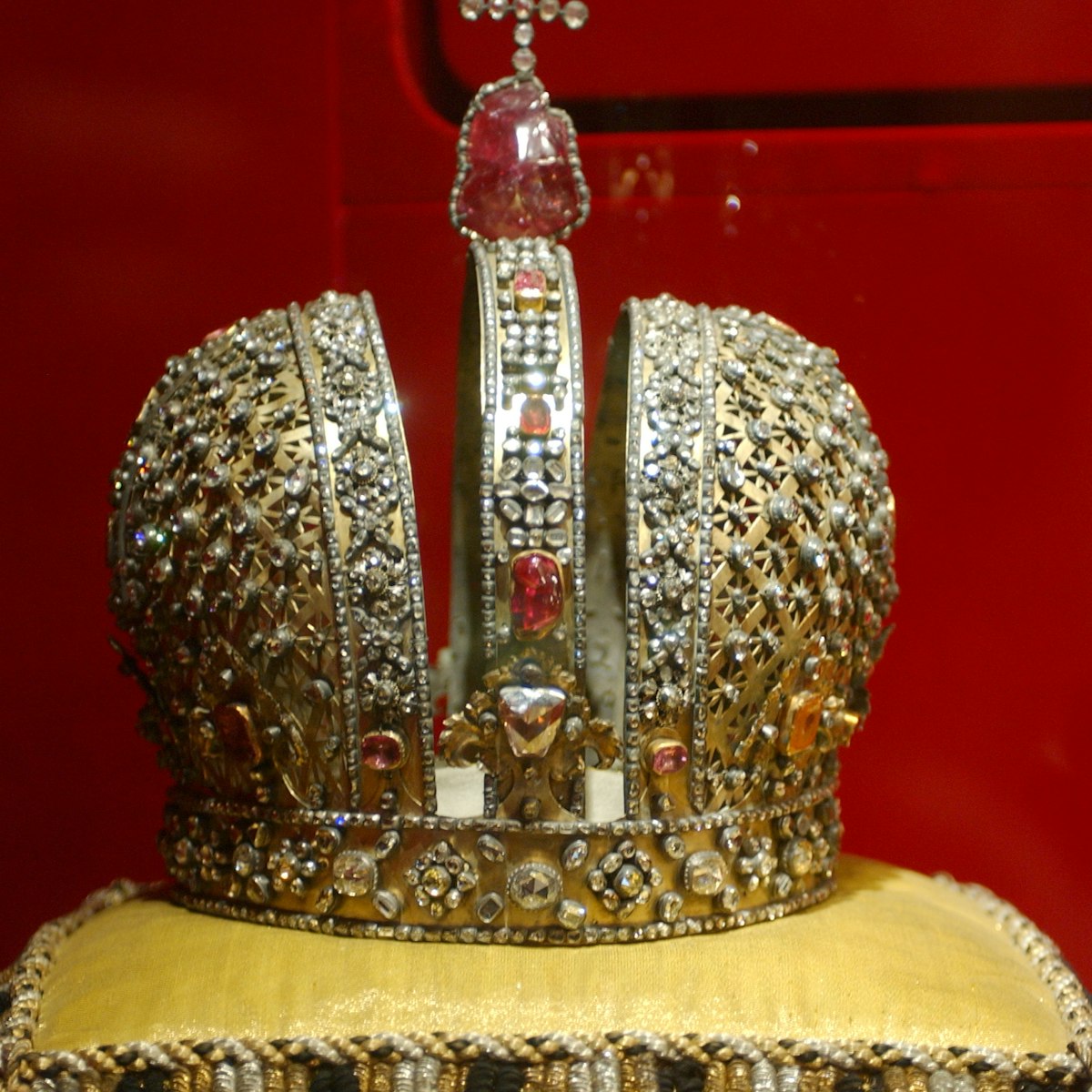
The Armoury dates to 1511, when it was founded under Vasily III to manufacture and store weapons, imperial arms and regalia for the royal court. Later it…
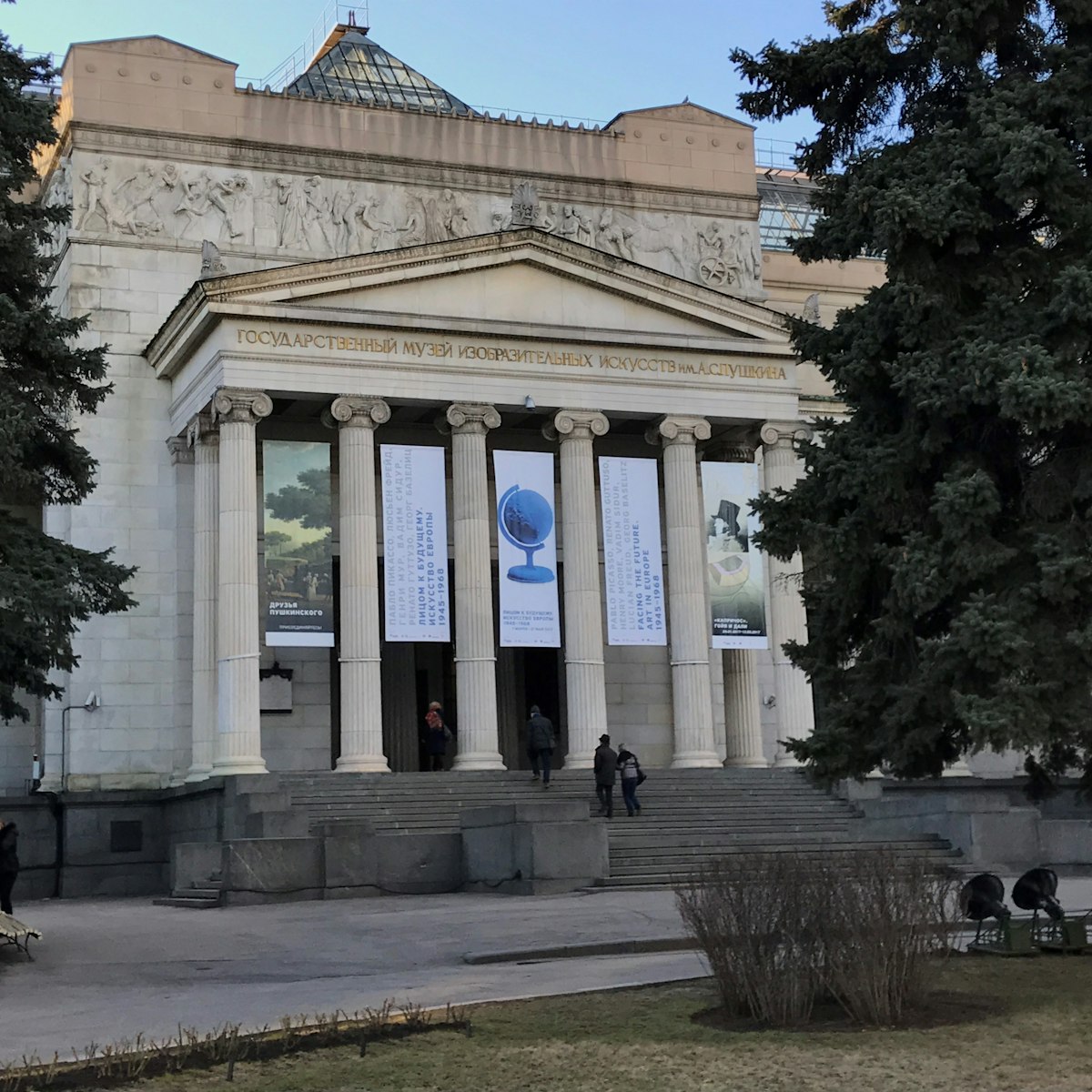
Pushkin Museum of Fine Arts
Arbat & Khamovniki
This is Moscow’s premier foreign-art museum, split over three branches and showing off a broad selection of European works, including masterpieces from…
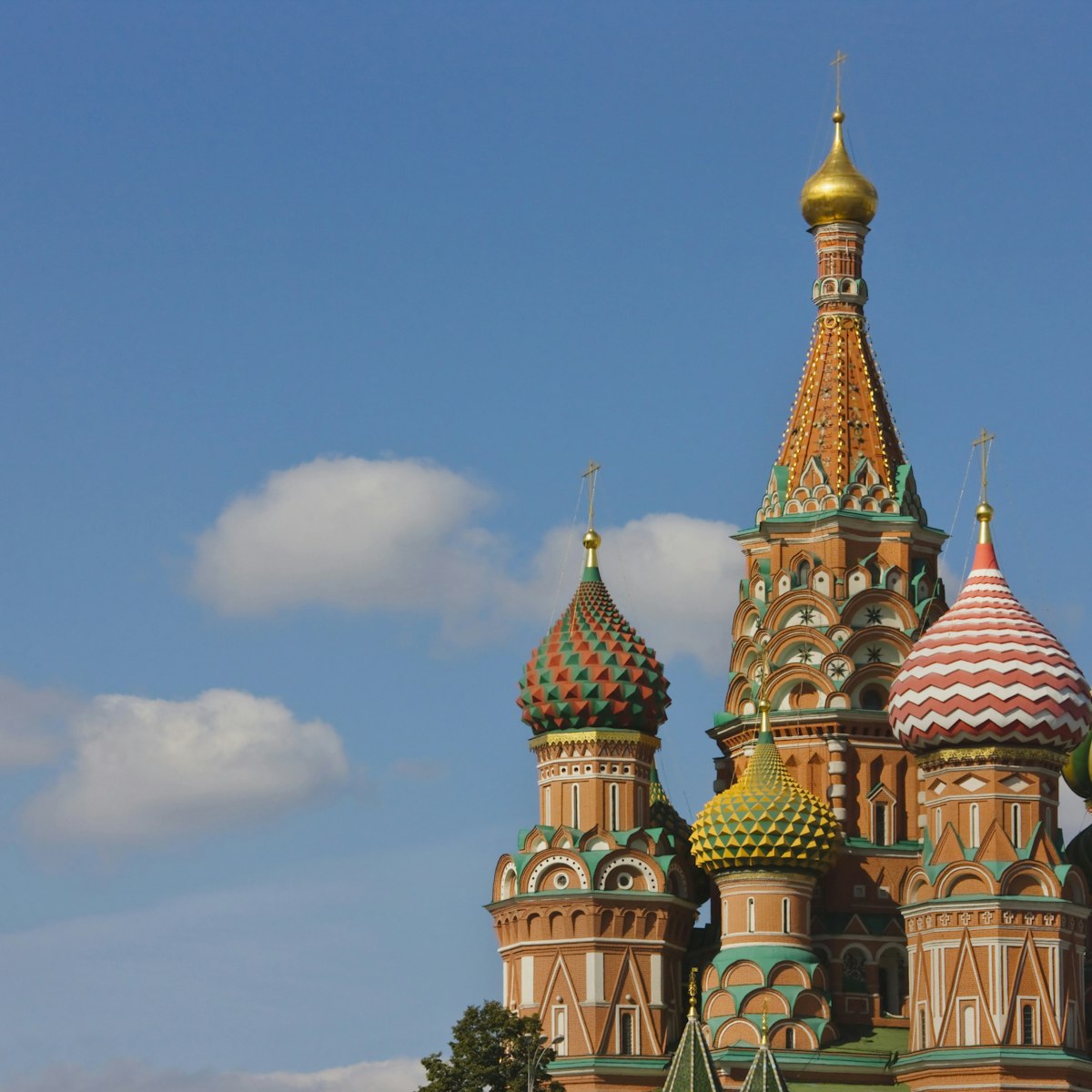
St Basil's Cathedral
At the southern end of Red Square stands the icon of Russia: St Basil’s Cathedral. This crazy confusion of colours, patterns and shapes is the culmination…

Moscow Kremlin
The apex of Russian political power and once the centre of the Orthodox Church, the Kremlin is the kernel of not only Moscow, but of the whole country…
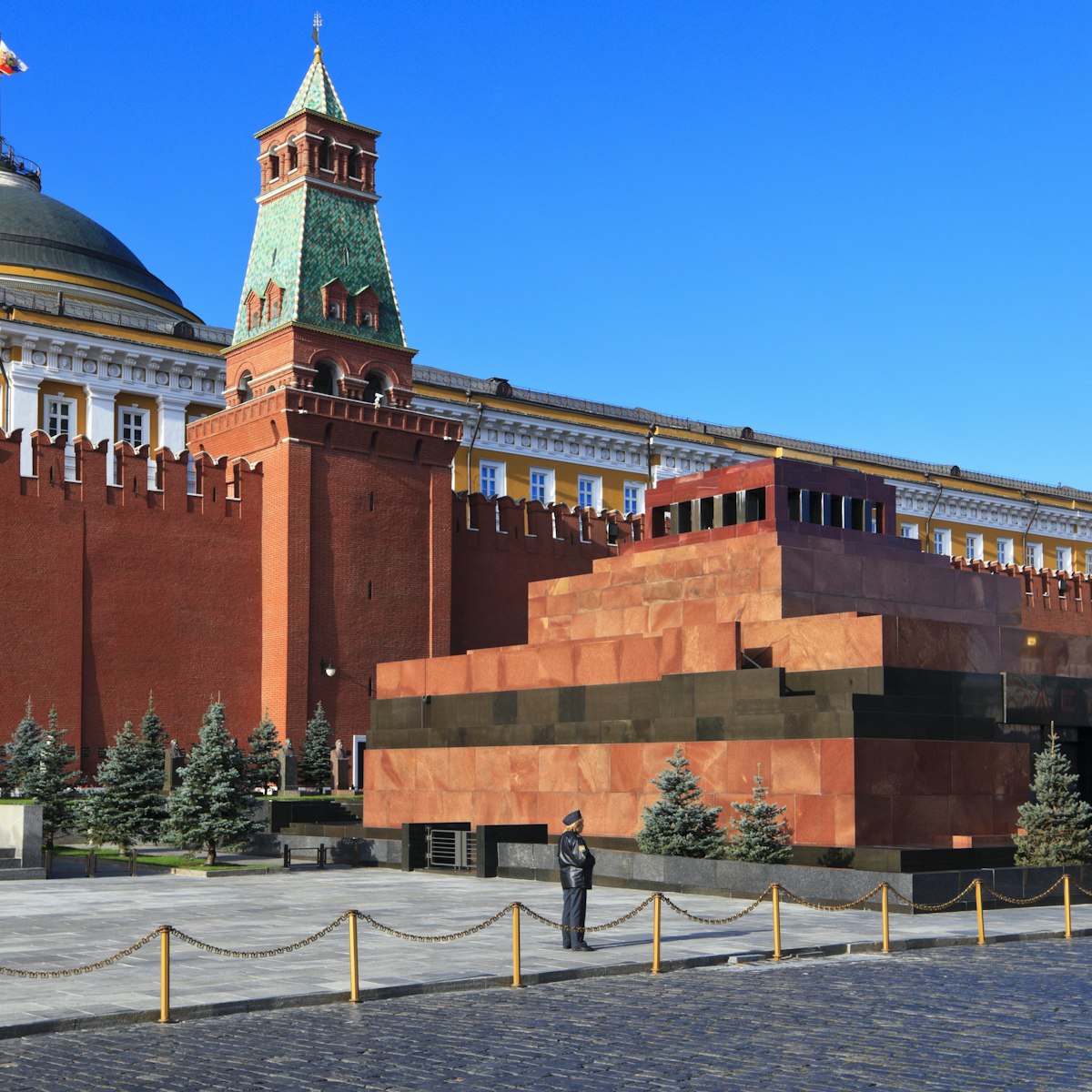
Lenin's Mausoleum
Although Vladimir Ilych requested that he be buried beside his mum in St Petersburg, he still lies in state at the foot of the Kremlin wall, receiving…
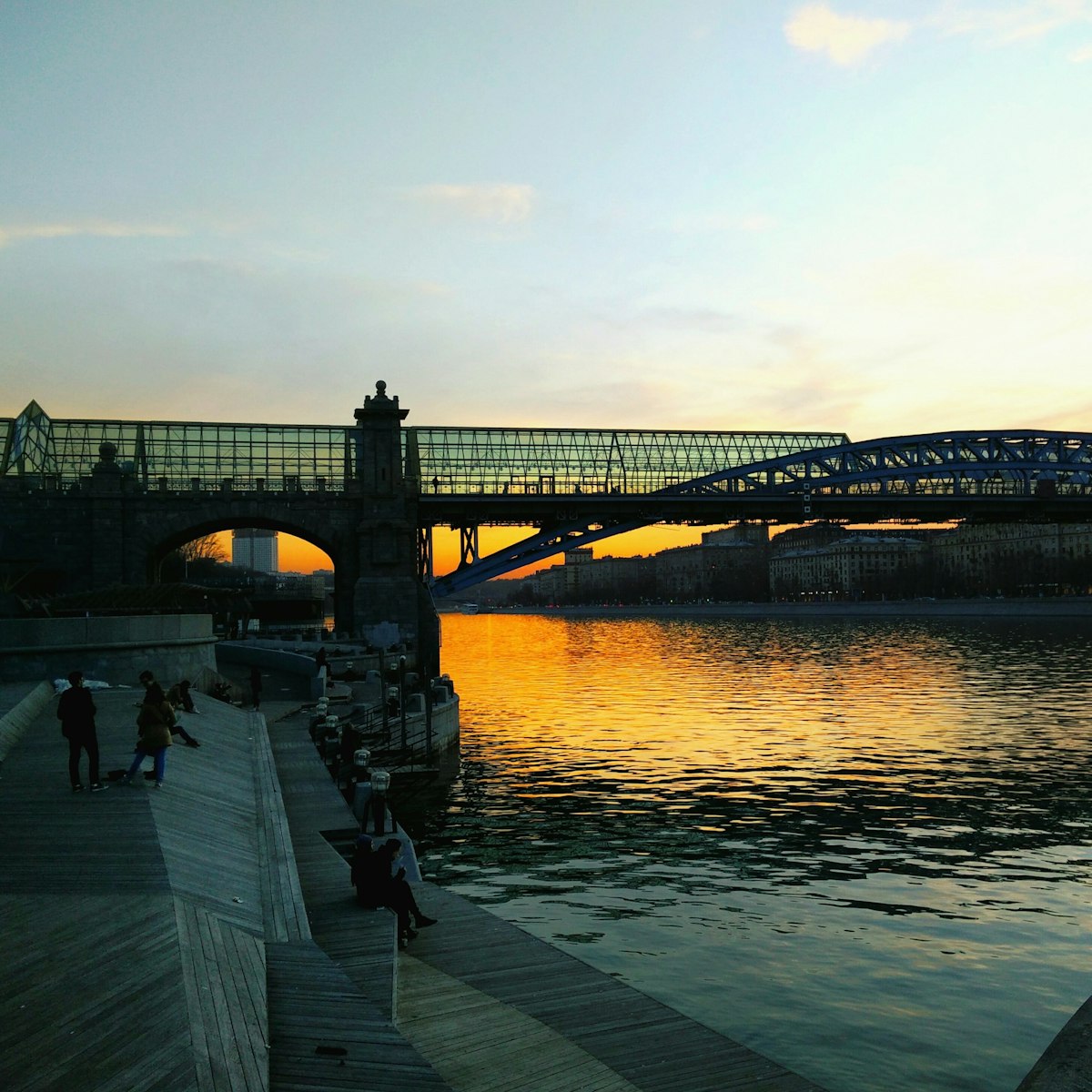
Zamoskvorechie
Moscow's main city escape isn't your conventional expanse of nature preserved inside an urban jungle. It's not a fun fair either, though it used to be one…
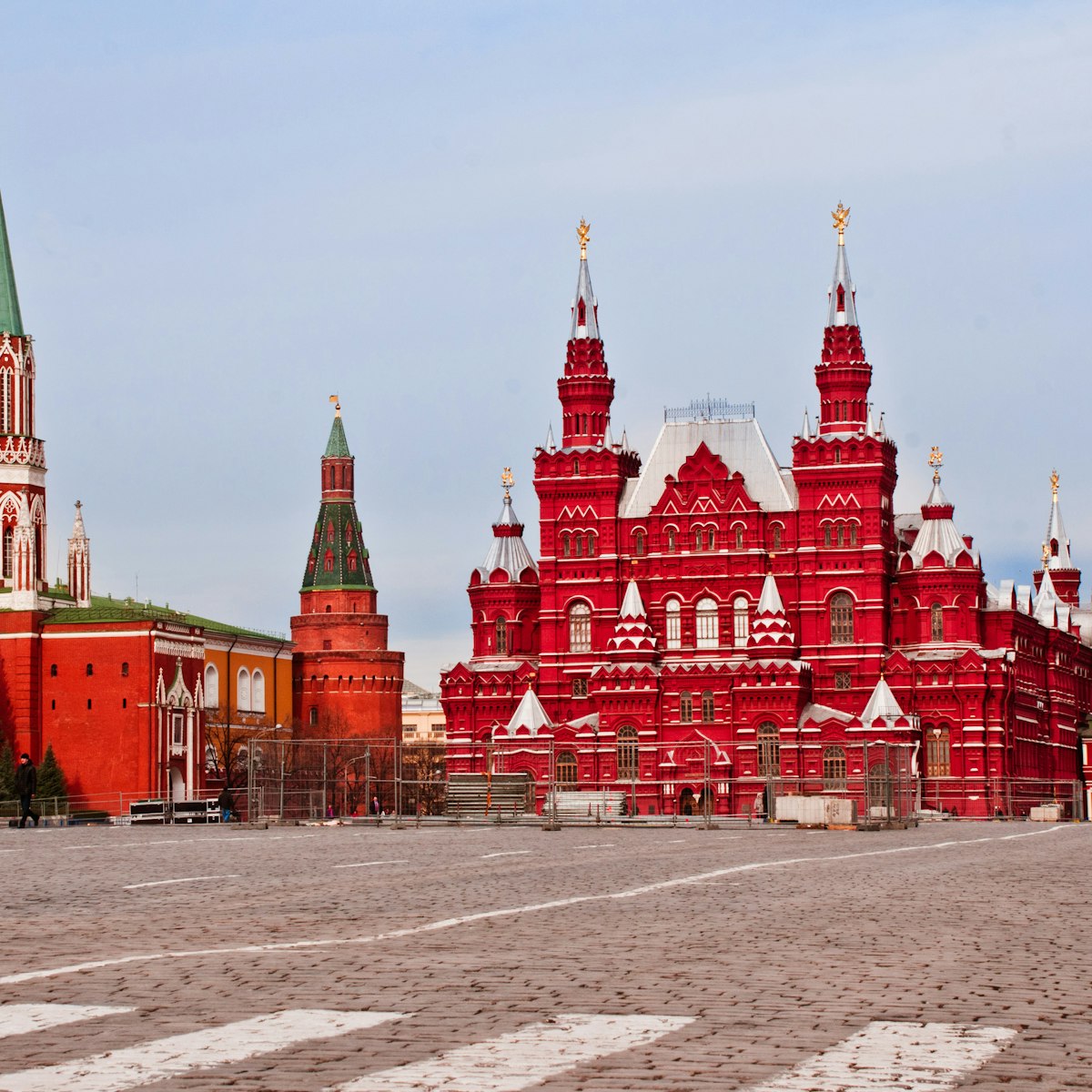
Immediately outside the Kremlin’s northeastern wall is the celebrated Red Square, the 400m-by-150m area of cobblestones that is at the very heart of…
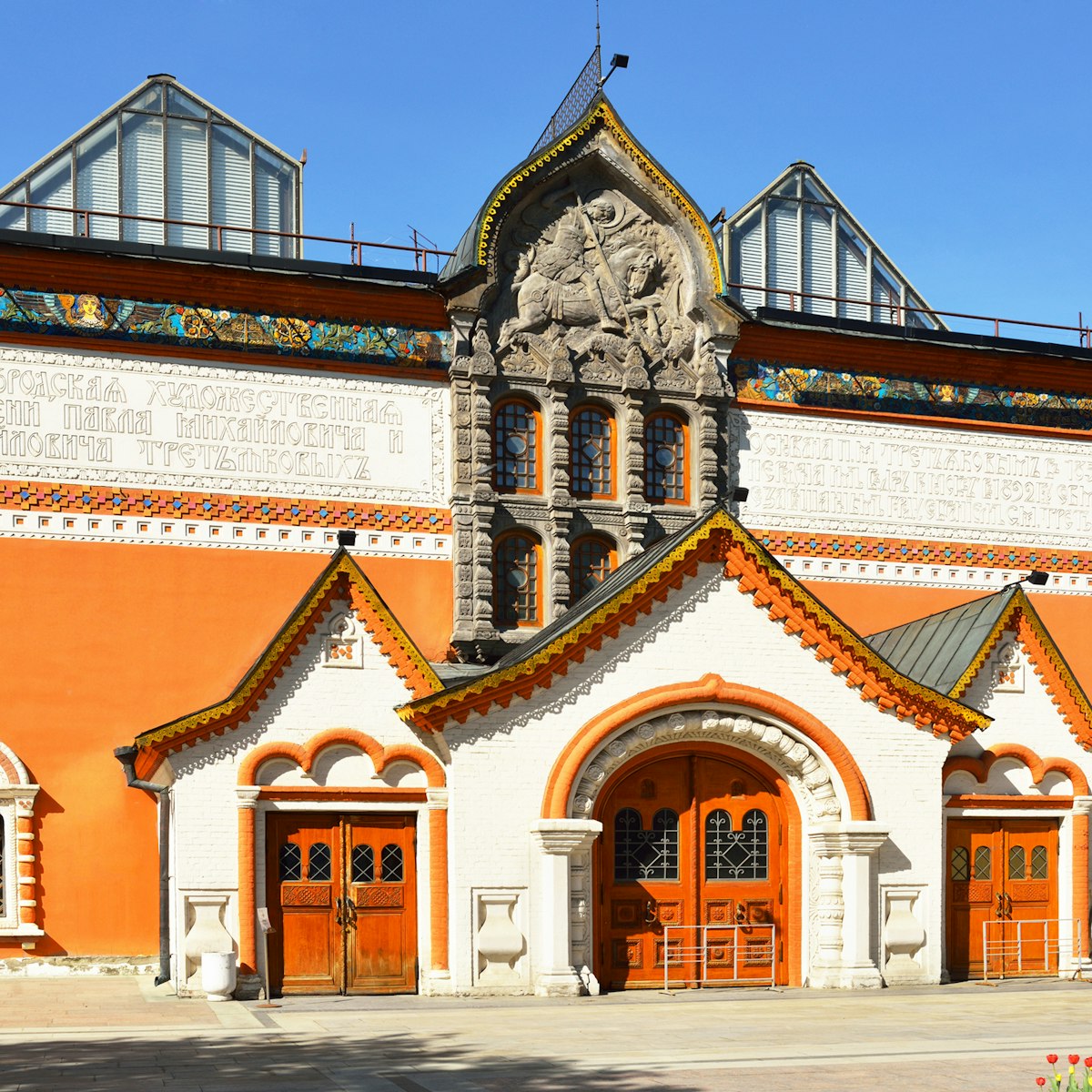
State Tretyakov Gallery Main Branch
The exotic boyar (high-ranking noble) castle on a little lane in Zamoskvorechie contains the main branch of the State Tretyakov Gallery, housing the world…
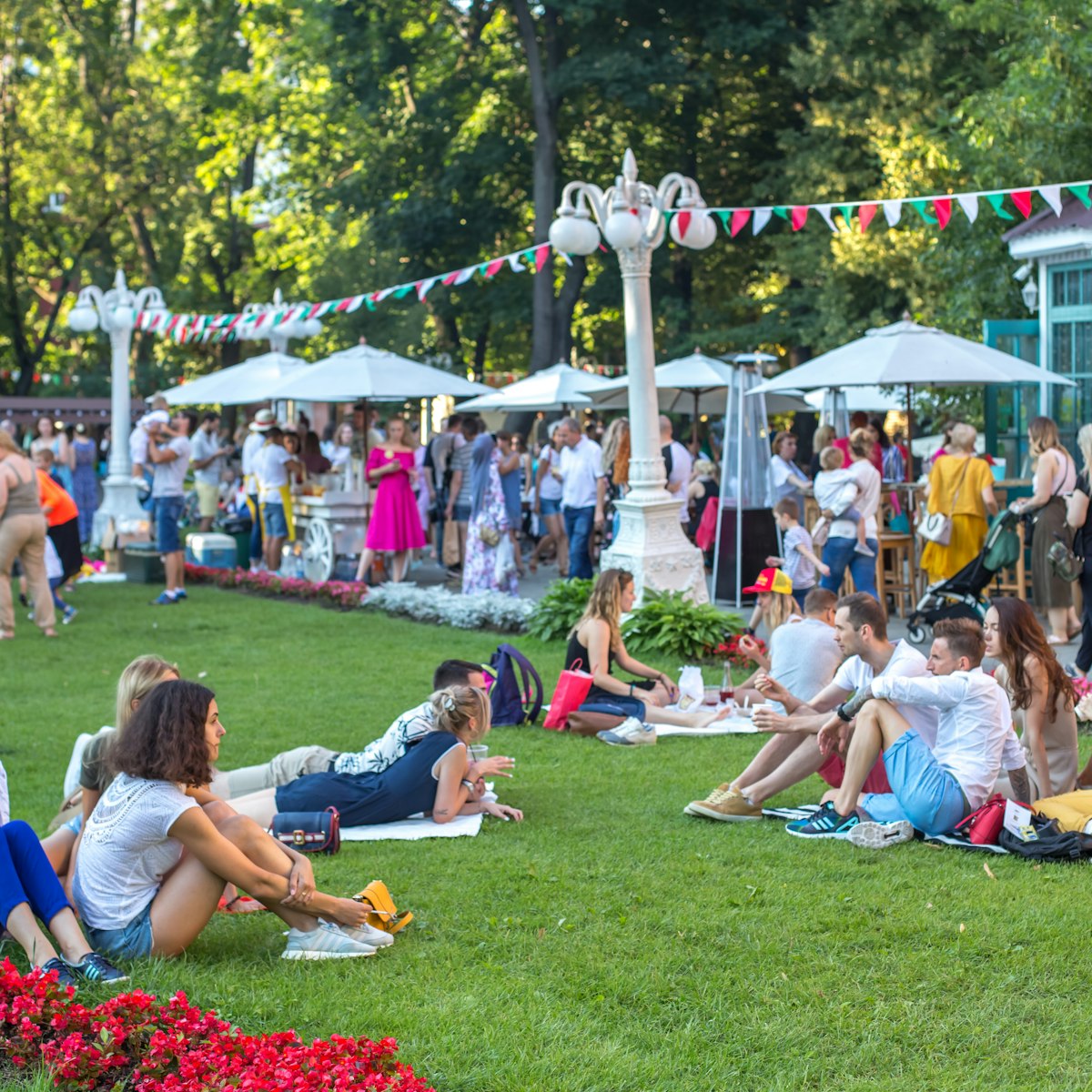
Hermitage Gardens
All the things that have improved Moscow parks no end in recent years fill this small, charming garden to the brim. Today, it is possibly the most…
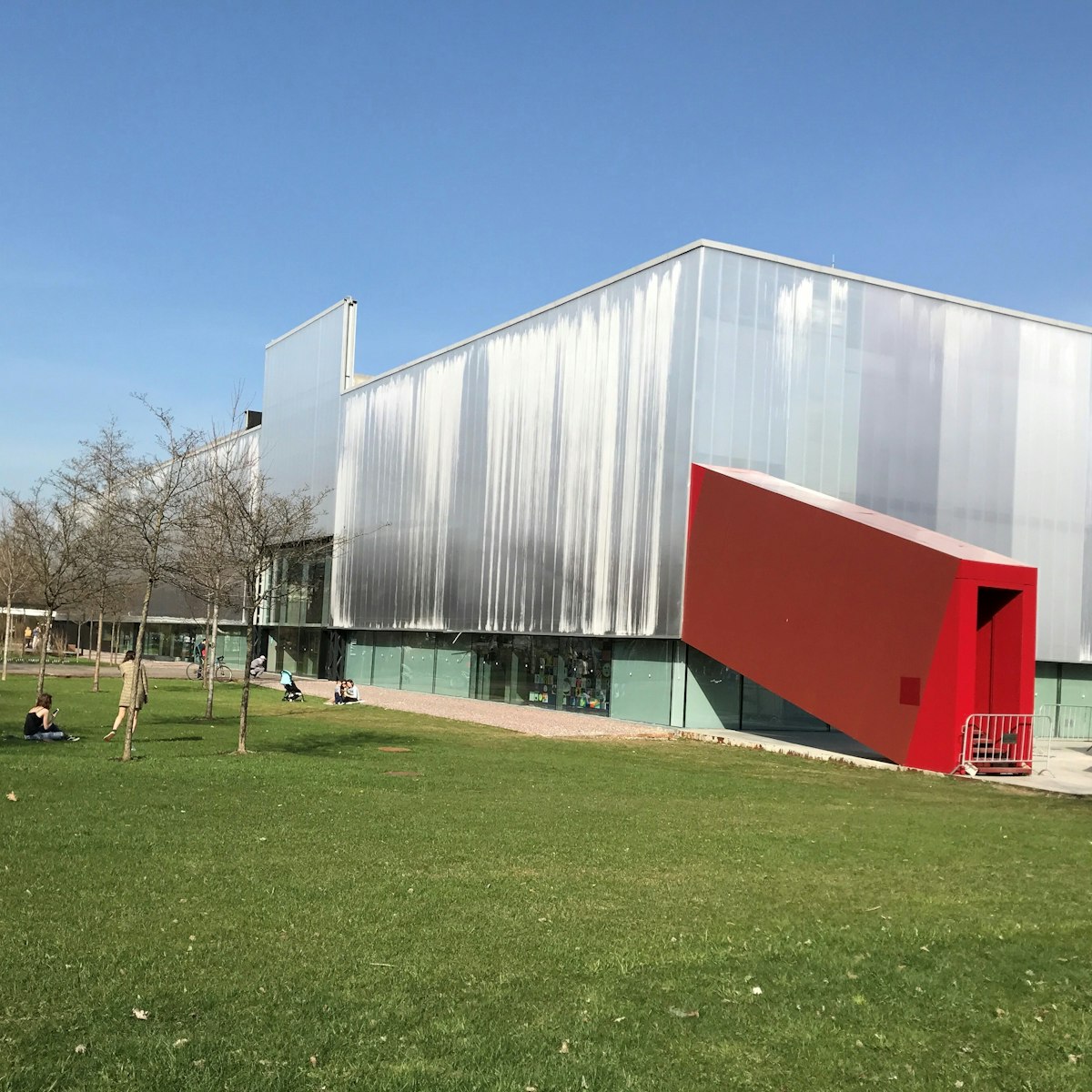
Garage Museum of Contemporary Art
The brainchild of Moscow art fairy Darya Zhukova, Garage is one of the capital's hottest modern-art venues. In 2015, the museum moved to spectacular new…

19th & 20th Century Art Gallery
This branch of the Pushkin Museum of Fine Arts contains a famed assemblage of French Impressionist works, based on the collections of two well-known…
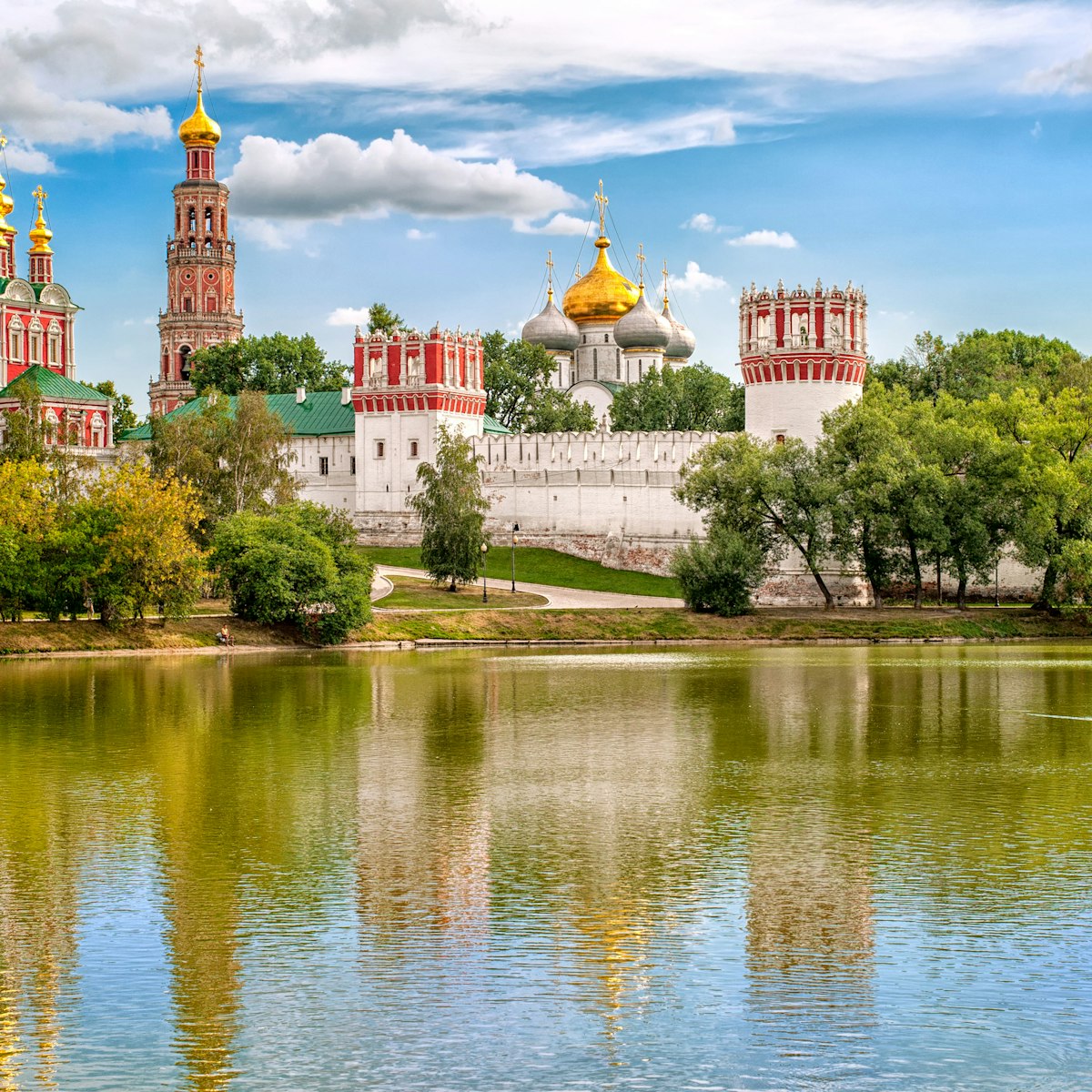
Novodevichy Convent
The Novodevichy Convent was founded in 1524 to celebrate the taking of Smolensk from Lithuania, an important step in Moscow’s conquest of the old Kyivan…
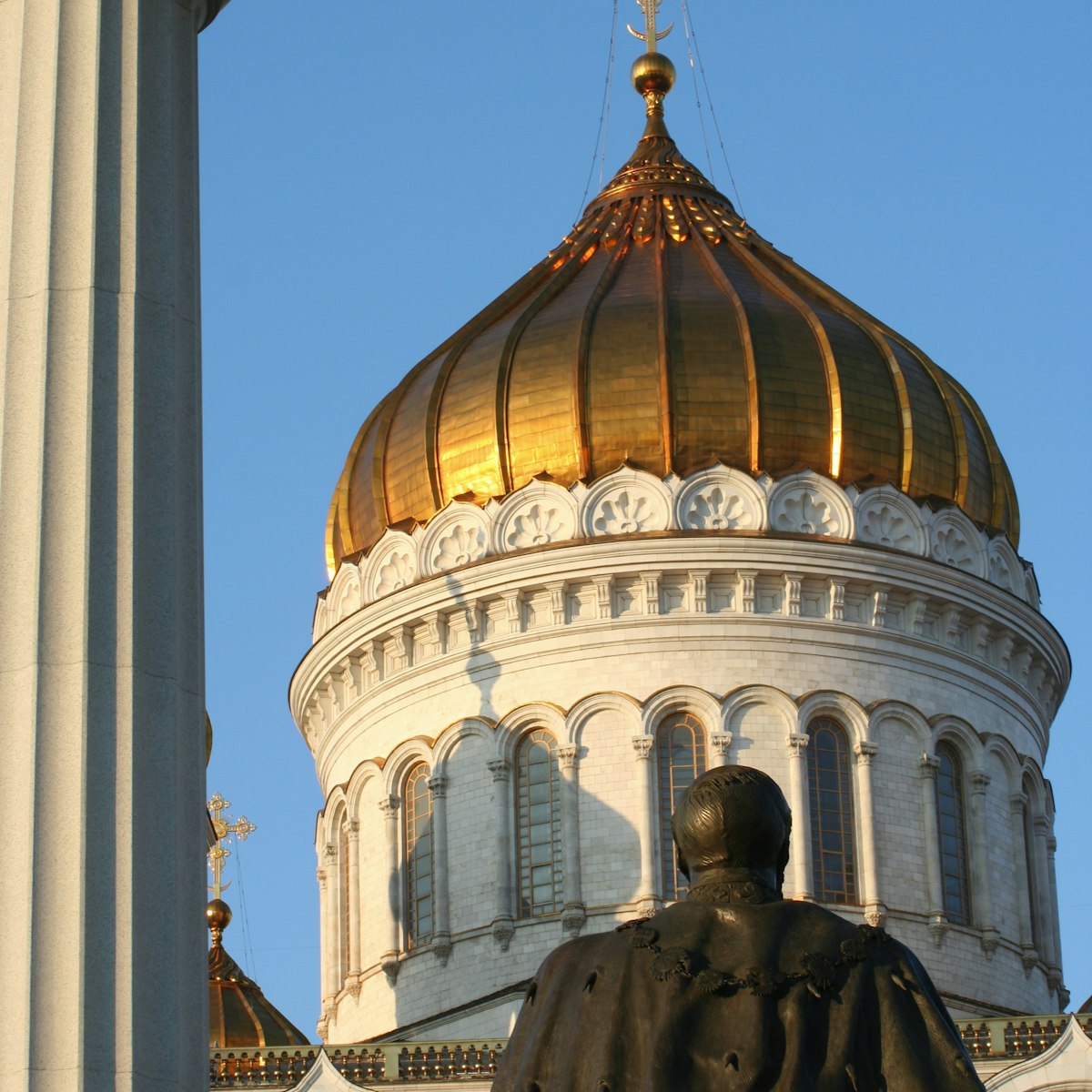
Cathedral of Christ the Saviour
This opulent and grandiose cathedral was completed in 1997 – just in time to celebrate Moscow's 850th birthday. The cathedral’s sheer size and splendour…
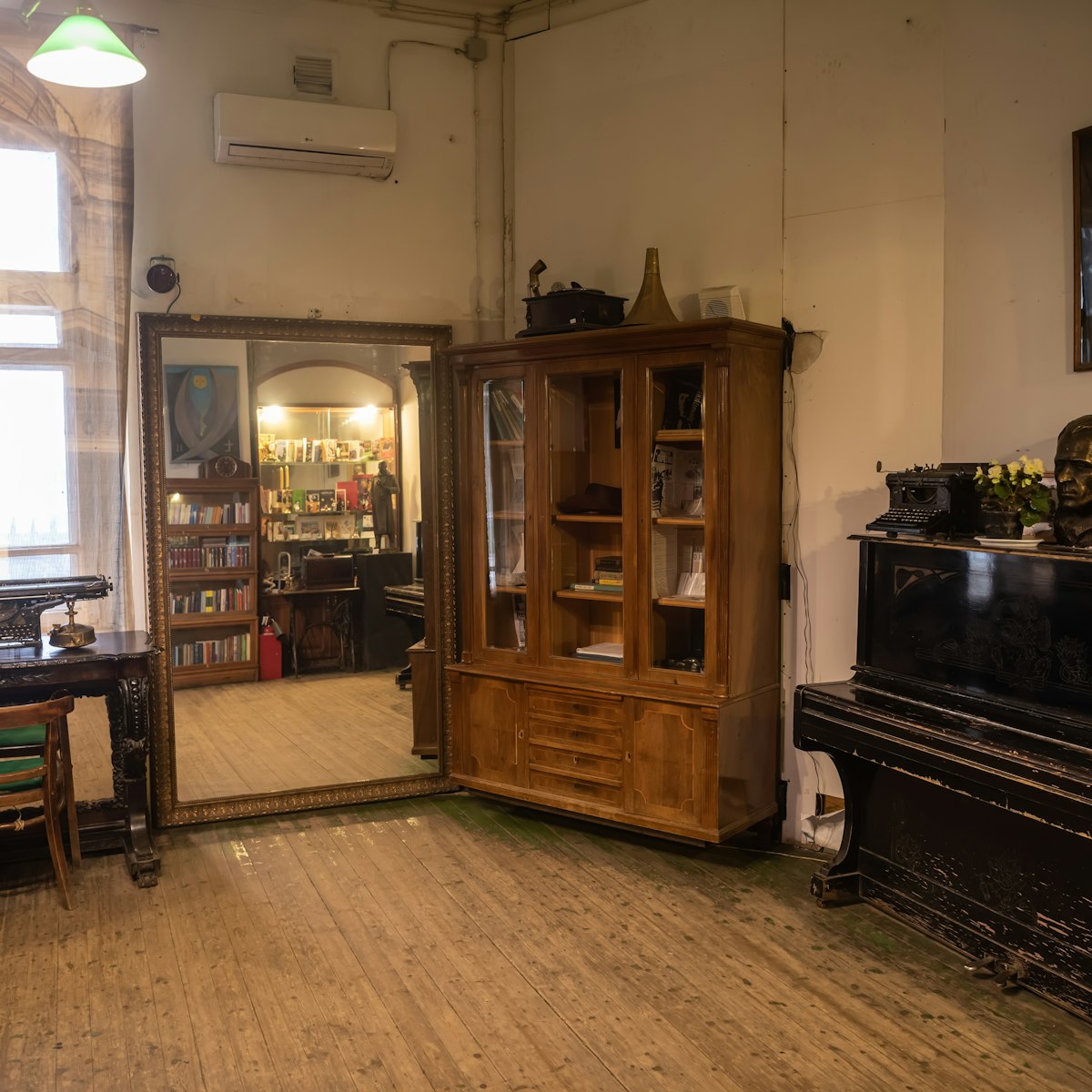
Mikhail Bulgakov Museum
Author of The Master and Margarita and Heart of a Dog, Mikhail Bulgakov was a Soviet-era novelist who was labelled a counter-revolutionary and censored…
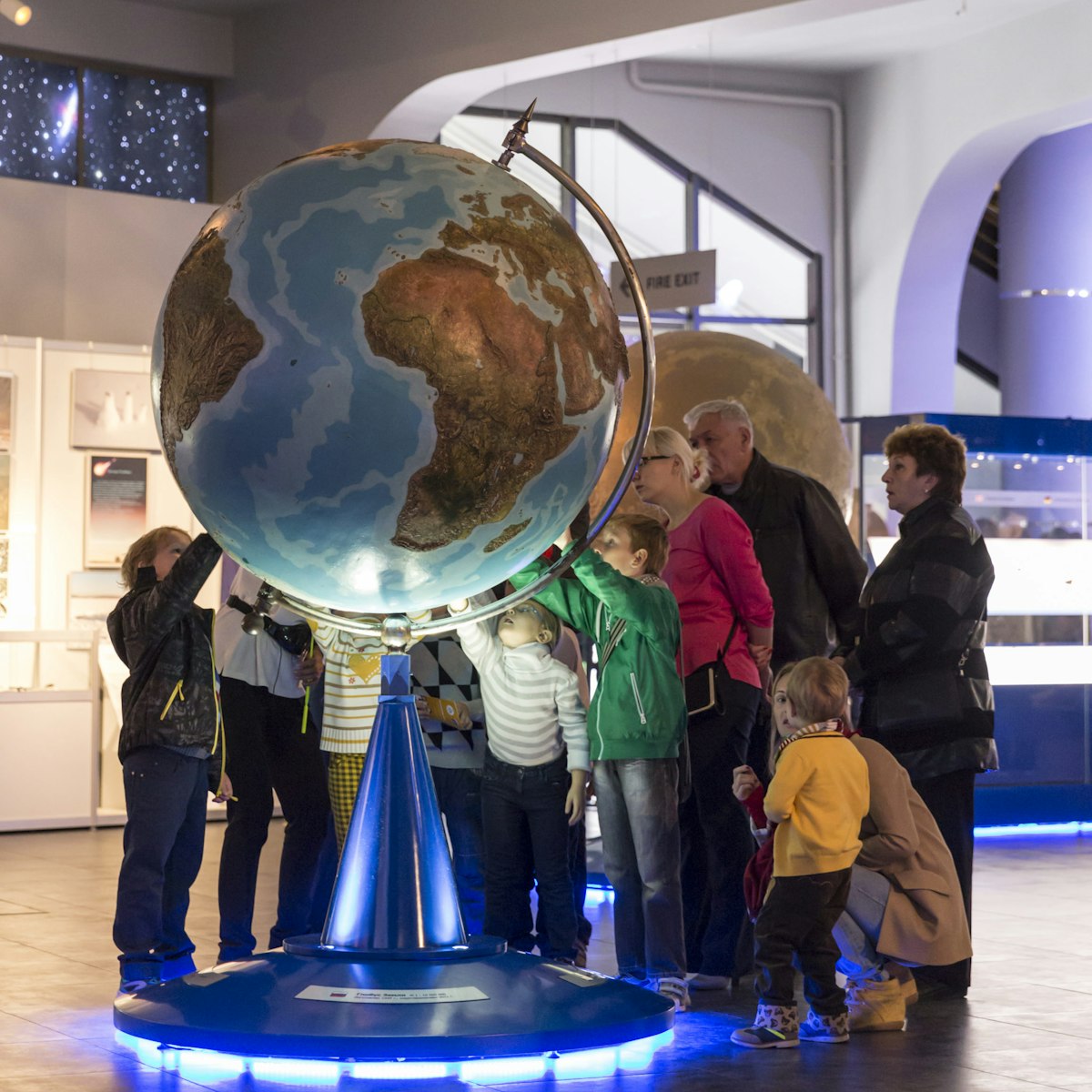
Moscow Planetarium
The planetarium has become one of the biggest and brightest stars on the Moscow museum circuit, now incorporating all kinds of high-tech gadgetry,…
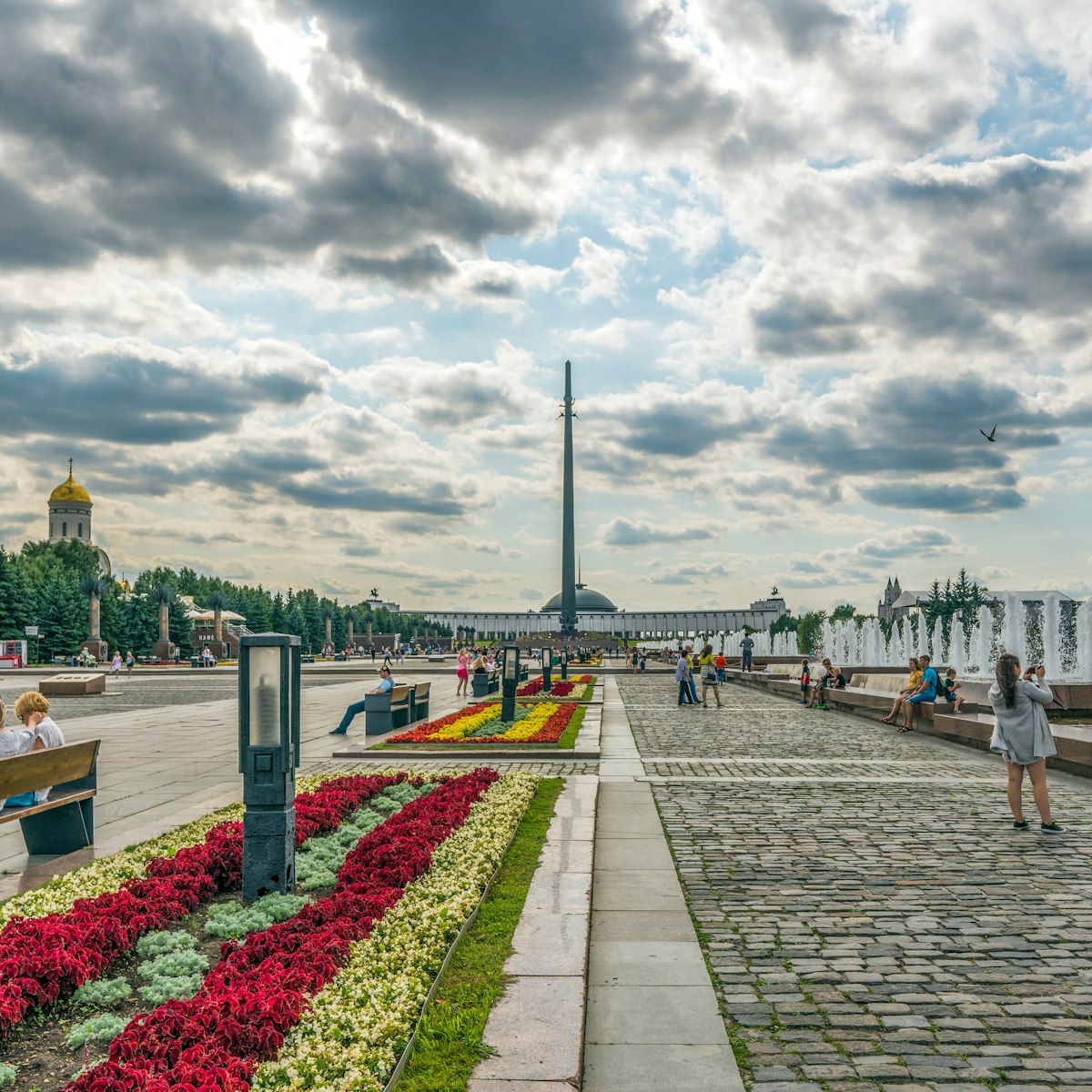
Park Pobedy
The Great Patriotic War – as WWII is known in Russia – was a momentous event that is still vivid in the hearts, minds and memories of many Russian…
Winzavod Center for Contemporary Art
Meshchansky & Basmanny
Formerly a wine-bottling factory, this facility was converted into exhibit and studio space for Moscow artists in 2007. The post-industrial complex is now…
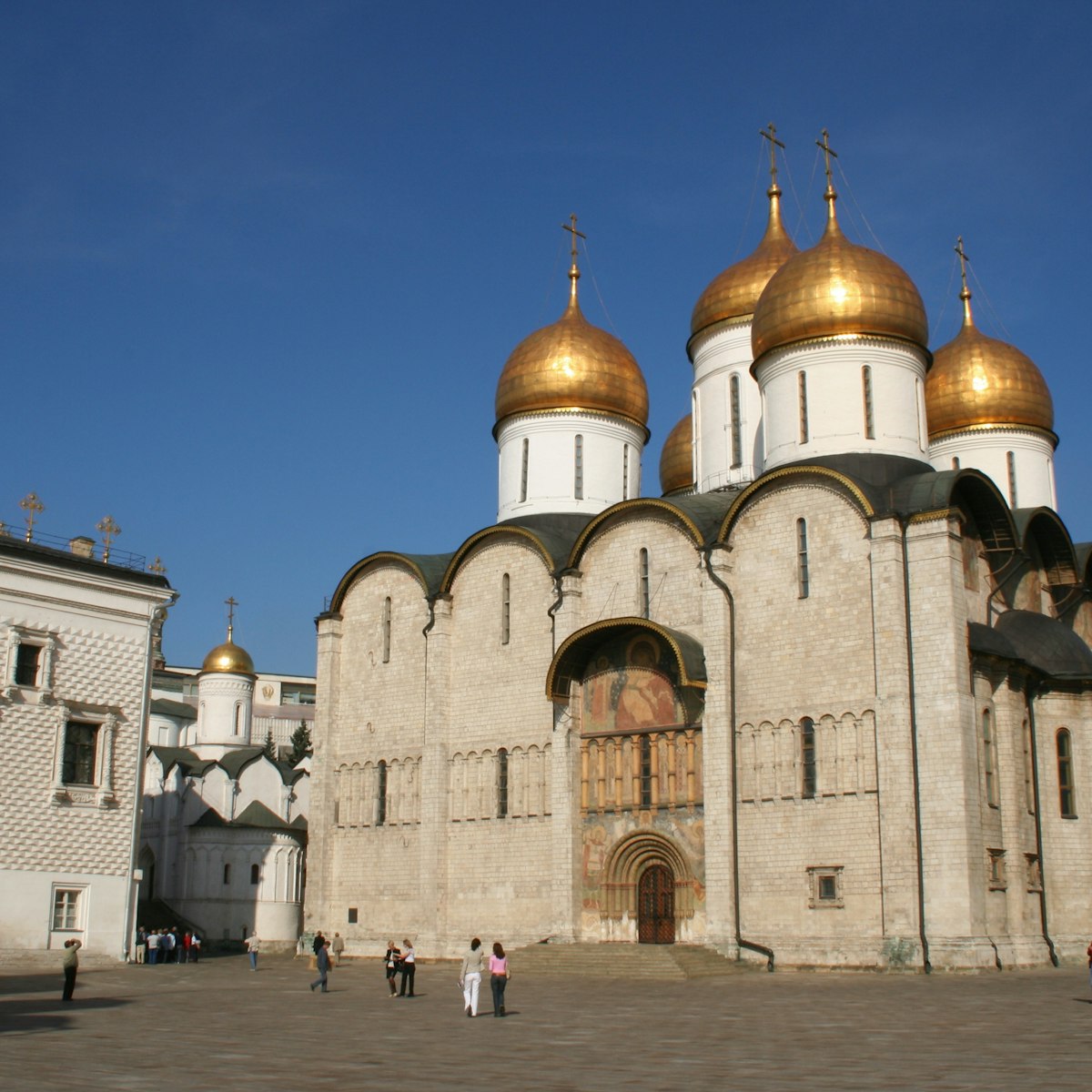
Assumption Cathedral
On the northern side of Sobornaya pl, with five golden helmet domes and four semicircular gables, the Assumption Cathedral is the focal church of pre…
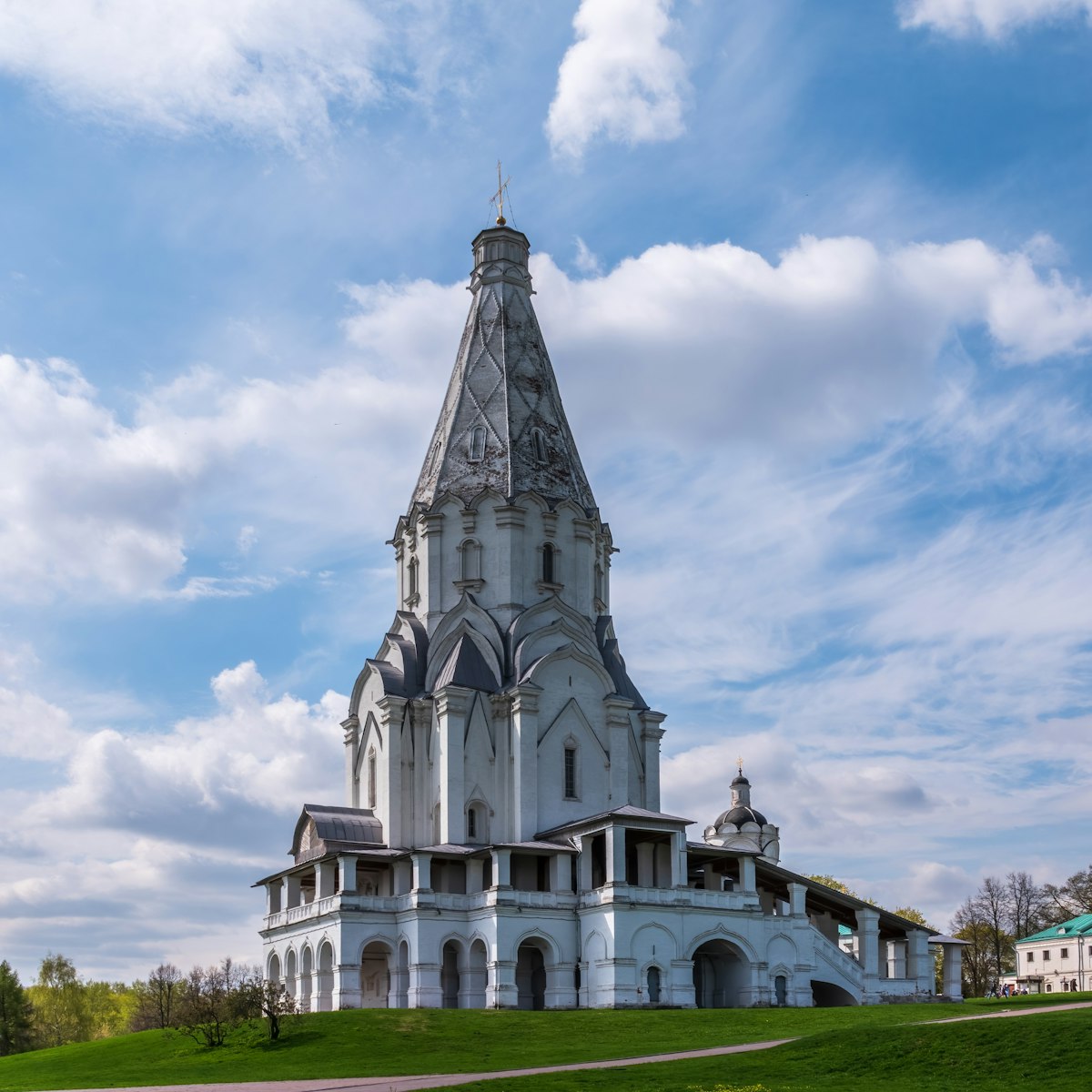
Kolomenskoe Museum-Reserve
Set amidst 4 sq km of picturesque parkland, on a bluff above a bend in the Moscow River, Kolomenskoe is an ancient royal country seat and a Unesco World…
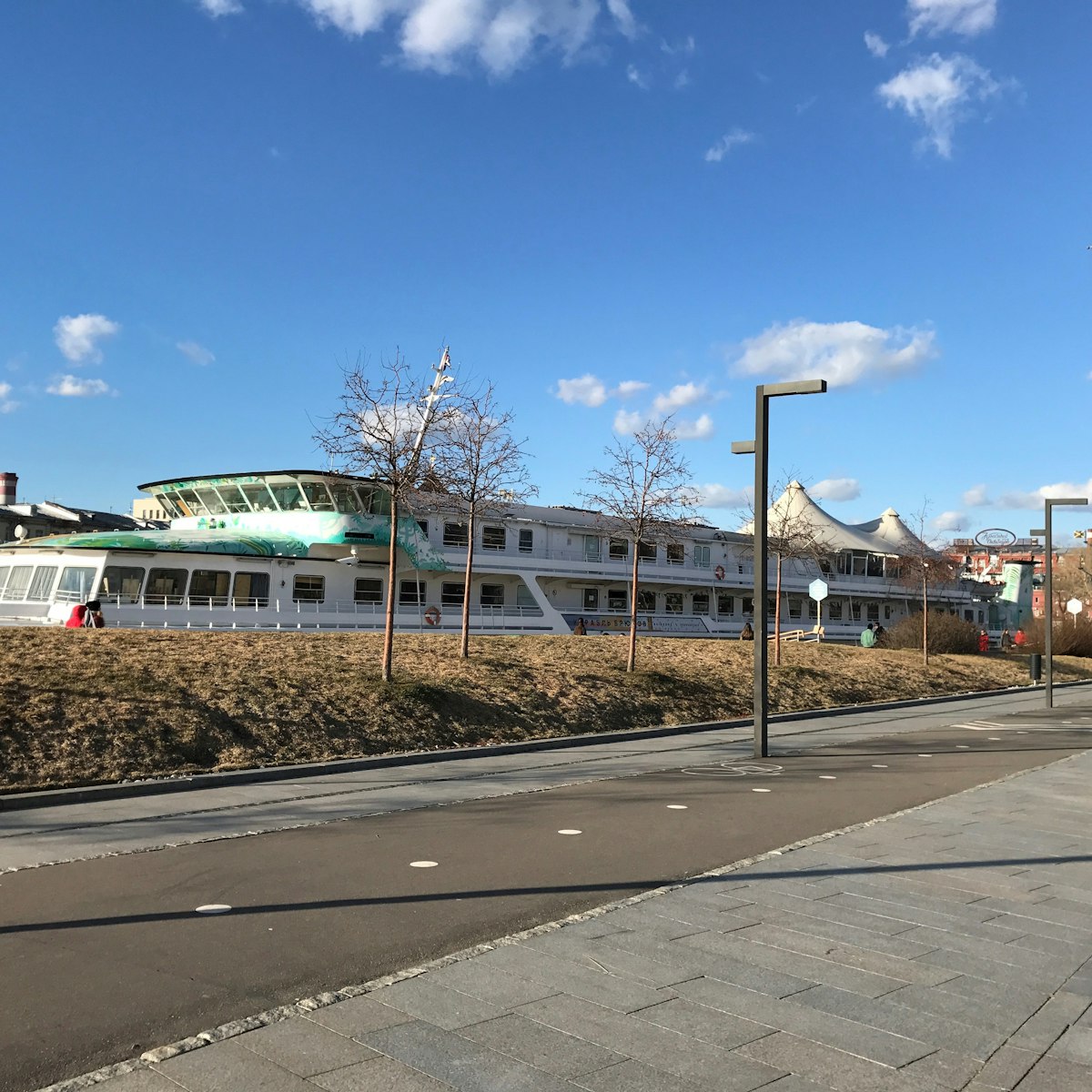
Art Muzeon & Krymskaya Naberezhnaya
Moscow's answer to London's South Bank, Krymskaya Nab (Crimea Embankment) features wave-shaped street architecture with Scandinavian-style wooden elements…
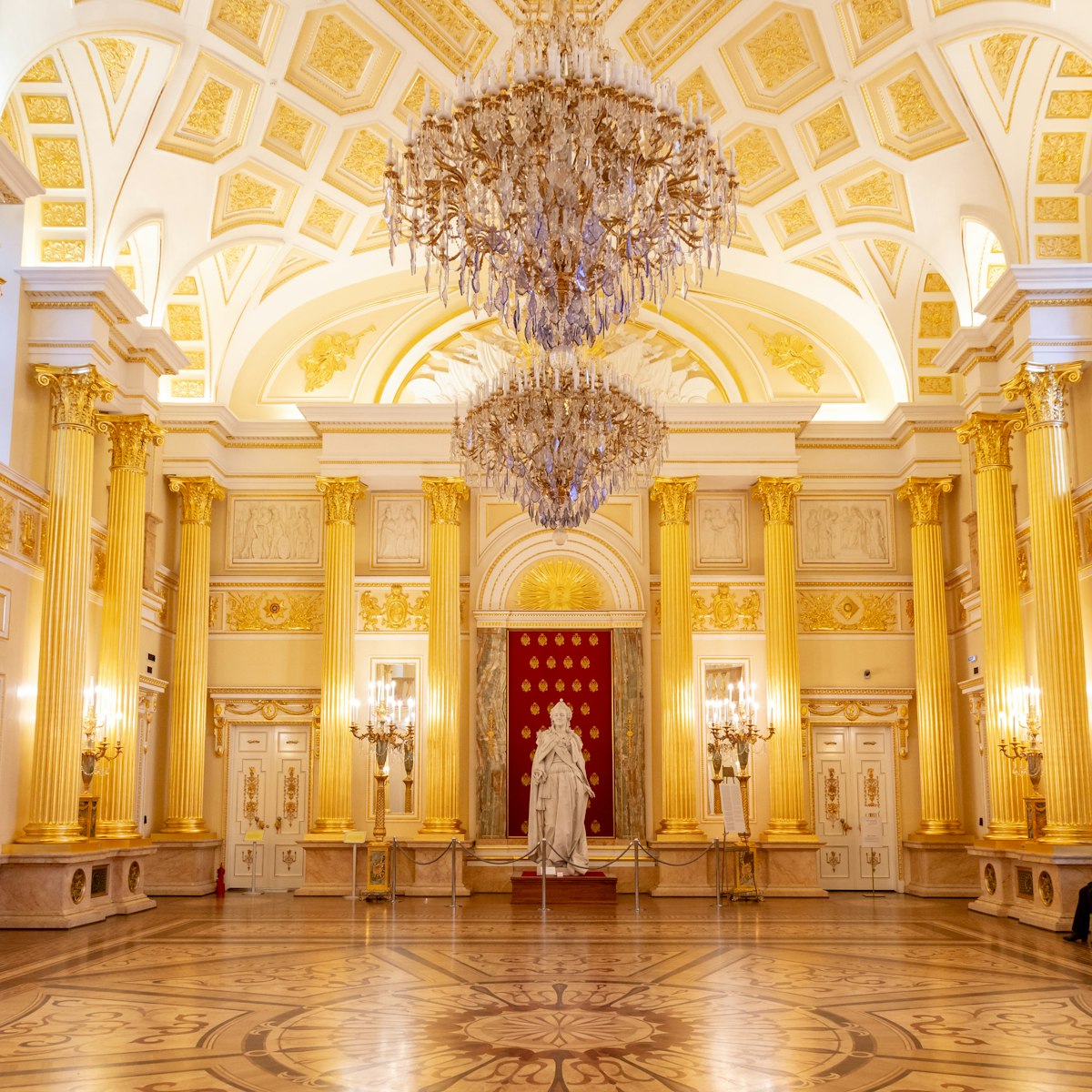
Tsaritsyno Palace
On a wooded hill in far southeast Moscow, Tsaritsyno Palace is a modern-day manifestation of the exotic summer home that Catherine the Great began in 1775…
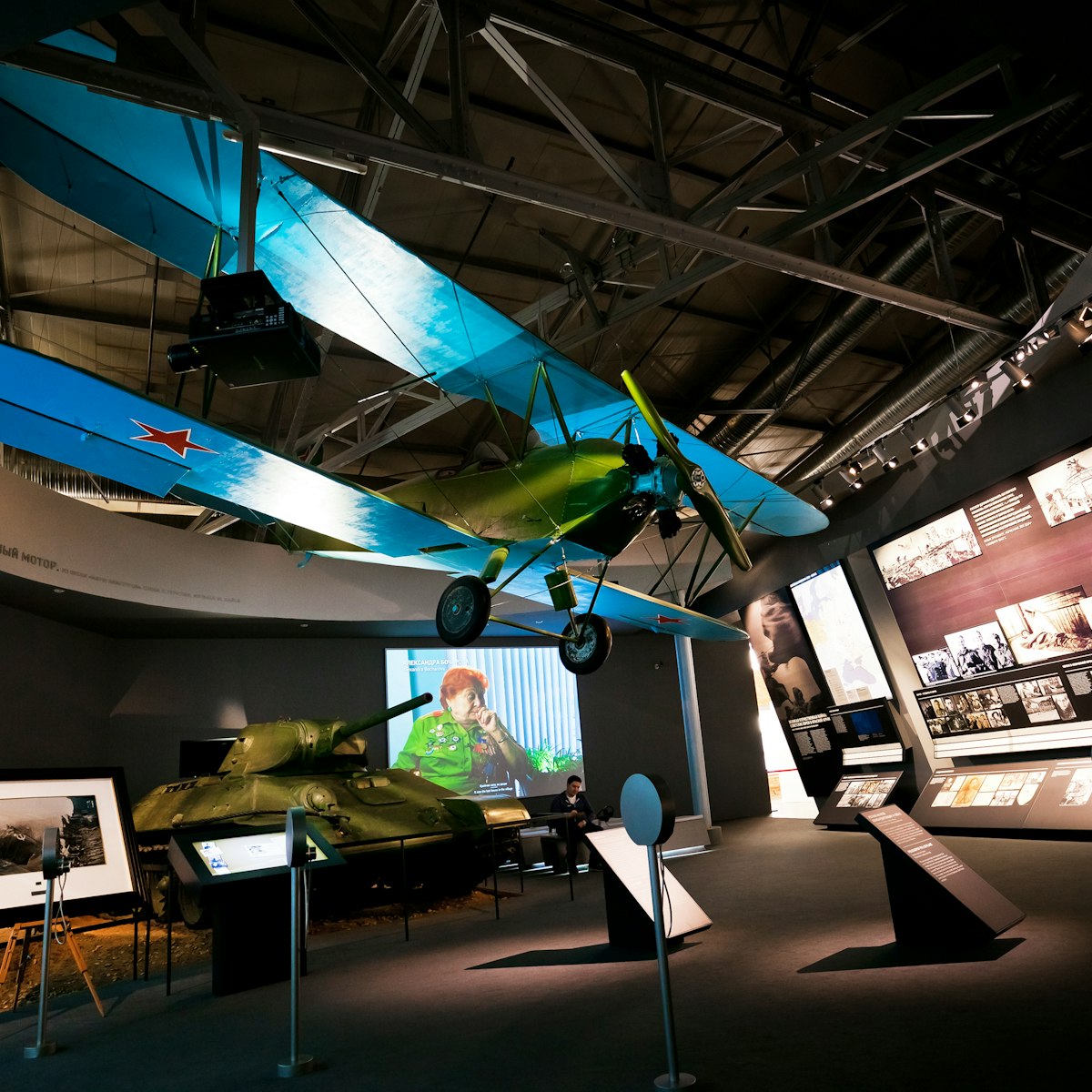
Jewish Museum & Centre of Tolerance
Occupying a heritage garage, purpose-built to house a fleet of Leyland double-deckers that plied Moscow's streets in the 1920s, this vast museum, filled…
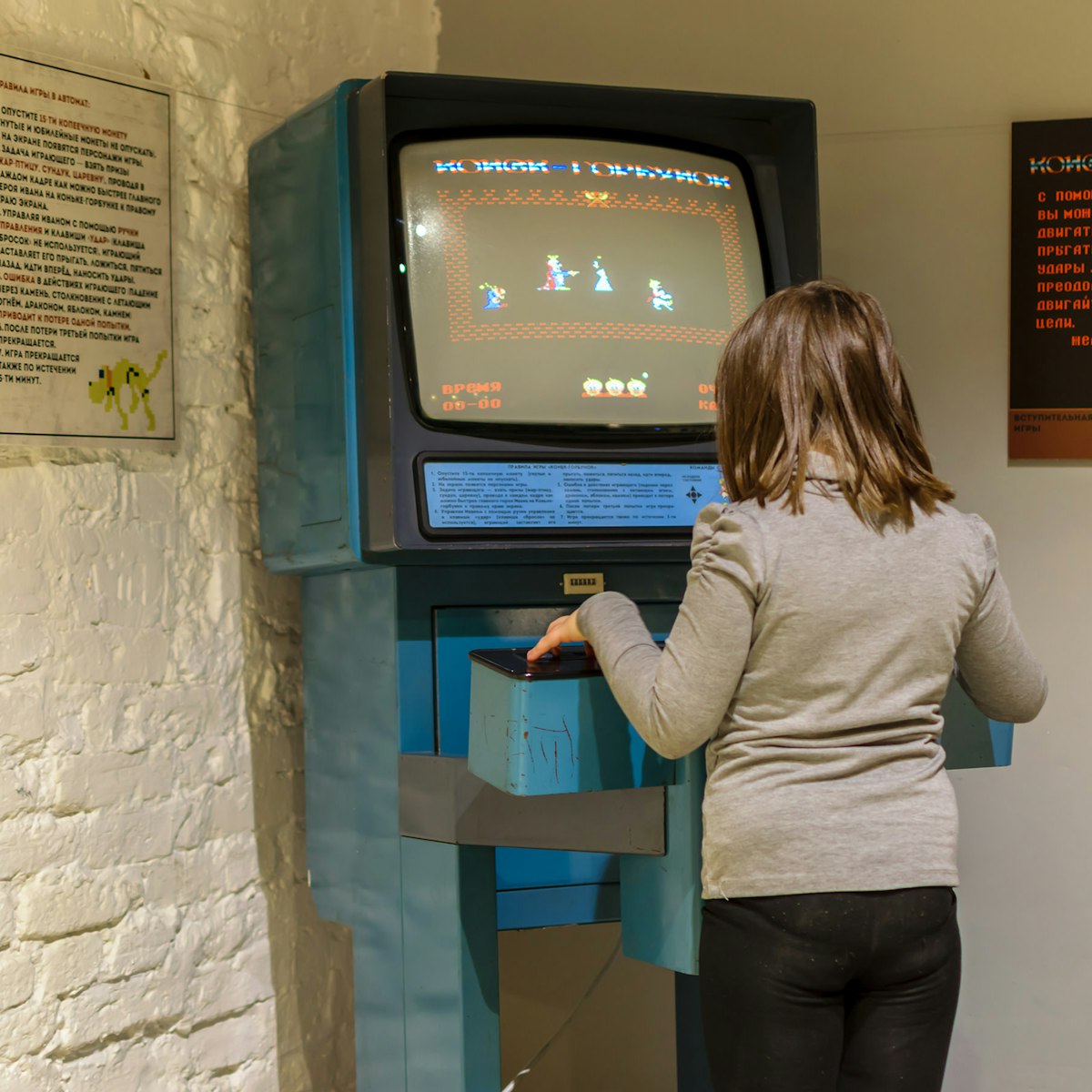
Museum of Soviet Arcade Machines
Growing up in 1980s USSR was a peculiar, but not necessarily entirely bleak experience. Here is an example – a collection containing dozens of mostly…
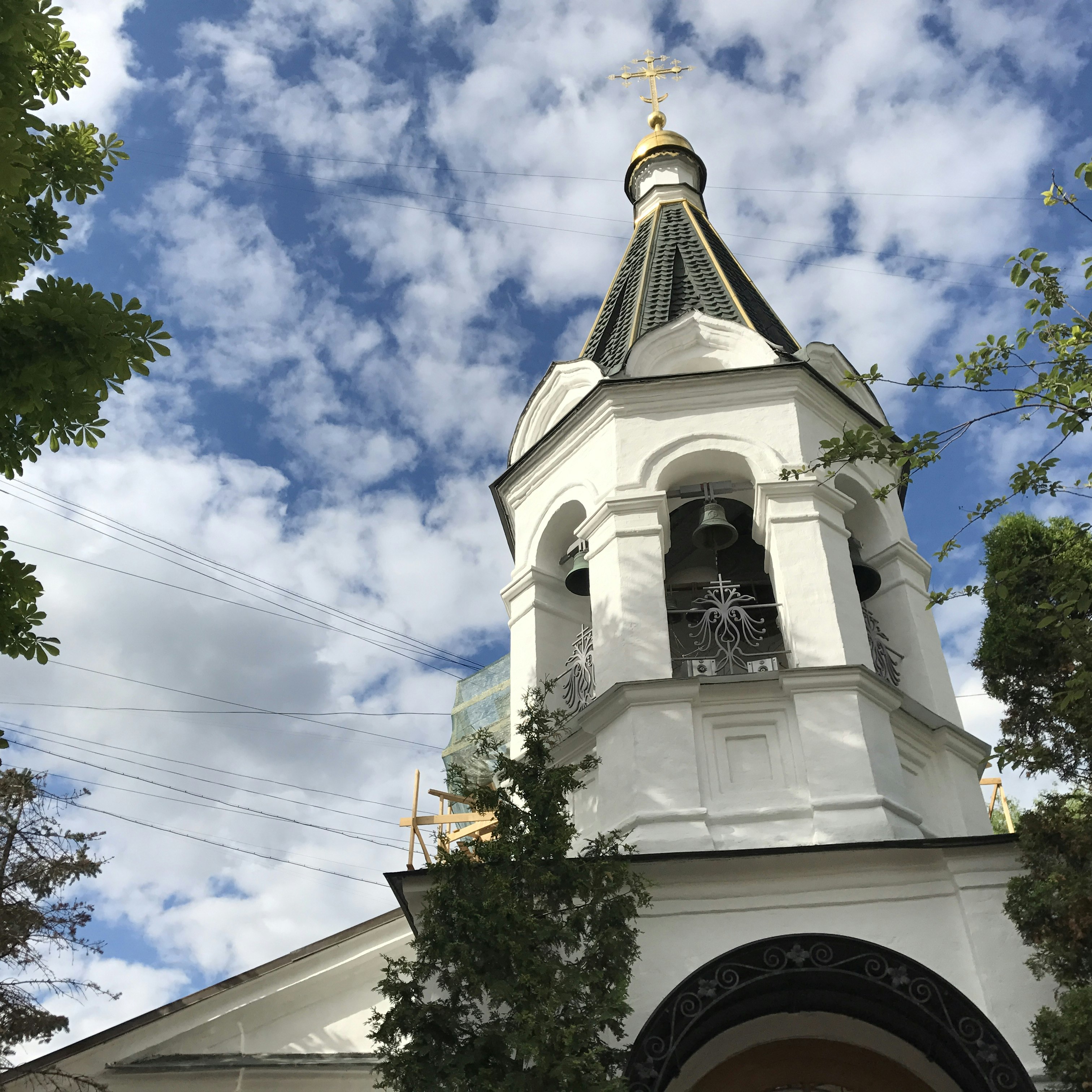
Ascension Church
Overlooking the river, the Ascension Church, sometimes called the ‘white column’, is Kolomenskoe Museum-Reserve's loveliest structure. Built between 1530…
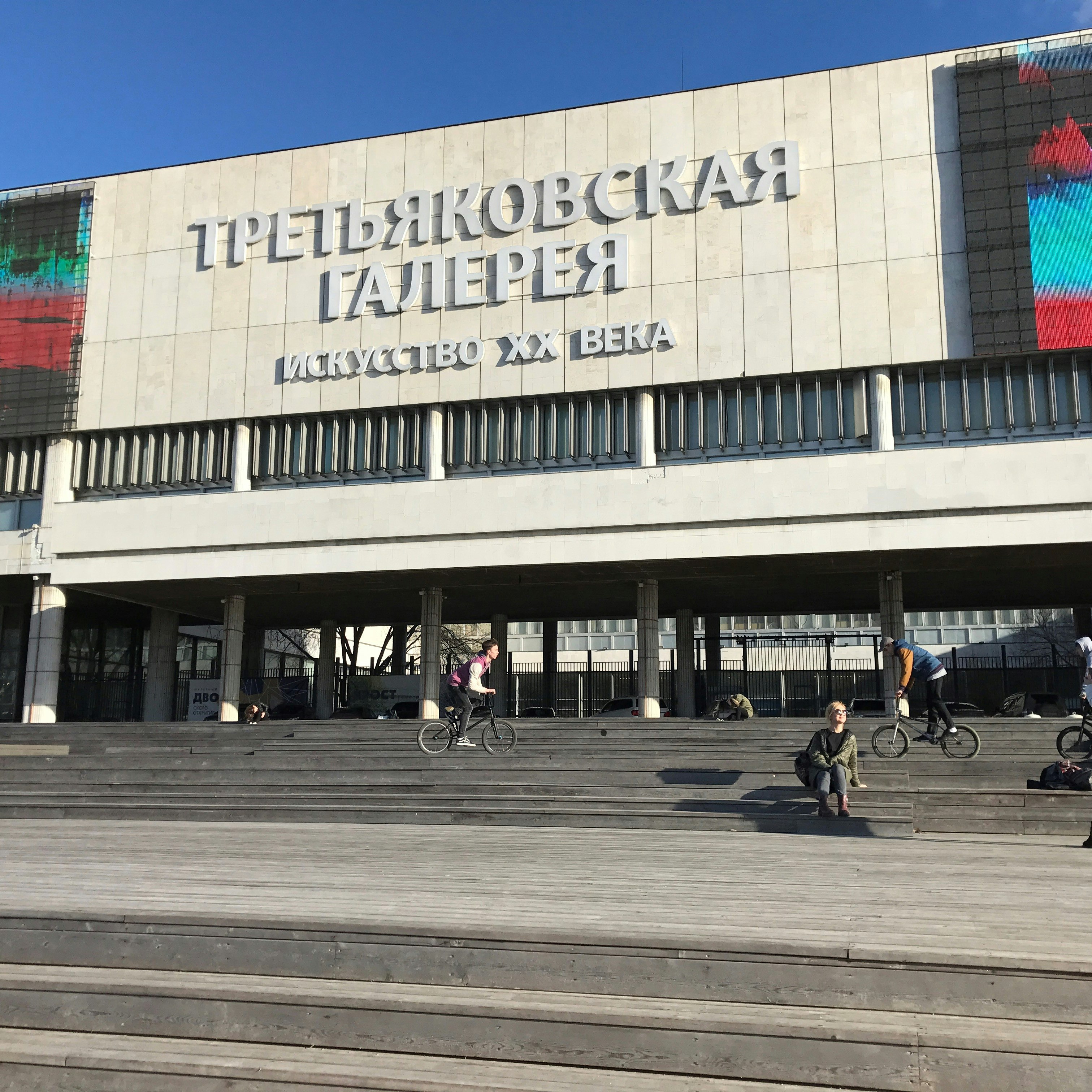
New Tretyakov Gallery
Moscow's premier venue for 20th-century Russian art, this branch of the Tretyakov Gallery has much more than the typical socialist-realist images of…
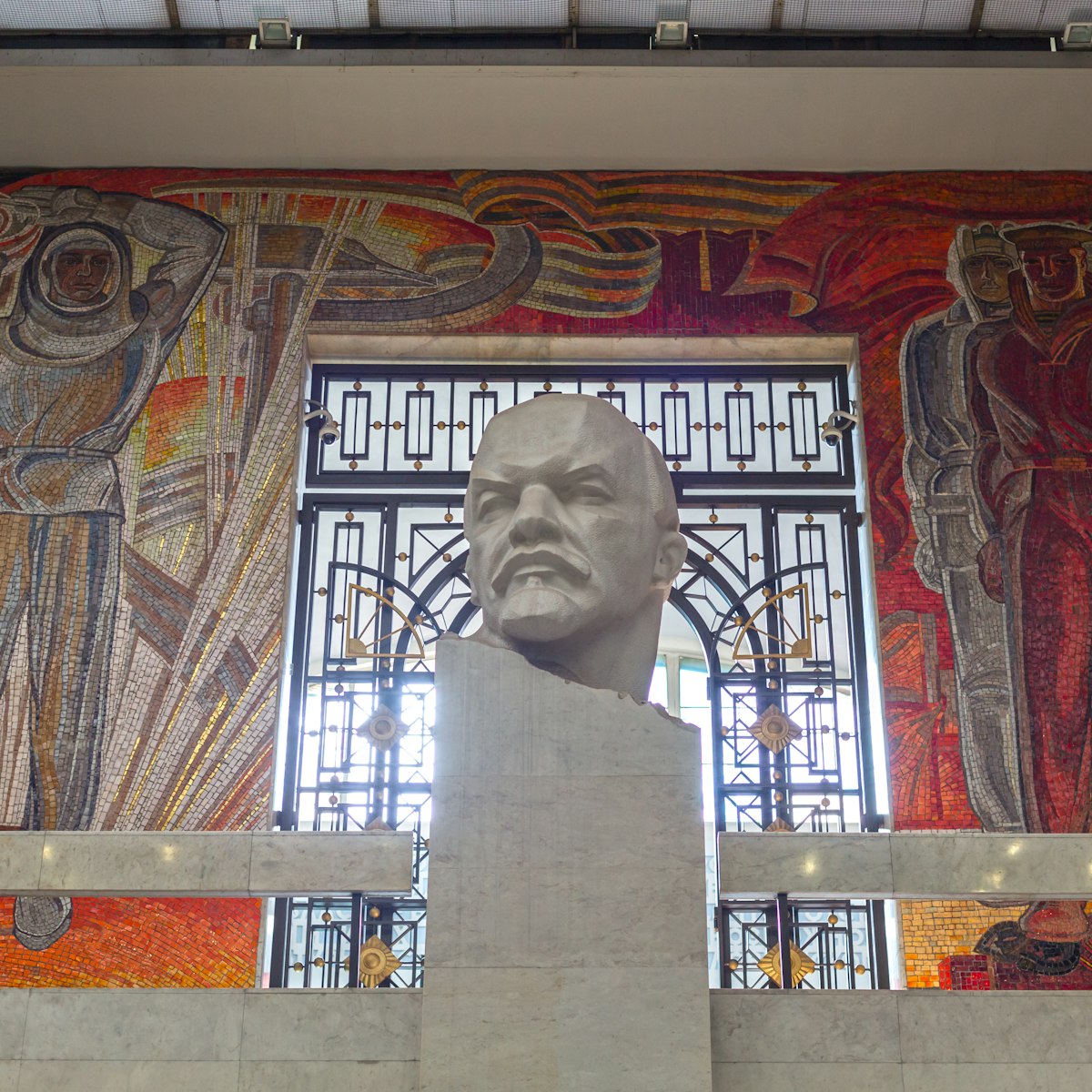
Central Museum of the Armed Forces
Covering the history of the Soviet and Russian military since 1917, this massive museum occupies 24 halls plus open-air exhibits. Over 800,000 military…
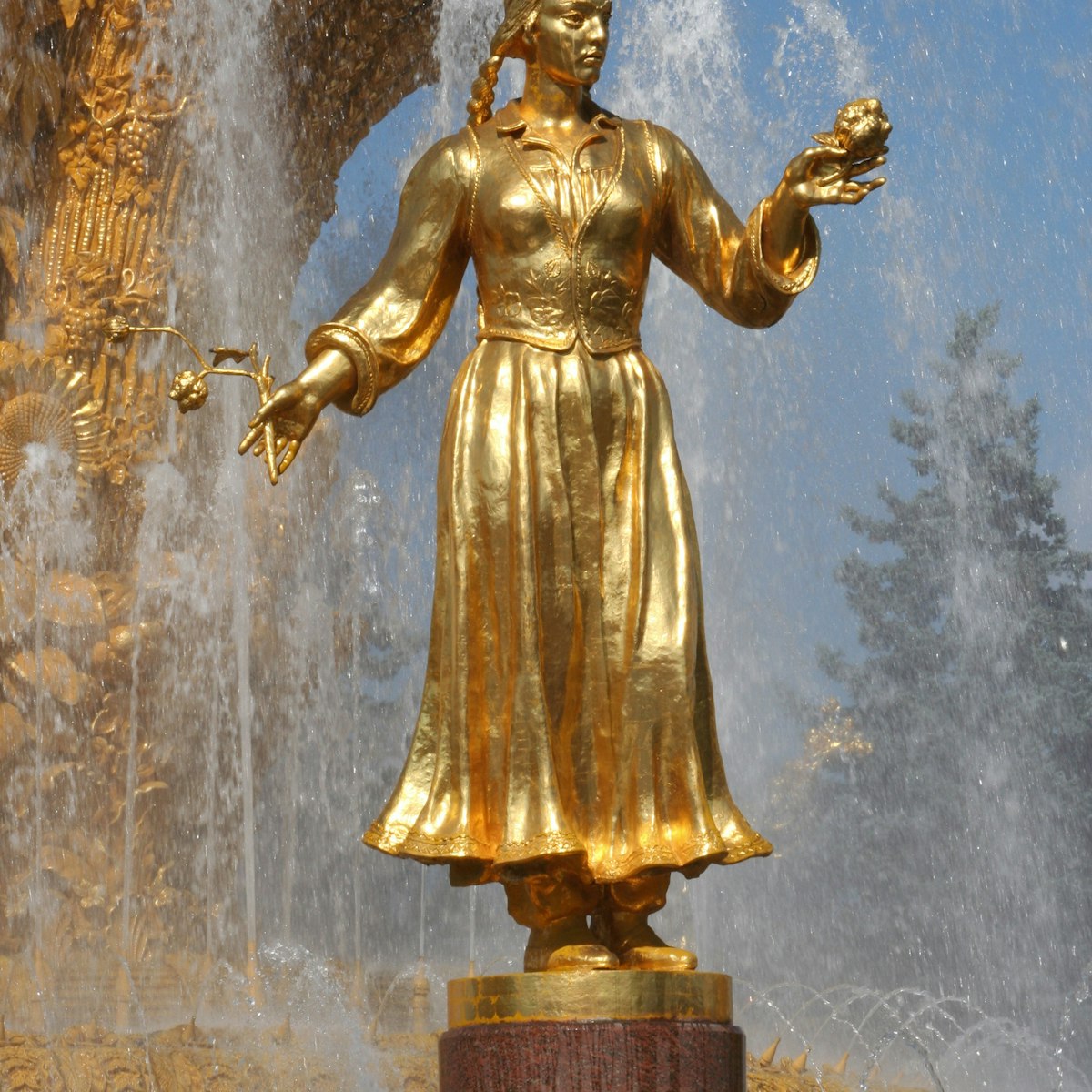
Palaces for workers! There is no better place to see this Soviet slogan put into practice than at VDNKh, which stands for Exhibition of Achievements of…

Archangel Cathedral
The Archangel Cathedral at the southeastern corner of Sobornaya pl was for centuries the coronation, wedding and burial church of tsars. It was built by…
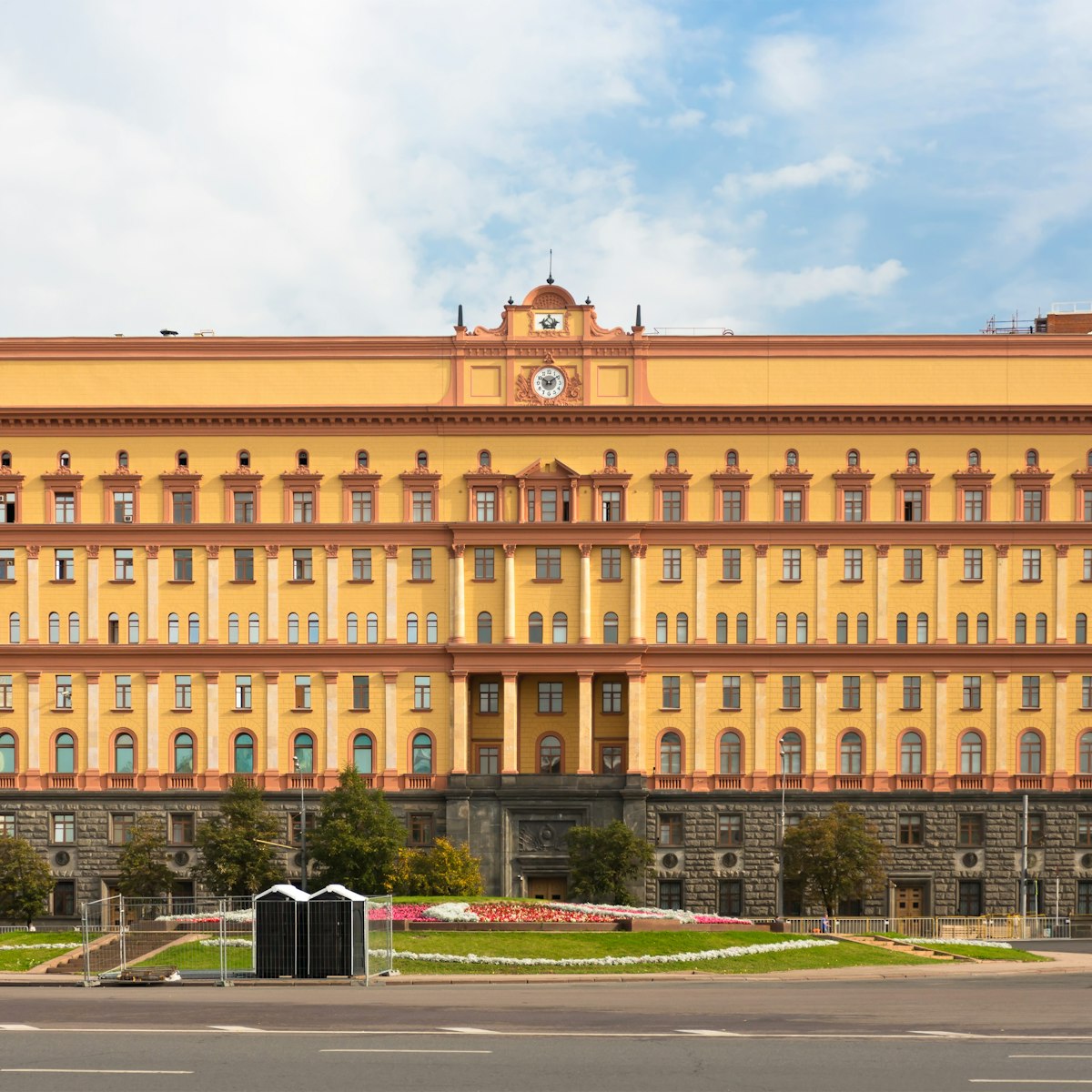
Easily the most feared edifice in Russia, looming on the northeastern side of Lubyanskaya pl is the brain centre behind Stalin's genocidal purges and the…
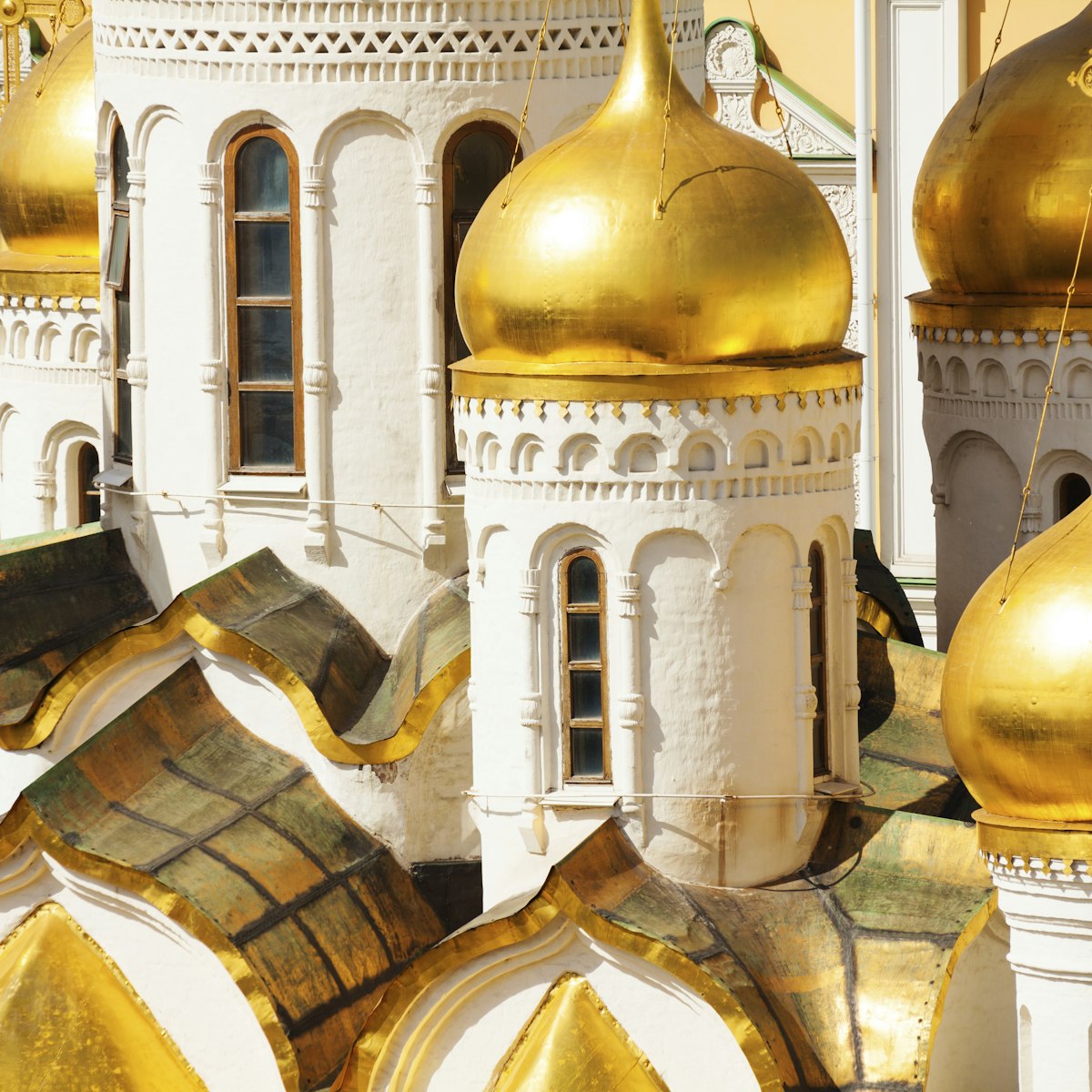
Annunciation Cathedral
The Annunciation Cathedral, at the southwest corner of Sobornaya pl, contains impressive murals in the gallery and an archaeology exhibit in the basement…
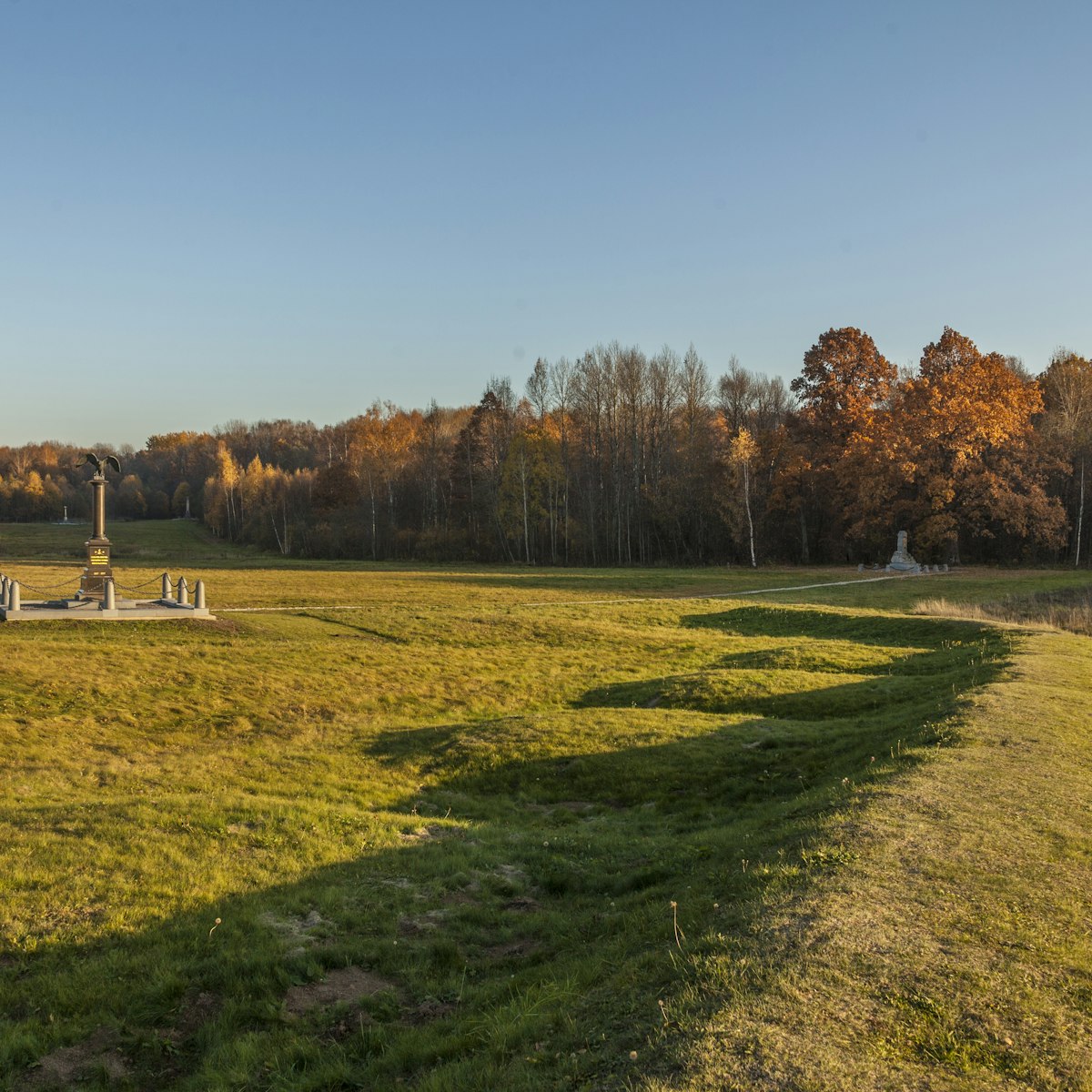
Borodino Field
The entire battlefield – more than 100 sq km – is now part of the Borodino Field Museum-Preserve, its vast fields dotted with dozens of memorials to…
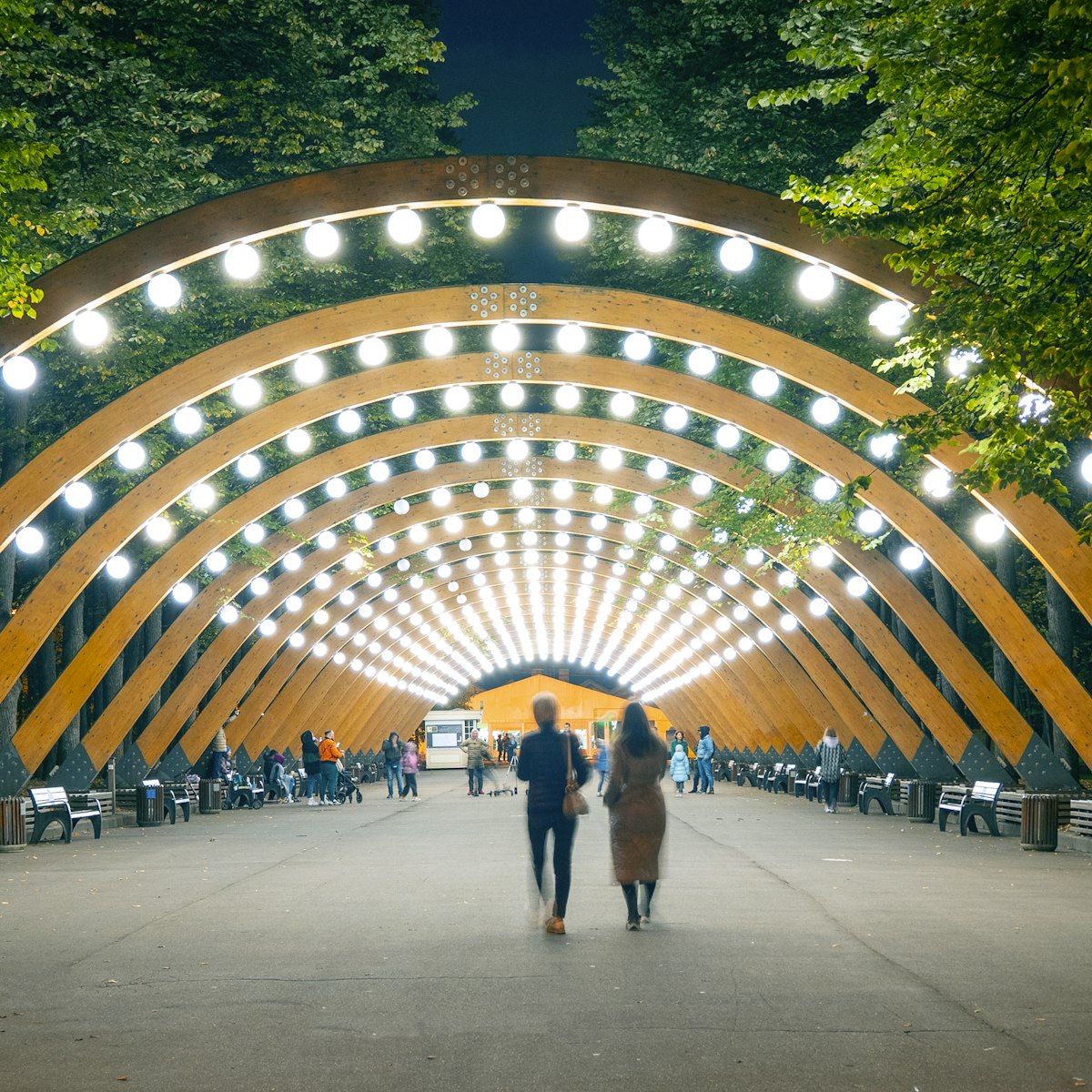
Changed beyond recognition in recent years, Sokolniki park is criss-crossed by cycling paths, and blends into a proper forest bordering on Losiny Ostrov…
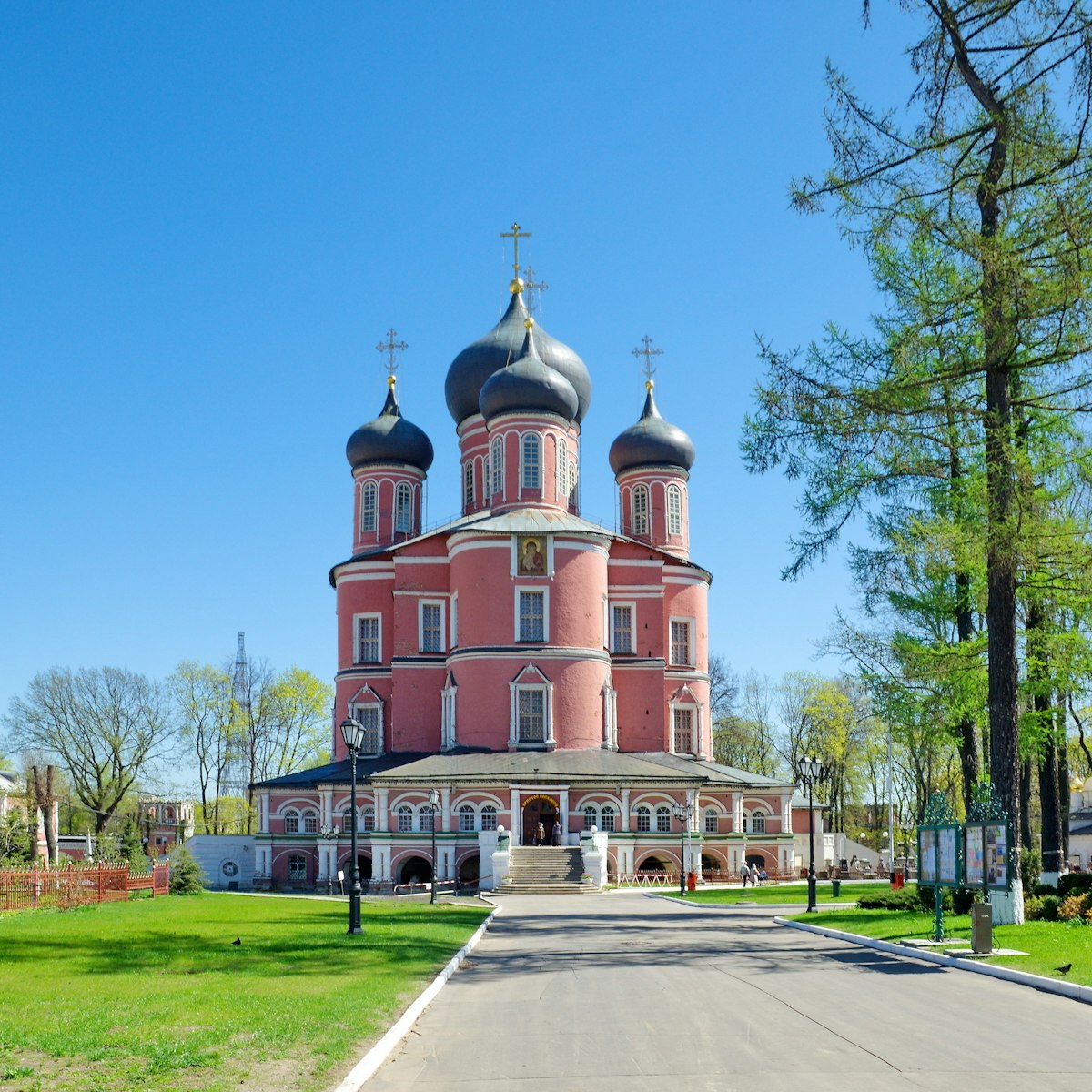
Donskoy Monastery
Moscow's youngest monastery, Donskoy was founded in 1591 as the home of the Virgin of the Don icon, now in the Tretyakov Gallery. This icon is credited…

Park Zaryadye
Moscow's first new park in 50 years, Zaryadye was inaugurated in 2017 and occupies a prominent site along the Moscow River, wedged into historic Kitay…
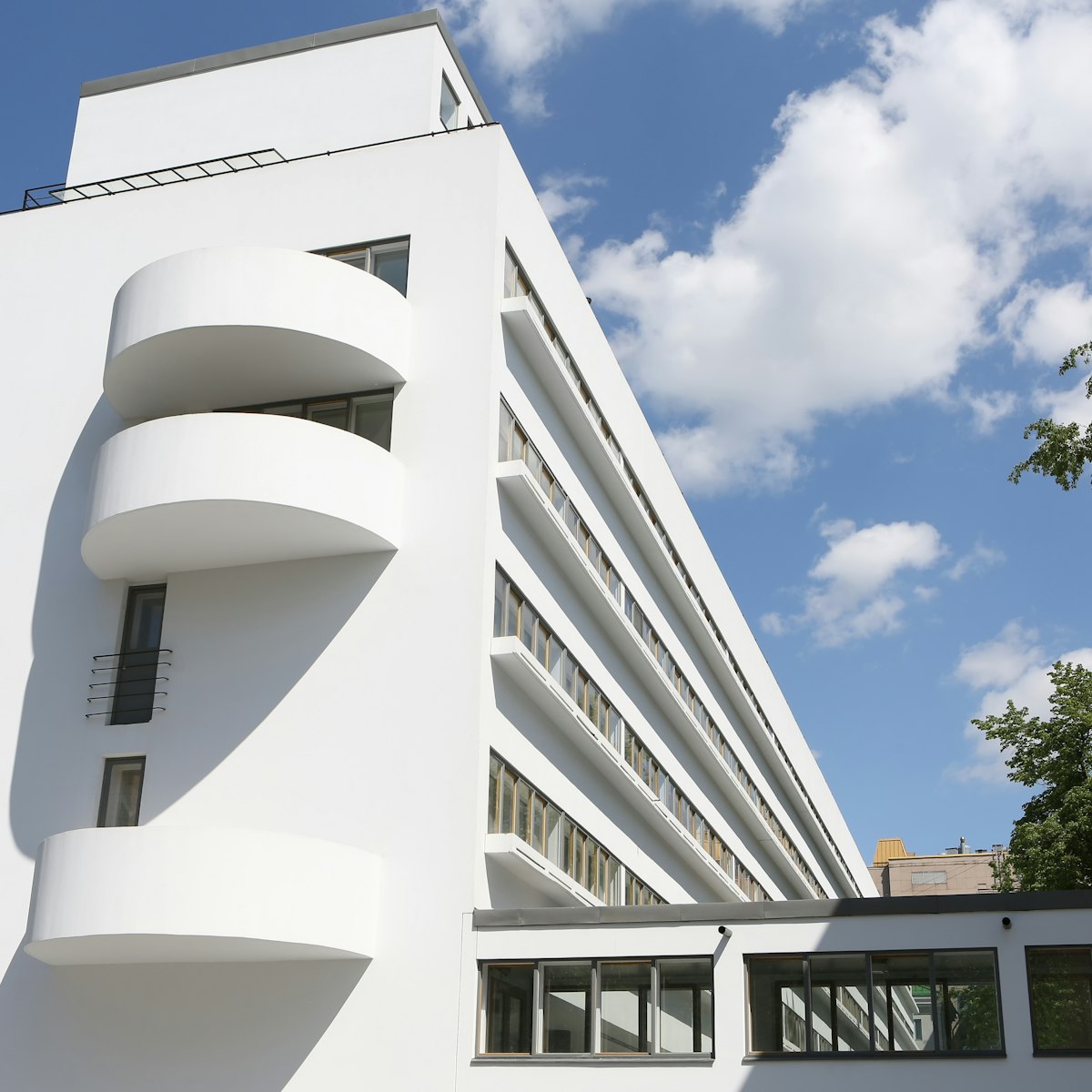
The model for Le Corbusier’s Unité d’Habitation design principle, this architectural landmark was an early experiment in semicommunal living. Designed…
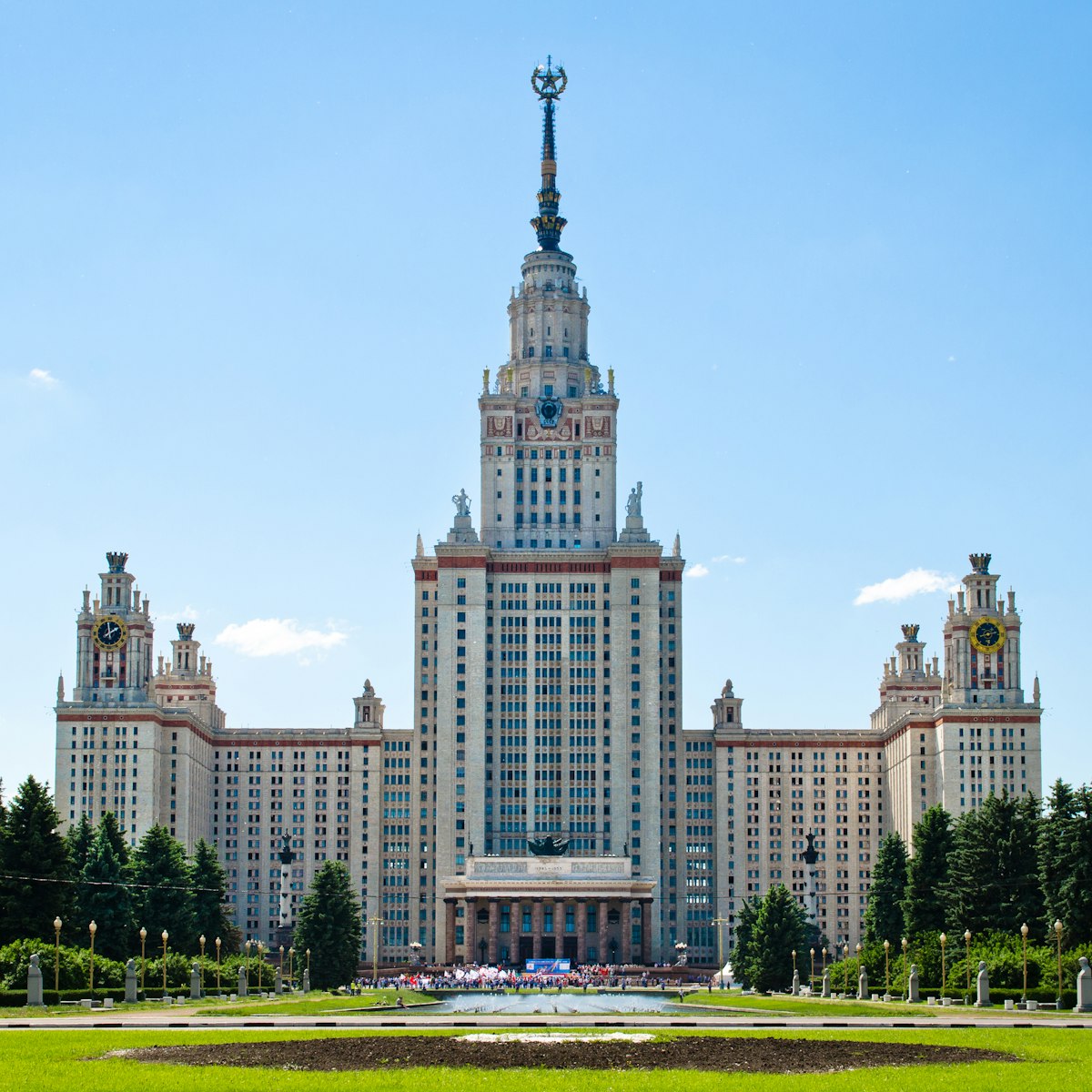
Moscow State University (MGU)
Head to the hills south of the city for one of the best views of Moscow. From the square in front of Moscow State University, most of the city spreads out…
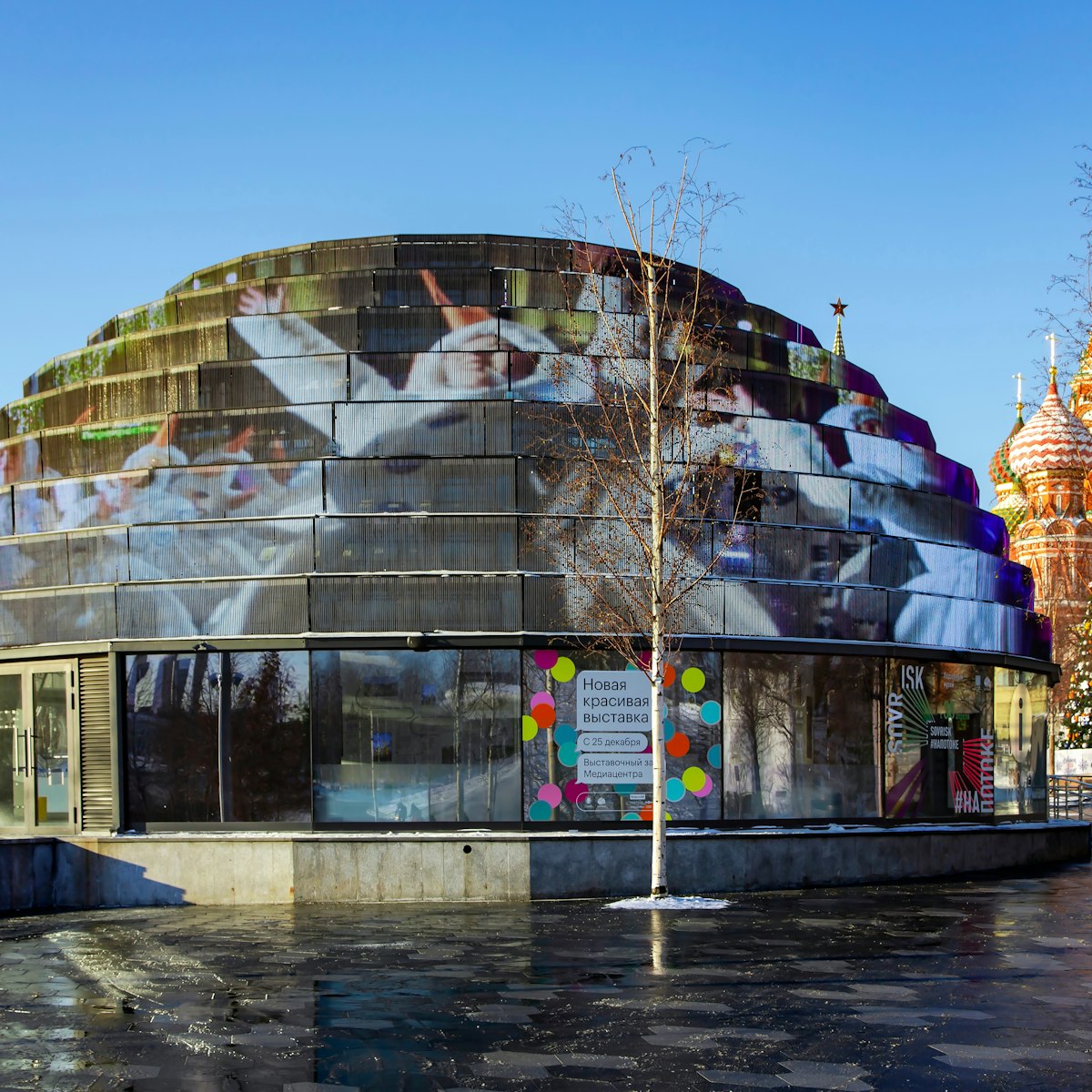
Park Zaryadye Pavilion
This glass-dome pavilion was the first element of Park Zaryadye to open to the public. A creation of Sergei Kuznetsov, the pavilion was designed as an …
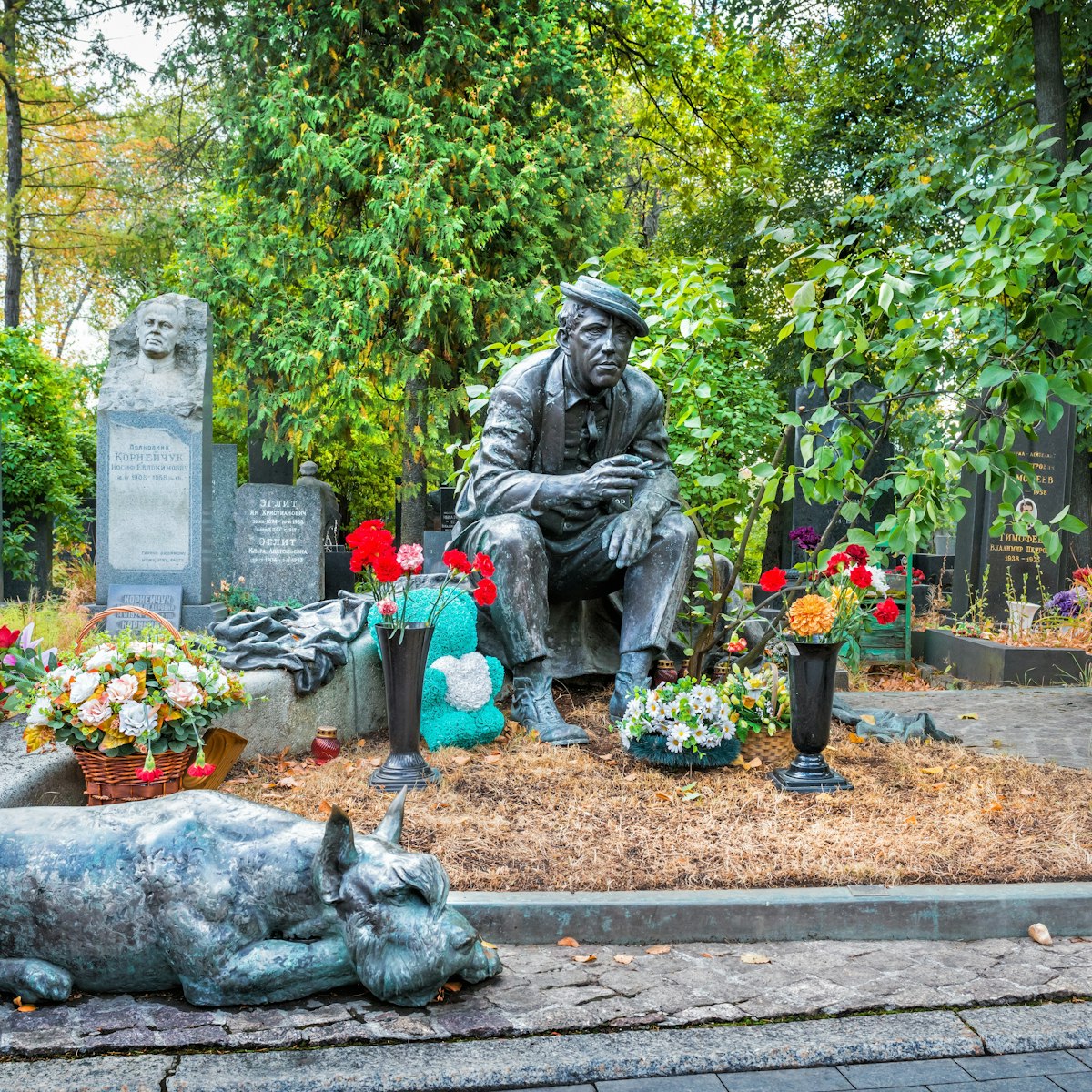
Novodevichy Cemetery
Adjacent to the Novodevichy Convent, the Novodevichy Cemetery is one of Moscow’s most prestigious resting places – a veritable who’s who of Russian…
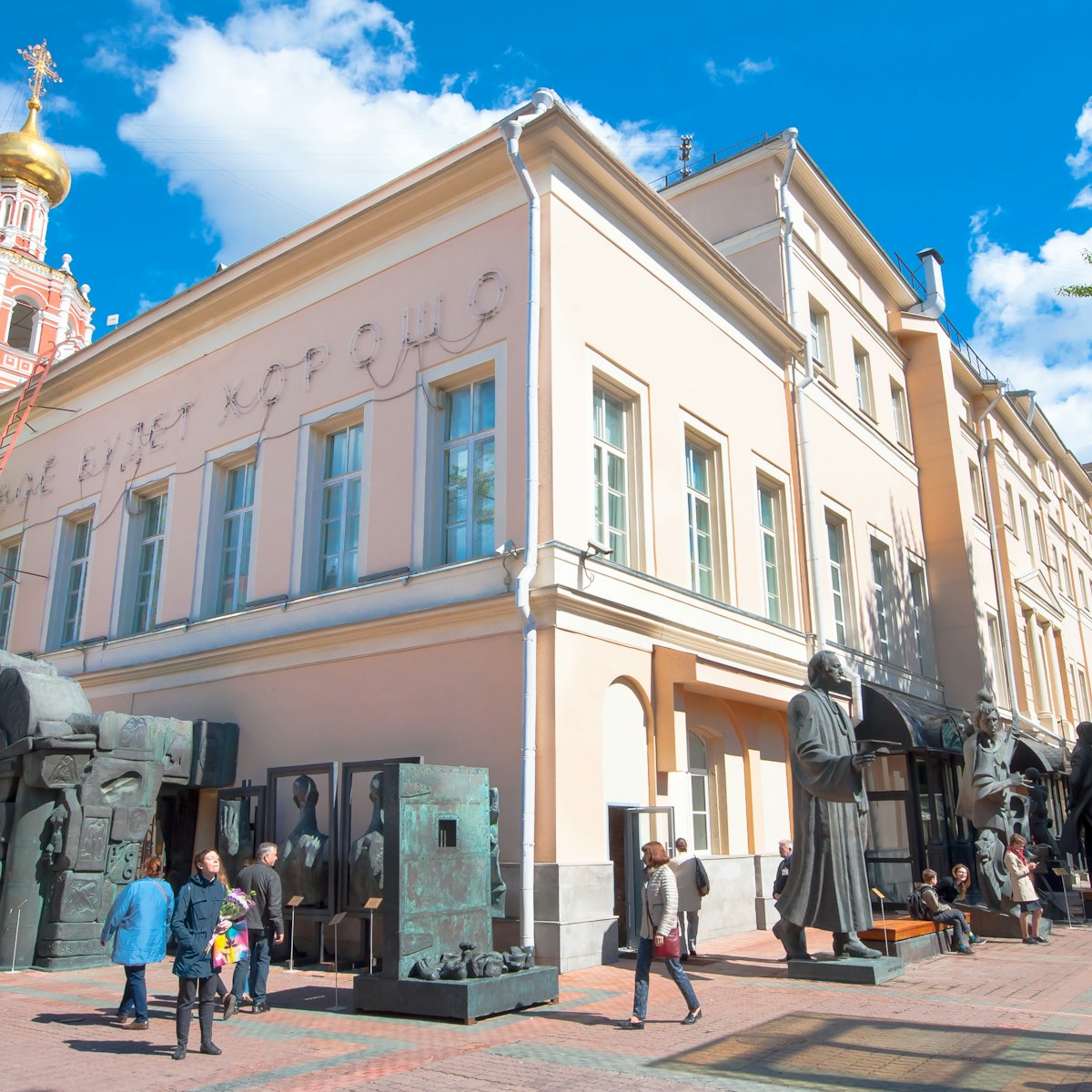
Moscow Museum of Modern Art
A pet project of the ubiquitous artist Zurab Tsereteli, this museum is housed in a classical 18th-century merchant’s home, originally designed by Matvei…
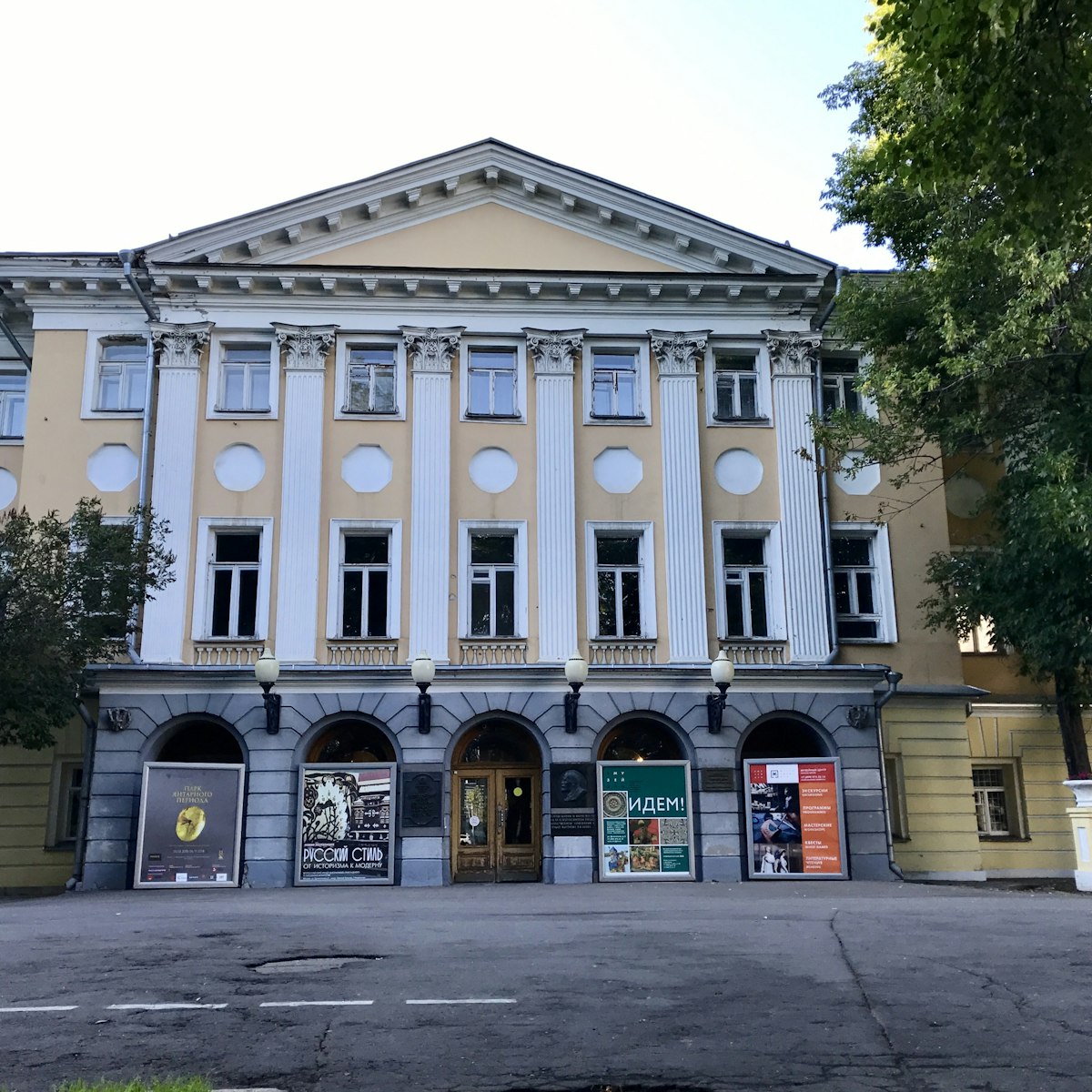
Museum of Decorative & Folk Art
Just beyond the Garden Ring, this museum showcases centuries-old arts-and-crafts traditions from around Russia and the former Soviet republics. Of the 40…
More destinations you need to see
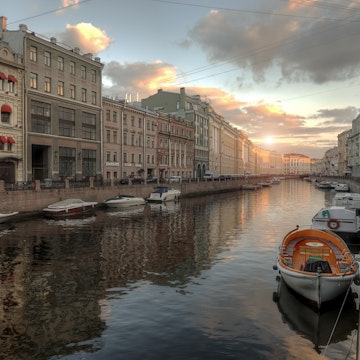

- Market information
- Religious Tourism
- Market Potential
- Share this on:
The European market potential for religious tourism
The religious tourism market covers a broad range of tourism products, including pilgrimage trips, visiting sacred sites, church tourism, travel for worship and religious missions. While a large part of European residents are Christian, halal tourism has been growing in the last few years, as well as the demand for spiritual tourism. Important target markets in Europe include Germany, the United Kingdom and France. The COVID-19 pandemic has had a great impact on the religious tourism market.
Contents of this page
- Product description
- What makes Europe an interesting market for religious tourism?
- Which European countries offer most opportunities for religious tourism?
- Which trends offer opportunities on the European religious tourism market?
1. Product description
Religious and spiritual tourism refers to travel for religious or spiritual purposes, such as undertaking a pilgrimage and visiting sacred sites. Also known as sacred or faith tourism, it is one of the oldest forms of tourism. Religious tourism is a niche within the segment of cultural tourism , comprising four specialist niches: pilgrimages, visiting sacred sites, church, mosque and temple tourism, and travel for the purpose of mission or worship.
Table 1: Specialist niches of religious tourism
Many tour operators combine various of these specialist niches. For example, Pilgrim Tours offers pilgrimages, naturally, but also trips involving visiting sacred sites and churches.
Travellers who visit religious sites can be divided into two main target groups: believers and non-believers. Both are important target groups, but they require different approaches.
Believers seek spiritual support or reinforce their religious beliefs. Often, they undertake a pilgrimage for religious reasons or for the purpose of worship. Examples of these kinds of trips include the Hajj to Mecca for Muslims, pilgrimages to Jerusalem or the Vatican for Christians, and traveling to Bodh Gaya for Buddhists. Most religious tourists are very motivated to travel, so they are willing to spend more money than the average traveller. This inherent motivation also makes religious tourism less vulnerable to economic lows. Believers like to travel in groups of like-minded people.
Nonbelievers
Non-believers are attracted to sacred sites, churches, mosques, synagogues and other places of worship, not because of their religious value, but for their cultural significance, architectural importance, aesthetic beauty or historic value. Non-believers may be religious, but religion is not their main purpose for traveling. Some non-believers who seek self-improvement by travelling to religious sites require some form of catering geared to offering a spiritual experience with the destination. Collete’s faith tours are an example of putting this idea to work, offering travel to sites and places of religious significance, supplementing the trip with a spiritual angle related to the place.
For most developing country operators, Europe’s non-believers offer a much bigger market than believers because a very large part of European believer travellers already go to the Middle East.
Religious tourism can be considered a high-quality form of tourism, because of the positive payback for the destination’s culture and society. This form of tourism helps to raise awareness of people’s common heritage s, which helps with their preservation, in addition to the financial gains that can eventually be reinvested into conservation of the local culture and religious heritage. Religious tourism is a great source of community empowerment and development as well. The interest of tourists in local values and communities helps in developing a sense of empowerment and pride in the local community, its culture and history. Naturally, religious tourism also contributes to regional economic increase, employment and better quality of life.
Figure 1: Varanasi, a holy city in India that attracts many believers as well as non-believers
![faith tourism [Click and drag to move] ](https://www.cbi.eu/sites/default/files/styles/image_middle/public/2020-10/2020%20CBI%20PFS%20Religious%20tourism%20Figure%201.jpg)
Source: TourmyIndia
- Be aware of the religion aspects in a specific destinations, and make sure to take into account all aspects of its aspects, especially habits and believes. This includes anything from food to the time of certain events, to the music played, to religious calendars. If not all parts of your product are well established and connected, you may lose customers.
- Look into tour operators that organise faith trips to see what their needs are: Globus Faith focuses on Christians, Dham Yatra on Hinduists, and Asia Buddhist on Buddhists.
- Regularly organise meetings with your local community to make sure that everything is in order. Support from the local community requires full integration and engagement with tourism.
- Cooperate with other religious sites, tourism agencies and cultural routes, in order to create a better product aligned to related business. This also provides opportunities for making a product that can be combined with others. Creating a hiking trail, for example, can connect multiple activities and accommodations, such as the kora around Mount Kailash in Tibet .
- Contact European churches or Christian missionary organisations to attract Christian missionaries. These purpose of these travellers is to contribute for the sake of religion, but many will also make use of the trip to see your country. Use the websites Missionfinder and Mission Africa to find some missions in your country.
Religious sites and places of worship are important meeting grounds for different kinds of visitors and hosts. Tourism breaks down cultural and religious barriers and builds bridges between people and communities. This results in better cross-cultural understanding, which improves social cohesion. Tourism businesses should appreciate and understand possible conflicting ideologies, underlying deeper meanings and forms of interaction with religious sites, which may conflict with the socioeconomic and political norms of the parties concerned.
In order to maintain religious tourism sustainable, two criteria must be met:
- preservation of the religious sites or monuments
- upholding respect to local traditions and religious practices
The main reason for making a trip can be religious, but visiting a religious site or place of worship can also just be part of another trip, or it can provide additional attractions to a specific destination. The level of religious tourism can be anything from small scale, visiting specific places of worship (temples, altars, etc.), to medium scale, such as visiting Mecca, Jerusalem or the Vatican, and even large scale, such as visiting Israel as a whole.
- As there are many forms and levels of religious tourism look at what is already available nearby to see if you can add something to it. There doesn’t necessarily have to be a religious site nearby to justify a religious tourist attraction. Look, for example, for any artefacts or other historical facts that relate to the place and focus on that. An example of this in England is called ’ champing ’, which means camping in churches. Remember, however, that different religions have different values, rules and standards. It is therefore necessary to acknowledge and respect those differences, as well as give everyone the freedom to think and express what they want.
- In order to compete effectively in the religious tourism market, use faith in your product name and other branding, making it easily recognisable with signs and marks. Branding helps to enhance connection with the place, create desired perceptions and generally attract people to the place.
- Remember that different tourists require different information and see different things based on their motivations. Try to customise your tour or information guide according to your customers by making it diverse or by having multiple versions.
- Be creative about possible streams of revenue. Among the many goods and services related to religious or spiritual tourism, consider souvenir items, religious books, outlets for halal or kosher food, faith-based music, spiritual or faith-based centres in local communities.
2. What makes Europe an interesting market for religious tourism?
The global market for religious tourism is one of the biggest tourism segments. In 2018, an estimated one-third of 1.4 billion international tourist arrivals travelled for religious purposes. This means that approximately 450 million international trips were made for religious purposes. The popularity of faith-based tourism cannot be understated, as even 25% of travellers are interested in this kind of tourism.
For many countries, religious tourism around its historical and religious heritage is a significant part of their total tourism market. Saudi Arabia, for example, received 13 million religious tourists in 2019, and is expected to more than double this number to 30 million visitors by 2030. In the state of Gujarat, in India, almost 36% of all of tourist visits are spiritual tourists . The religious tourism market in Brazil is one the largest tourism segments in the country, estimated at €14 billion generated by 20 million trips.
The COVID-19 pandemic is expected to affect every tourism segment. All markets are expected to decline, since virtually all attractions and accommodations had to be closed at least temporarily. The European overall outbound tourism market is expected to shrink by 39% in 2020, then return to the same level of 2019 in 2021. Of course, these estimates heavily depend on the duration and impact of the pandemic.
In one example of how the pandemic is affecting religious tourism, in the southern governorates of Iraq, this segment is reported as the second-largest source of income after oil. Normally, religious tourism generates billions of dollars and creates thousands jobs in Iraq every year, but in the city of Najaf, which used to host approximately 5,000 visitors a day, 300 out of 350 hotels are closed. The impact of the COVID-19 crisis is already noticeable in Mexico as well, where millions of religious travellers are normally expected, but most religious sites have been sitting empty this year.
- Read our study on how to respond to COVID-19 in the tourism sector to learn what you should do if your company is affected by the pandemic.
- Focus on tour operators instead of targeting free independent travellers directly. Due to the COVID-19 pandemic, European tourists will be far more interested in buying from tour operators in the coming years, because they provide a feeling of security.
- In order to keep religious sites accessible, create a virtual visit of your destination. The Vatican , churches, mosques and other religious sites and places of worship already See other examples of virtual tours on the Rome Reports website.
- Improve online visibility by using social media, interactive website and blogs. We also recommend investing in trying to improve your Google ranking, following tips from the website of Neil Patel or Google’s SEO Starter Guide .
- Make sure that sites and routes in your location are easily accessible for people with reduced mobility. Make sure to mention it upfront in case you have any places which might prove difficult for some people to access. The website of the United Nations offers more information and links to resources on how to promote accessibility at your destination.
3. Which European countries offer most opportunities for religious tourism?
Although Christianity is the most prevalent religion in Europe, it is split into different branches and churches, and those also vary among European countries. Table 2 shows demographic data on religion in the most important European source markets for religious tourism: Germany, United Kingdom, France, Italy, Spain, and Netherlands. Most of these source markets offer opportunities for Christian pilgrimage and travel for the purpose of worship, as well as visiting sacred sites and tourism to places of worship for non-believers.
Table 2: Percentage of the population per religious movement
Source: European Union , 2019
The percentage of Christians in the German population is one of the highest in Europe: approximately 60%, which means that Germans are relatively fast drawn to other religious sites when they are on vacation. The number of Muslims in Germany is relatively high, comprising 4% of the country’s population.
With approximately 82 million citizens, Germany has the largest population in the EU. The country also has the largest GDP in the EU, and fourth in the world: €3.3 trillion equivalent to €50 thousand per capita. In addition, Germany also has the largest EU market for outbound travel . Germans spend on average €2,500 on their summer holidays, which is approximately 25% more than the European average. All of this makes Germany a great target market for religious tourists. Due to the COVID-19 pandemic, the German GDP is expected to shrink by 7% in 2020, then grow 5% in 2021.
In 2017, German travellers made 10 million trips to developing countries. According to Europ Assistance, German travellers find discovering new cultures very important , as 37% see exploring new cultures as an interesting aspect of their holiday. Since religious tourism for non-believers and cultural tourism overlap in many ways, destinations in the developing world where local customs have religious origins can benefit from this interest.
Table 3: German travellers long-haul destinations, 2017
Source: Reiseanalyse , 2020
When trying to attract German tourists, you need to offer plenty of information. German tourists tend to read a lot before choosing to visit a place. They are, like most Europeans, direct in their communication, and are well known for their tendency towards organisation and punctuality.
Table 4: Key statistics on the attitude of German travellers towards tourism
Source: EU, 2016
United Kingdom
The potential religious tourism outbound market of the United Kingdom is significant as well. With a population of 66 million and a gross domestic product of €2.3 trillion, the United Kingdom is it the fifth-largest economy in the world and the second in Europe. With a GDP per capita of €44 thousand per year, the British have less to spend than the Germans. Due to the COVID-19 pandemic, the British GDP is expected to shrink by 6.5% in 2020, then grow 4.7% in 2021. The UK officially left the European Union on 1 February 2020 (Brexit), but the country remains in the EU common market, under the same EU rules, during a transition period that goes until 31 December 2020. At this moment, it is still unclear what will happen afterwards, as the EU and the UK negotiate the post-Brexit terms.
Although the British economy is smaller than Germany’s, British travellers have a higher preference for destinations in developing countries than German travellers. British travellers find discovering new cultures very important , as 52% sees exploring new cultures as an interesting aspect of their holiday, which is an important indicator of interest in religious tourism. British travellers spend on average €2,100 on their summer holidays. Turkey (1.6 million trips), Thailand (1.0 million trips) and India (1 million trips) are the most important developing country destinations for British travellers, who tend to speak only English and no other foreign language.
The United Kingdom is one of the main sources of religious tourism in Uttarakhand, India.
Table 5: Key statistics on the attitude of British travellers towards tourism
France is the world’s fifth-largest outbound tourism market , so it naturally offers good opportunities. Israel is a destination particularly in demand among the French, who are second in the number of visitors to Israel. France has almost 31.5 million Christians, who make up 47% of its population, and are therefore are a great target group for religious travel operators. France also has the largest population of Muslims in Europe at 5.72 million, equivalent to 5% of the total French population.
France has the third-largest population in the EU, with approximately 65 million people. It is also the EU’s third-largest economy and the seventh-largest in the world, with a gross domestic product of €2.5 trillion (2019). Due to the COVID-19 pandemic, the French GDP is expected to shrink by 7.2% in 2020, then grow by 4.5% in 2021.
Regardless of the duration, 46% of French travellers favour packages holidays (excluding all-inclusive packages). Most holidays are purchased online in France, via providers such as tour operators and airline companies (33%) or private housing (25%). The French prefer to spend their holidays with friends and relatives (long holidays 27%, short holidays 35%) or in paid accommodation, such as hotel, B&B, cruise or a youth hostel. Friends, colleagues and relatives provide the most important source of information when the French plan for their holidays (57%).
The GDP of Italy is the fourth largest in Europe at almost €2.1 trillion. The COVID-19 pandemic is expected to shrink Italy’s GDP by 9,1% in 2020, but it will then grow again to 4.8% in 2021. Among the 60 million Italians, an overwhelming 85% are Christian . The outbound tourism market of Italy amounts to €30 billion annually. Italian travellers prefer culture over nature and have a relatively high preference for discovering new cultures . According to Europ Assistance, 34% of Italian travellers see it as an interesting activity during holidays, which suggests that Italians are also interested in religious tourism, such as visiting religious sites, churches and other places of worship. Italian travellers do not often plan their trips too far in advance.
Spain itself has some of the most popular religious sites and places, like Santiago de Compostela. Religious tourism is very popular in Spain, but the country also has a great outbound market worth €24 billion. Spain’s population of approximately 47 million makes it a large market to focus on when entering the European market. The country’s GDP per capita is €31 thousand. The COVID-19 pandemic is expected to shrink the Spanish GDP by 8% in 2020, but it will then grow with 4.3% in 2021. Spaniards tend to prefer culture over nature: 56% of the Spanish tourists see discovering new cultures as an important aspect of their holiday, which suggests they may also be interested in religious tourism.
Netherlands
The Netherlands has a population of just 17 million, but it has a relatively large GDP of €870 billion, which results in €50 thousand per capita, the seventh largest in Europe . Dutch workers on payroll receive a mandatory holiday pay of at least 8% of their annual salary , which indicates that Dutch travellers have more disposable income to use for travelling. The COVID-19 pandemic is expected to shrink the Dutch GDP by 7.5% in 2020, then grow by 3% in 2021.
- Stay up to date on the effects of the COVID-19 pandemic on the countries you want to target. The CBI study on managing the effect of COVID-19 in tourism offers many good country-specific resources.
- Help educate your guests about local customs and cultures, especially the target group of non-believers.
4. Which trends offer opportunities on the European religious tourism market?
Media influence on destinations in southeast asia.
Influenced by mass media, including Hollywood movies, blogs, books, social media, but also by tourism depictions of particular people and places, South East Asia has seen an increase in the number of spiritual tourists. Combined with the positive effects of spiritual practices, these travellers seek activities that involve meditation, yoga, and other spiritual pursuits. They travel to learn about and practice meditation, such as mindfulness, seeking relaxation, self-knowledge and self-growth. Improvements in tourism infrastructure have increased accessibility to religious sites, boosting popularity, but strategic marketing and development of these sites has helped boost visitor numbers.
Media influence example 1: Eat, Pray, Love
In 2010 the popular movie ‘Eat, Pray, Love’ was released. This movie is about a woman searching for what meaning in life. She visits Italy to discover food, India to discover prayer and Bali, to discover love. The movie has stimulated and changed tourism to those destinations , as more tourists travel for the purpose of worship .
Figure 2: A poster of the movie ‘Eat, Pray, Love’
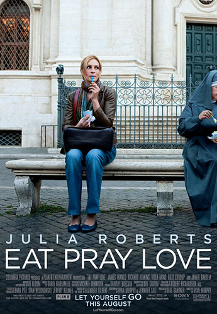
Source: Flickr
- Target spiritual tourism travellers offering new and unique activities. These travellers are often more open new experiences and tours than other religious tourists.
- Read our study on inner wellness tourism , to find more information about this niche market.
- Combine multiple activities into a tour to create a complete spiritual journey. SOTC is an example of a tour operator offering spiritual journeys to India and Bhutan.
- Showcase the immersive spiritual experience to strengthen brand value. Branding creates a perception of a desired destination, also helping travellers to keep your location in mind. Word-of-mouth advertising still is the most successful marketing tool .
Search for authenticity
The search for authenticity is a developing trend among travellers searching for more authentic experiences, such as immersing themselves in the spiritual and cultural traditions associated with specific religions and pilgrimage sites. The immersion often includes participation in or in connection with the local community.
An example of this is a visit to the Dani tribe in Indonesia , combined with other religious sites. Although many Dani are Christians nowadays, they still have many rituals and ceremonies dating from their old animist gods. Note that uniqueness is highly appreciated by European travellers, but it also brings risks. For example, a European tour operator offered tours to the Dani tribe, in which visitors could participate in the religious Dani Pig Feast , including cutting open a pig and eating its raw flesh, which may be too far for European tourists.
Halal tourism on the rise
Islam is the fastest growing religious group globally. Muslims are expected to make up to 25% of the world population by 2030, including a growing and thriving middle class, with increasing buying power. It is important for tourism businesses to meet specific religious requirements, such as preparing food under halal rules, adapting meal times during Ramadan, offering prayer facilities, providing separate swimming pools for males and females and offering entertainment catered to Muslims. Halal tourists often travel with their families and stay for about 17 days .
Looking for the unusual
A growing group of people currently seek more unusual holidays, and more diversification on their travels. Travellers are now not just better informed but overinformed through the internet and social media, so this new group of travellers is seeking something different from the regular tourism destinations the know. What they seek is to see and experience something that they and the rest of the world have not done yet.
In the context of religious tourism, which used to involve a lot of sightseeing, like strolling around Jerusalem or visiting religious archaeological sites, unusual experiences have become far more important. One such example, is a trip to Surinam e to meet people from different religious backgrounds who live together.
- Talk with tour operators, destination managers and clients to learn which services are appreciated and which are not. Offering the unusual is often a balancing act that can work but it can also backfire. Offer your clients sufficient information in advance, so they know what to expect.
- Read our study on community-based tourism to learn more about offering trips to local communities.
- Set up experiences that create added value to a product or service, such as including stories, music, food and other aspects associated with the destination. This trip visiting the Maasai in South Sudan is a good example of an experience that includes local religion, culture, music, and dance. To achieve this kind of product, we recommended that site and destination managers engage a broad range of stakeholders in developing, promoting and managing tourism.
- Invite bloggers or social media influencers free of charge to your destination to reach a larger public. Search for popular bloggers or influencers to see what sorts of trips and tourism products they use, as well as who are their audiences, so you find someone who is highly likely to relate to your destination.
- Keep your own social media channels up to date. Post daily or several days a week on your social media. For more advice, read our study on how to be a successful company online .
This study was carried out on behalf of CBI by Molgo and ETFI .
Please review our market information disclaimer .
Enter search terms to find market research
Do you have questions about this research?
Ask your question
Related research
- What is the demand for outbound tourism on the European market?
- What trends offer opportunities or pose threats on the European outbound tourism market?
- What are the requirements for tourism services in the European market?
- (opens in a new tab) Twitter
- (opens in a new tab) Facebook
- (opens in a new tab) LinkedIn
Tourism Web Portal
About the portal.
A technological tool for effective communication between the leading players in the Moscow tourism market and representatives of the foreign/regional tourism industry through online events. OBJECTIVES: • Building long-term cooperation with foreign/regional representatives • Raising awareness among foreign/regional representatives of the tourism industry of the tourism opportunities, measures and attractiveness of the city of Moscow in the field of tourist infrastructure development
Moscow City Tourism Committee
The Tourism Committee, or Mostourism, is the executive body of the Moscow City Government that oversees tourist activities in the capital. The Committee is responsible for legislative initiatives, congress and exhibition activities, and event and image projects. As the brand manager for an attractive tourism image for Moscow, Mostourism constantly analyses global trends, offers Russian and foreign tourists what they want, and also uncovers new opportunities for the capital in terms of interesting and rewarding leisure activities.
ANO «Project Office for the Development of Tourism and Hospitality of Moscow»
Syundyukova Yulia [email protected] Mezhiev Magomed [email protected]
Video materials about Moscow

90+ Moscow tourist attractions: what to see in Moscow, Russia

A huge list of the best Moscow tourist attractions.
Before the pandemic I used to visit Moscow every year. I would usually go there for a week, and I would still find new places to visit and things to do. Many people don’t realise how huge Moscow is and how many tourist attractions are there. Unfortunately, not all of these fantastic places are maintained, some are abandoned and can be enjoyed from outside only. Still, Moscow has attractions to satisfy the taste and requirements of any tourist and here I have a huge list of more than 90 places.
But let’s start with one of the most famous Moscow landmarks: the Kremlin!
NB : the post is very long, so just go to the table of contents and click on the section that interests you.
The Kremlin and its surroundings
The Kremlin should be in every list of Moscow tourist attractions 😊 You can easily spend a day exploring it and the surroundings.
1. The Kremlin : here you should definitely visit the Cathedral Square with its ensemble of old churches. Their interior is truly amazing with painted icons and graves of famous Russian rulers (in the Archangel Cathedral) – as Ivan the Terrible, for example. You can climb Ivan the Great Bell Tower to see the square from above. Then there is the Armoury Chamber with its huge collection of royal regalia and gifts and everyday objects and the Diamond fund with, well, diamonds and other jewelry.

2. The Mausoleum . Frankly, despite visiting Moscow so many times, I have never been to the Mausoleum. Somehow, the thought of seeing Lenin doesn’t seem appealing to me, but, maybe, you want it. The entrance is free, at least.
3. The Red Square is the first place where every tourist goes. It is the center, the heart of Moscow and many tourist attractions are located there.
4. GUM is a huge shopping center on the Red Square. It is quite expensive, so not so many people go there for shopping. Still, it is a fancy place. In addition, there is a huge supermarket there and the famous canteen Stolovaya 57, so go there for a quick lunch.
5. Kilometer Zero of Moscow is at the Resurrection (Voskresensky) Gates at the Red Square. It symbolises the beginning of all roads in Russia. It is a square with a circle in the center: the edges have depictions of animals.
6. Aleksandrovsky Garden is at the Kremlin walls. It has amazing flower beds, fountains with fairytale sculptures, and there are lots of benches to rest your feet. The garden is famous for the monuments of the wars in 1812 and 1941-1945. And the eternal flame is here.
7. St Basil’s Cathedral is the most famous one in Moscow. Its colourful onion domes are easily noticed from afar. Ivan the Terrible ordered its construction to commemorate the capture of two cities, Kazan and Astrakhan. Now it is a symbol of Russia alongside other notable monuments.

8. Kazan Cathedral is another church on the Red Square. It’s not as lavishly decorated as St Basil’s, but it is a functioning church, so everyone can go inside. It’s not the original church, but a reconstruction: the original one was destroyed by Stalin’s order.
9. Change of guards happens every hour at the eternal flame in Aleksandrovsky Garden. It is quite a show with soldiers marching and music playing and many tourists gather at the spot to see it.
10. Monument to Vladimir the Great is a recent addition to the list of tourist attractions of Moscow: it was mounted in 2016. Vladimir the Great is one of the greatest rulers of Kievan Rus. The monument is 17,5 meters high and is located close to the Kremlin.

Parks and gardens
11. Zaryadye is not far from the Kremlin on the historical Varvarka Street. In addition to being a park, its floating bridge offers spectacular views of the Kremlin, the Moskva River, the Cathedral of Christ the Saviour and one of Stalin’s skyscrapers.

12. Gorky Park : shadowy alleys with benches to rest, fountains with music, a roller-skating rink, a pond with boats: Gorky park has everything! You can rent bicycles, skateboards, rollers, boats, and have some fun!
13. Sokolniki Park is huge and has numerous activities on offer like skateboarding, roller-skating, bicycles, ping-pong tables, a swimming pool, etc. Sometimes concerts and performances are held there.
14. Museon is next to Gorky Park and is famous for its weird sculptures and statues of Soviet rulers.
15. Aptekarsky Ogorod or the Apothecary Garden is the most famous garden in Moscow. It was founded by Peter the Great as a place to grow medicinal herbs, but expanded its collection of plants greatly.

16. Ermitazh Garden is one of the most beloved in Moscow. It was opened in 1894 and offered open-air concerts. Today performances and art exhibitions are held in the park. There are a couple of theaters in the territory and classes for kids.
17. Yekaterininsky Park is a monument to garden art. It has amazing flower beds and a huge pond with boats for rent. There are designated places for doing sports and a covered stage for live performances.
18. Patriarch’s Ponds are surrounded by trees today, but about 300 years ago it was a marshy place. At the end of the 17th century these marshes were dried and three ponds were dug. Later two of the ponds were filled up and trees were planted around the remaining one. The ponds became famous because namely here Mikhail Bulgakov’s masterpiece ‘The Master and Margarita’ starts.
19. Ostankino Park is now a part of VDNKh. It is huge and has plenty of facilities like bicycle tracks, paths for horse riding, open-air gyms, and the biggest open-air skatepark in Europe. Naturally, locals love it and it’s always full of people.
20. Clean Ponds : in the 17th century the place was called ‘Filthy marshes’ or ‘pagan marshes’ (depends on the interpretation). Later it was cleaned and nowadays it is a long pond which turns into a skate-rink in winter. Quite often artists put their paintings alongside the pond for passers-by to see. And there is an amazing song by famous I. Talkov about the place.
Did you know that there are more than 400 museums in Moscow? Of course, you can’t visit them all, so here I have a list of the most well-known and beloved ones in the city.
21. Tretyakov Gallery has several buildings, one of them dedicated to the 20th century art of Russia and the Soviet Union, and the other one to the Russian art at much earlier period till the 19th century. The latter one exhibits Vasnetsov’s, Shiskin’s, Serov’s, Ayvazovsky’s masterpieces. The vaults of the museum house a huge collection of old icons, the majority from the 14th century.
22. State Historical Museum : the dark red building of the museum on the Red Square is hard to miss. It houses huge collections of gold artifacts, manuscripts, jewelry, ceramics, old books, religious paintings, historical costumes, etc. Its coin collection has more than 1,7 million units!
23. Just like Tretyakov Gallery, the Pushkin State Museum of Fine Arts is the right place for art lovers. There are about 700,000 exhibits in the museum collection, including masterpieces of Matisse, Renoir, Picasso, Degas, Rubens, etc. It includes a huge collection of sculptures and archeological objects.
24. The Archaeological Museum of Moscow is an underground museum and is dedicated to the archeological diggings in the city. There are about 2,000 exhibits from the Paleolithic, Mesolithic and Neolithic ages.
25. Moscow Museum of Modern Art . It is the project of the famous Zurab Tsereteli and his private collection is the core of the museum. There are numerous paintings and sculptures by the artists of the 20th century, including those of Picasso, Dali and Miro.
26. State Darwin Museum . This huge museum houses a collection of 400,000 exhibits, mostly stuffed animals. From what I have seen kids enjoy it immensely.
27. The Orlov Museum of Paleontology : as the name suggests, it houses everything related to paleontology. There are more than 5,000 exhibits from the Precambrian, Palaeozoic, Mezozoic and Caenozoic ages: ammonites, reptiles, skeletons of dinosaurs, etc.
28. The Museum of Cosmonautics is not far from the VDNKh and its collection includes technical devices, documents, personal belongings of cosmonauts, pictures, paintings, stamps, coins, etc.
29. The State Museum of Oriental Art was founded in 1918 to preserve the cultural heritage of the Eastern republics of the Soviet Union. Now it houses huge collections of Japanese, Korean, Arabian, Indian art in addition to those of the Soviet republics. In 2017 the famous Russian painter Nicholas Roerich’s collection was handed over to the museum.
30. Bulgakov Museum : the museum is dedicated to the famous writer Mikhail Bulgakov, the author of ‘The Master and Margarita’. It includes about 3,000 exhibits: letters, documents, pictures, furniture and personal belongings.
31. Museum of Soviet Arcade Machines : do you want to play an old Soviet arcade game? Just go to this museum! At the entrance you buy coins/tokens that you can use to play on any machine inside the museum.
32. Victory Museum on Poklonnaya Hill is dedicated to soldiers who fought and fell during the war of 1941-1945. It has several thematic halls, panoramas and a memory book.
33. Military exhibition on Poklonnaya Hill : this is another museum on Poklonnaya Hill and has a huge collection of military equipment, including tanks, planes, artillery, etc.
34. Museum-panorama “Battle of Borodino” : this museum is dedicated to one of the most famous battles of 1812 during the war between the Russian Empire and France. It is interesting that both sides claimed later that they won this battle.
Other places
35. Varvarka Street : there are some magnificent churches on the street and some historical buildings like the Old English Court, the oldest office of another country in Moscow, and the Chambers of the Romanov Boyars exhibiting the residential and household interior of the 16th-17th centuries.

36. VDNKh or the Exhibition of Achievements of National Economy or All-Russian Exhibition Center is one of the most popular places in Moscow. It was built in the 1930-ies to showcase the achievements of the Soviet Union in the field of agriculture. Every building has its own style and was to either represent a Soviet republic or house a specific collection. The highlight is the fountains with famous sculptures like the Friendship of Peoples and the Stone Flower on the central alley. And, I guess, everyone is excited to see the replica of the famous Vostok rocket.

37. Moscow Planetarium is the oldest one in Russia. It houses multiple exhibits and replicas, but my favorite parts are the hall with a huge dome for watching movies and the exhibits on the roof.
38. Poklonnaya Hill : its name can be translated as bow-down hill and the monuments and park on it are dedicated to the victory in the Great Patriotic War (1941-1945). Wait here until it gets dark: the fountains and columns get illuminated with red color, which is a magnificent sight.
39. Monument to Peter I on the Moskva River designed by the famous Zurab Tsereteli is 98 meters high. It is quite noticeable, but while it looks imposing, not everyone likes it. They even wanted to dismantle it and move it to another place, but it proved to be too expensive. By the way, this monument was in the top 10 of the ugliest ones in the world according to Virtual Tourist platform.
40. Krutitskoye Podvorye . This is the place where the spirit of olden times still lives: the buildings are old, it is quiet and cosy here. This courtyard belonged to Krutitsky Metropolitans, and a couple of churches from the 17th century are preserved along with palaces and houses.

41. Izmaylovsky Kremlin . You just have to see the colorful buildings, which replicate terems, houses in the traditional Russian architectural style. The Kremlin is packed with museums, there are several places to eat, so you won’t starve there. The biggest part of the Kremlin is a flea market with dozens of stalls with souvenirs, matreshkas, coins, boxes with traditional ornaments, furs, paintings, clocks, amber, shawls, clothes, books, icons, Soviet times items.

42. Stalin’s Bunker in Izmaylovo was built in the 1930-ies. There is a 17 kilometer long underground road that leads from the bunker to the center of Moscow. There is another bunker in Taganka.
43. Bolshoi Theater is one of the most well-known opera and ballet theaters in the world. It’s located not far from the Red Square, so just take some time to see it. If you are lucky to get tickets, lucky, because you should buy them long in advance, then you will see some of the best performances.
44. Metro tour . Moscow metro is one of the most beautiful in the world, it’s a fact. You can see everything here: stucco, paintings, sculptures, chandeliers, gilded walls, vibrant colours… some stations are true masterpieces! Pay a visit to Mayakovskaya, Kievskaya, Novoperedelkino, Komsomolskaya, Rasskazovka, Elektrozavodskaya, Ploshchad Revolyutsii (Revolution Square), Novoslobodskaya, Novokuznetskaya, Arbatskaya, etc.
45. Trubnaya Square/Tsvetnoy Boulevard is a magnificent place! Just make sure you go there in summer when everything is green and flowers are blooming. The boulevard is famous for Nikulin’s Circus. I have not been to the circus, so I like the boulevard for its park with circus-related sculptures and arches with blooming flowers and the views from the nearby Trubnaya square.

46. Strastnoy Boulevard is one of the most important streets in Moscow. It is a nice area with an alley and monuments. And there are many notable buildings along the boulevard.
47. Arbat is the most famous pedestrian street in Moscow: it starts at Smolenskaya metro station and runs almost till the Red Square. Arbat is full of fancy buildings and restaurants.
48. Alley of the rulers of Russia is a place to see all the rulers at once. It is a small exhibition of busts hidden from the eyes of tourists. When I was there, I saw only three other people around. This is the place to see Ivan the Terrible, Alexander Nevsky, emperors from the Romanov family, Lenin and Yeltsin.

49. Triumphal Arch at Poklonnaya Hill was erected in the 1830-ies to commemorate the victory in the Patriotic War of 1812.

50. Moscow Mosque . The first mosque was built in 1904, but in 2011 it was demolished to erect a new one. Now it is a huge building with vibrant colors and minarets of different sizes. By the way, they used 12 kilograms of leaf-gold to decorate the dome and minarets.
51. In Russia there were many merchant courts ( gostinyy dvor in Russian), where people used to sell their goods. The one in Moscow was built in the 17th century, but it suffered a lot during the years, especially during the siege of Moscow in 1812. Now the building doesn’t house shops anymore, it is used for exhibitions.
52. Eliseyevskiy Supermarket isn’t a simple supermarket, it’s an experience. The interior is amazing, with intricate decoration, columns, chandeliers. Some people visit it like a museum. There are rumours that they want to close the supermarket, because it’s unclear who the actual building belongs to.
53. The teahouse on Myasnitskaya Street is a special building as well. It is easily recognisable thanks to the pseudo-Chinese decorative elements on its facade. At the beginning of the 20th century it was a tea shop and had apartments for rent. Now the first floor is a shop and they still sell tea there.
54. Bogdan Khmelnitsky (Kievsky) Pedestrian Bridge : this pedestrian glass-covered bridge offers stunning views of Moscow. And, naturally, it is more beautiful at night, when the lights are on.
55. Zhivopisny Bridge : this bridge is famous for its bright red arch, which is very photogenic at night.
Panoramic decks
56. Sparrow Hills : this panoramic deck is right in front of the Moscow State University building. From here visitors can see the famous Luzhniki Stadium, Stalin’s skyscrapers, Moscow-City, etc. Getting there requires a bit of effort: first you have to get to Vorobyovy Gory metro station which is under the bridge and then follow a path up the hill. Frankly, it is better to follow the crowd after exiting the station.
57. Deck at the Academy of Sciences is closer to the city center and offers views of Luzhniki Stadium, Moscow-City, the Kremlin, the statue to Peter I, the Cathedral of Christ the Saviour. Frankly, this view is much better than the one from Sparrow Hills. Getting here is easier: just get to Leninsky Prospect metro station and follow a straight road to the deck.
58. Moscow City is a group of skyscrapers at the riverfront. Every skyscraper is built in its own fashion and has a name. Many of them are higher than 330 meters! The highest one is Vostok Federation Tower: it is 374 meters high! The 360 panoramic deck in the above-mentioned Federation Tower offers stunning views of Moscow.

59. Ostankino Tower : this place offers the farthest view of Moscow and it is not a wonder: the panoramic deck is at about 330 meters height. Personally, I prefer the other three decks, as this one is quite far from the city center.
Estates and mansions
As you probably know, Peter the Great moved the capital from Moscow to St Petersburg in 1712, so, naturally, many noble families built estates in the new capital, and the royals erected palaces there. Still, there are some in Moscow, and you should definitely see them.
NB: I have another post on some of the residences below with more information: click here to read it.
60. Kolomenskoye : before Peter I moved the capital from Moscow to St Petersburg, Kolomenskoye was the main royal residence. Michael I Romanov loved the place, but it was his son Alexis I the Quietest who built a magnificent wooden palace. While almost all the buildings in the area were erected in the 16th-18th centuries, the wooden palace is not the original one: Catherine the Great ordered its demolition to build another palace. The one visitors see now is an exact modern replica built between 2008-2010. However, the majority of the objects inside the palace are authentic.

61. Izmaylovo under the Romanovs started as a farm and a production unit and included glass and brick plants, bee garden, linen manufacture, livestock, etc. In addition, they built churches, towers and a wooden palace. According to some historians Peter the Great was born in Izmaylovo. Anna of Russia opened a zoo there, the biggest one in the empire, and tigers and lions lived there. During the reign of Catherine the Great many buildings were demolished, and many years after that Nicholas I ordered to build an asylum for the military. Some of the gates, churches and the asylum can still be seen today. Izmaylovo estate is close to the Izmaylovsky Kremlin I mentioned above.
62. Tsarytsyno is strongly associated with Catherine the Great. Though St Petersburg was the capital of the country during her reign, Catherine the Great bought Black Mud manor, renamed it into Tsaritsyno (tsaritsa is czarina is Russian) and ordered the construction of a huge complex. She died before the construction finished, and her son wasn’t interested in the project.

63. Liublino is located quite far from the center of Moscow. In 1800 a rich merchant Nikolay Durasov bought the place and built a palace in the form of a cross. It is luxurious, with exquisite furniture, silky drapes, columns, but what makes it special is its decoration. Nicholas Durasov adored theater so he decorated his home with scenes from ancient mythology. Just lift your head up, look at the ceilings and walls and you will see the muses, Apollo, Cupid, Gratiae…

64. Kuskovo Manor was a summer residence of the Sheremetev family, one of the wealthiest in the Russian Empire. There are many buildings in the complex, including the palace itself, kitchens, the Dutch house, the Grotto with naval decorative elements, the Italian house with some exhibits and the Great Stone Orangery. The main palace is built right in front of a pond. The decoration is rich, with tapestries, colorful fabric wallpaper, chandeliers, furniture. One of the most beautiful parts of the palace is the Mirror Hall.

65. Vorontsovo estate belonged to many people, including Ivan the Terrible. The place was first mentioned in the 14th century and since then changed owners frequently, until it was gifted to N. Repnin in the 17th century: he and his heirs erected the main buildings of the estate. At the beginning of the 19th century the place was rented out as summer residences and one of the tenants planned to build a dirigible there, but it didn’t work out. During the Soviet period it served as a collective farm, prison, then a scientific institute. Many buildings were either destroyed or reorganized, so not much is left of the original estate. Nowadays Vorontsovo is more of a park with different facilities, but some buildings are still there to see like the entrance gates, service premises and the church.
66. Kuzminki-Blachernae was a huge residence that belonged to Golitsyns, one of the most prominent noble families in the Russian Empire. The complex included numerous buildings, but at the moment almost all of them are in decay. The main palace burnt down in 1916, and after the revolution they gave the estate to the Institute of Experimental Veterinary. Many buildings were converted into laboratories and administrative premises, but the place is abandoned now, except one building that houses a museum.
Monasteries
Monasteries in Russia weren’t only places for religious ceremonies and monastic life. No, many of them were built to serve as fortifications to defend the city, and sometimes the defenders would find shelter behind its walls. That’s why don’t be surprised when you see thick walls: if it weren’t for church domes, one would think that it is a proper fortress. All the monasteries and convents were extremely important and the rulers of the country would usually donate money to build additional premises and decorate the churches.
The ones I mention below are very old. Some of them were used as prisons for the members of the royal family, some served as shelters during wars, others had facilities to care for the wounded, but many of them were located outside the city walls and served as a barrier: during attacks they would take the first blow giving Moscow time to prepare. Nevertheless, when the Soviet rule came, they all shared a similar fate.
67. Novodevichy Convent is the most famous one in Moscow. It was founded in 1524 and the buildings are still preserved. Many noble women took monastic vows and ended up living in the convent, some were forced to do it. During troublesome times, the royals hid there. The monastery was rich: for example, at the beginning of the 18th century 15,000 serfs belonged to the convent. Its cemetery is well-known as well, some notable people are buried there, so many people visit it just to see the graves. The convent was declared a UNESCO site.

68. Novospassky Monastery was founded in 1490, but became popular after the Romanovs came to power as it was their family burial vault. Before Peter I moved to St Petersburg, it was a burial place for many noble families like Naryshkins, Sheremetevs, Trubetskoys, etc., but during the Soviet times many graves were brought to ruin or moved to other places. The monastery was turned into a prison, and later was given to the NKVD.
69. Donskoy Monastery : this red-walled monastery was founded in 1591 after the victory over a Crimean khan, but many buildings were added later by tsars and noble people. During the siege of Moscow in 1812 soldiers were stationed there and they ruined the monastery and stole many valuables. Many famous people are buried in its territory, including Aleksandr Solzhenitsyn. When the Soviets came to power, they turned it into a museum.

70. Conception Convent or Zachatyevsky Monastery: the fate of this monastery wasn’t easy. It was founded in the 1360-ies, but its main cathedral was built at the end of the 17th century. This very cathedral was later destroyed to erect a neo-gothic one. During the Soviet times it was turned into a prison, the cathedral and other premises were demolished, so after the collapse of the USSR they had to build a new one. Now the main church of the monastery, the Cathedral of the Nativity of the Holy Mother of God, is a recent addition.
71. Vysokopetrovsky Monastery is hidden behind walls and few people, even fewer tourists, know of its existence. Founded in 1315 by Metropolitan Archbishop Peter, its first churches were wooden, the stone ones were built later. In 1812 the French ransacked the monastery, they passed death sentences here and buried people at the bell tower. In the 1920-ies monks organised a backstreet monastic community here, but some of its members were later executed. The Soviets opened a library, a plant and shared flats in the monastery. It would be fair to say that restoration works started during the Soviet rule.
72. Andreevsky Monastery : the fate of this monastery is weird, frankly. It was founded in the 17th century, but there weren’t many monks there. In 1724 Peter I ordered to move the monks to Donskoy Monastery, and turn Andreevsky one into an orphanage and prison. Later it became a home for the insane and an asylum. In the meantime, some churches of the monastery were still active, and in 1991 it became a fully functioning monastery when all its churches opened.
73. Danilov Monastery : the monastery got its name because its founder was Daniel of Moscow, one of Alexander Nevsky’s sons. It was founded in 1282, but shortly after that it was moved to another place. Ivan the Terrible gave the place a new life and ordered to build a new church close to Daniel’s grave. Because the monastery was at the epicenter of many battles, it was ransacked often. During the Soviet times it was turned into a warehouse and Charles Crane, an American businessman, bought its bells and took them to Harvard University, but they were returned in 2008.
74. Sretensky Monastery was founded in 1395. Initially, there was only a church, but, according to a legend, an icon from the church helped to avoid the invasion of khan Tamerlane, so the ruler of the country ordered to build a monastery around it. It was enlarged during the next centuries, but in the 18th century it lost its significance and fell to decay, but the situation changed in the middle of the 19th century when the area was renovated. By the end of the 19th century it was the most famous monastery in Moscow. During the Soviet times some of its premises were demolished, icons were handed over to museums, and the rest of buildings were given to the NKVD. A new cathedral was built in the 21st century, but to do it they had to demolish some of the remaining buildings.
75. Ivanovsky Convent : it was founded as a friary, but was later turned into a convent. It served as a kind of prison as well for royal wives. When the capital was moved to St Petersburg, the convent fell into neglect, in 1812 it was burned and restored in 1865 only. Soldiers wounded during Russo-Turkish war would be sent to the convent. During the Soviet times it was given first to the NKVD and turned into a concentration camp, and later to the Department of Internal Affairs. Even nowadays, when many buildings are restored and religious services are held, some of the premises still belong to the department.
76. Simonov Monastery was named after boyar Stepan Khovrin, who donated lands to start it. He later became a monk and took Simon as his monastic name. Just like in the case of the monasteries above, the new buildings were added gradually, and the monastery was quite rich: at the end of the 17th century about 25,000 serfs belonged to it. During the reign of Catherine the Great it was turned into a sickbay, but the place was later restored. During the Soviet times many buildings were blown up to build a Hall of Culture.
Personally, I am a big fan of the Slavic church architecture. The churches are so vibrant, have intricate decorative elements, and just please the eye. Whenever I go to a Russian city, I dedicate some time to exploring churches. If you aren’t like me, just skip this section, but, maybe, a couple of pictures will change your mind 😊
77. Cathedral of Christ the Saviour : this is the main cathedral in Moscow, and you definitely have to see it. Its white walls and golden domes are seen from afar, inside it’s vibrant and bright. For a price you can climb up to its dome. In addition, get to the bridge nearby: the views of Moscow are stunning!

78. St Clement’s Church : this red and white church with blue and golden domes is located at Tretyakovskaya metro station relatively close to Tretyakov Gallery, so you might as well spend some time to admire its colors. It is built in Baroque style, which is unusual for Moscow, and is dedicated to Clement, a Roman pope, which is surprising as well.

79. Cathedral of St Nicholas in Klenniki is relatively close to the Kremlin, but if you are not in the area, there is no need to go to specifically see it. My hotel (I loved it, by the way), was nearby, and I passed by the church a couple of times a day. The church was built in 1657, but was damaged a lot in fires, so was constantly restored and renovated.
80. Temple of the Holy Trinity in Ostankino : this one you should definitely see! It is not far from the Ostankino Tower and VNDKh, so you can easily do it. The church was built at the end of the 17th century, and its distinctive feature is its decorative elements. It’s a monument of old Russian cult architecture.

81. All Saints Church in Kulishki : this one is really close to Zaryadye Park, so you can walk another 200 meters to see it. Its architecture is quite interesting as well, when you look at the windows, you can easily recognize old Russian style. When the Soviets came to power, they wanted to demolish the church, but used it for state security needs.
82. Resurrection Church in Kadashi Sloboda : this is another church not far from Tretyakov Gallery. It has peculiar architecture, and some parts of its facade are different from the other churches. It was ransacked in 1812, and during the Soviet times it housed the archive of the KGB. But today, after being restored, the golden domes of this red- and orange-walled church are seen from afar.
83. The Church of St. Vladimir in the Old Gardens : if you come to visit Ivanovsky Convent, this church will be across the road. The original church was built in 1516, but was rebuilt in the 17th century and lost almost all of its original elements. In 1980 a fire destroyed the books and frescoes and it was restored later. Today it is hard to miss this church with white walls.
84. The Church of the Entry of the Theotokos into the Temple in Barashi isn’t far from the Clean Ponds I mentioned above. It was built in Naryshkin’s baroque style in the 17th century and was richly decorated. During the Soviet times they handed the most previous icons over to Tretyakov Gallery and wanted to demolish it, but changed their mind and turned it into an electrical goods plant.
85. The Church of Deposition of the Robe on Donskoy : this church is close to Donskoy Monastery and Gorky Park, so you can as well go to see it. The stone church in Moscow baroque style was built in 1680 and was restored at the end of the 19th century. Interestingly, it didn’t close during the Soviet rule.

86. The Church of the Epiphany in Elokhovo : this one is quite far from any other Moscow landmarks, so it is unlikely you will go to see it 🙂 Unlike the churches I mentioned above, the walls of this one aren’t red, but light blue. It is said that Alexander Pushkin was baptised there.
Amazing buildings in Moscow
If you are into architecture or old Russian architectural style, you can spend some time looking for these buildings. Unfortunately, they can be enjoyed from the outside only (as far as I know, but I may be wrong), but if you are not far from them, why not have a look? 😊
87. House of Pashkov : it will be really hard to miss this white colossus not far from the Kremlin and the monument to Vladimir. It was built at the end of the 18th century and was later turned into a university. Now it houses the Russian State Library and it is possible to visit it during a tour : it is expensive and it looks like they accept groups only.

88. Egg house on Mashkov Street : this truly weird building looks like … an egg and was inspired by Faberge eggs. It was built in 2000-2002, so it is a relatively new addition to the architectural masterpieces of the city. Because it is weird, many people don’t like it and criticize the architect. And, frankly, it looks totally out of place. Nobody lives there: as the architect himself claims, the house isn’t very comfortable. If you have about 409 million rubles, you can buy it 😊
89. Arseny Morozov Mansion : the first owner of the building Arseny Morozov was inspired by Pena Palace in Sintra. Some say that Casa de las Conchas from Salamanca served as an inspiration as well, because there are shells on its façade. In any case, you won’t miss this snow-white building on Vozdvizhenka Street. By the way, the building was so weird for its times, that it was called ‘a fool’s house’. I think it is amazing!

90. Apraksins-Trubetskoys House at the Clean Ponds: the first owner of the baroque building was Count Apraksin, but it was later sold to the Trubetskoy family, hence the name of the mansion. In 1861 it became a school where some famous people like C. Stanislavsky studied. During the Soviet period the mansion was turned into an apartment building and then into a student dormitory. Now it could use some kind of renovation.
91. Volkov-Yusupov Chambers : unfortunately, this amazing building in Bol’shoy Khariton’yevskiy Pereulok (relatively close to the Egg house) isn’t open to the public, so you can see its façade only. It was turned into a museum for a couple of years, so it was possible to see its lavish interior, but not anymore. Now this building with red walls is hidden behind a neglected garden.
92. Stalin’s Seven Sisters or skyscrapers are 7 buildings commissioned by Stalin. There should have been 8 of them, but they didn’t finish the last one. These monumental buildings are a representation of the so-called Stalinist empire architectural style and are easily recognizable as they are so different from the surrounding cityscape. Sparrow Hills are a nice place to see them: actually, one of these skyscrapers, the building of Moscow State University, will be behind you 🙂 Another one you will see from the bridge in Zaryadye Park.
93. Averky Kirillov Chambers : if you come to see the Cathedral of Christ the Savior, just cross the Patriarshy Bridge and turn left. After about a hundred meters you will see an old house with red walls which can easily go unnoticed because of the huge buildings nearby. It belonged to Averky Kirillov, a notable merchant and state official. Built in the middle of the 17th century, it boasted exquisite decoration, but time and new owners didn’t spare it. It housed the Russian Institute of Culturology, but I am not sure what is there now.
Are there any other tourist attractions in Moscow that I missed? Tell me about them in the comments! 🙂
What to do in Moscow for free
Travel tips for visiting moscow, where to eat in moscow, russia, manors and royal residences in moscow, my top 10 places to see in moscow, architectural gems of moscow, how to spend a perfect day in moscow, like it pin it.

Leave a Reply Cancel reply
Your email address will not be published. Required fields are marked *
This site uses Akismet to reduce spam. Learn how your comment data is processed .

Mission Moscow : A Conversation with Evgeny Kozlov
Mr. Evgeny Kozlov, Deputy Head Mayor of Moscow Government and Chairman of the Moscow City Tourism Committee, who has come to the city to attain BLTM, the annual prestigious travel event at the Leela Ambience Convention Centre, Delhi spoke with TW Editor Anirban Dasgupta on his vision and goal with the all-new tourism initiatives in Moscow.
The bond between India and Russia has a long history of culture, literature, love, and of course politics. But recently, there has also been a lot of talk about Gastronomical tourism. Any personal experience with this?
My personal take on the bond between India and Russia stems from my recent experience of trying authentic Indian cuisine in Moscow. I thoroughly enjoyed the spicy flavours of the Curry dish I tried and it left a lasting impression on me. This made me appreciate the cultural exchange between our two countries even more. I believe that Moscow, being a culinary hub, is a great place for people from all over the world, including Indian visitors, to immerse themselves in our rich history and culture. It’s a unique experience that brings people together and showcases the diversity of the gastronomic universe. Moscow has a thriving food scene with various international cuisines to explore, from Chinese to South African and Latin American. This culinary diversity reflects the open-mindedness and curiosity of the Russian people when it comes to trying new types of food. Moscow truly has something for everyone, and I encourage Indian tourists to come and indulge in this gastronomic journey.

How optimistic are the post-pandemic recovery figures?
After the Covid-19 pandemic, we have witnessed a remarkable recovery in tourism in Moscow. In fact, we have been able to restore 90% of the pre-pandemic tourist flow. In the first half of 2023, almost a million foreign tourists visited Moscow, with over 600,000 of them arriving during the summer season. Among the non-CIS countries, China has led the way in terms of tourist traffic, followed by Iran, the United Arab Emirates, Turkey, and India. Prior to the pandemic, India’s tourist flow was steadily growing at a rate of 12-15% annually. Although we faced challenges during the pandemic, we have now put in place all the necessary conditions for a successful recovery. Moscow is known for hosting numerous international exhibitions, forums, congresses, and conferences, attracting approximately 3.6 million business visitors in the past year alone. Among these visitors, India ranks third in terms of foreign business tourists in Moscow. To further promote tourism, we have initiated the MICE Ambassadors training program in India, which aims to assist Indian businesses in exploring opportunities and selecting relevant events in Moscow.
Can you please share your vision for future tourism development in Moscow?
Thank you for asking this question. I have a multi-faceted vision for the future tourism development in Moscow.
Firstly, I believe that tourism should provide a personal and authentic experience for each individual. Therefore, customization of experiences is crucial. For business tourists, we aim to offer special infrastructure facilities that cater to their specific needs and requirements. We are closely collaborating with infrastructure providers to ensure seamless experiences for those visiting Moscow for business purposes. On the other hand, when it comes to leisure or family tourists, we recognize the importance of providing a support system and guidelines for those traveling with their families, especially children. We are working with museums, theatres, and restaurants to customize their services and products to cater to tourists of all ages, including children. Furthermore, I envision rearranging tourism in Moscow to encourage visitors to delve into the history and heritage of our country. A significant part of my tourism goal is to motivate and inspire the youth and younger generations to travel to Russia. This involves providing affordable pricing for accommodations, entertainment, museums, and other attractions.
We are already constructing tailor-made infrastructure that specifically targets the young generation in Russia, and by next year, we plan to extend and promote these offerings to international young visitors as well. By rebranding the image of Moscow as a destination for longer stays, relaxation, and enjoying various facilities, we aim to change the perception that it is merely a transit or stop-over city. Lastly, the beautiful weather in Moscow during the summer months provides an opportunity to create delightful memories for tourists. I want every visitor to experience the sunshine, green landscapes, parks, cafes, restaurants, swimming pools, and sports facilities that Moscow has to offer during this time.
In summary, my vision for the future of tourism in Moscow revolves around creating customized travel experiences for every type of traveller.
How do you prioritize sustainability and responsible tourism practices in the development of business tourism?

How easy or difficult is it to get a Visa for an Indian Tourist at present?
Acquiring a Visa for Indian tourists has become easier with the introduction of the e-visa system. Since its launch in August 2023, more than 30,000 tourists have already utilized this system. The e-visa offers several advantages over traditional visas, such as avoiding the need to visit consulates or embassies. The application process only requires a digital photograph and a scan of the passport data page. The e-visa has a validity period of 60 days from the date of issuance, with a maximum stay of 16 days in Russia. This convenient and streamlined process is available to citizens of 55 countries, including India. Indian tourists are currently ranked third in terms of business travellers from outside the CIS countries visiting Moscow.
Author: Anirban
Share article, related news.

BLTM 2023 showcases top destinations for Bleisure and MICE Travel

École Ducasse Abu Dhabi Studio, in partnership with Erth Hospitality, to open this December
No comment be the first one., leave a reply cancel reply.
Your email address will not be published. Required fields are marked *
Save my name, email, and website in this browser for the next time I comment.

Touropia Travel
Discover the World
17 Top Tourist Attractions in Moscow
By Alex Schultz · Last updated on November 3, 2023
The capital of Russia is an incredible place to explore. Visitors to Moscow come away spellbound at all the amazing sights, impressed at the sheer size and grandeur of the city. Lying at the heart of Moscow, the Red Square and the Kremlin are just two of the must-see tourist attractions; they are the historical, political and spiritual heart of the city – and indeed Russia itself.
A fascinating city to wander around, stunning cathedrals, churches, and palaces lie side-by-side with bleak grey monuments and remains from the Soviet state. In addition to its plethora of historical and cultural tourist attractions, Moscow is home to world-class museums, theaters and art galleries.
Renowned for its performing arts, fantastic ballets and amazing circus acts, catching a show while in Moscow is a must. The wealth of brilliant restaurants, trendy bars, and lively nightlife means there is something for everyone to enjoy.
See also: Where to Stay in Moscow
17. Tsaritsyno Palace
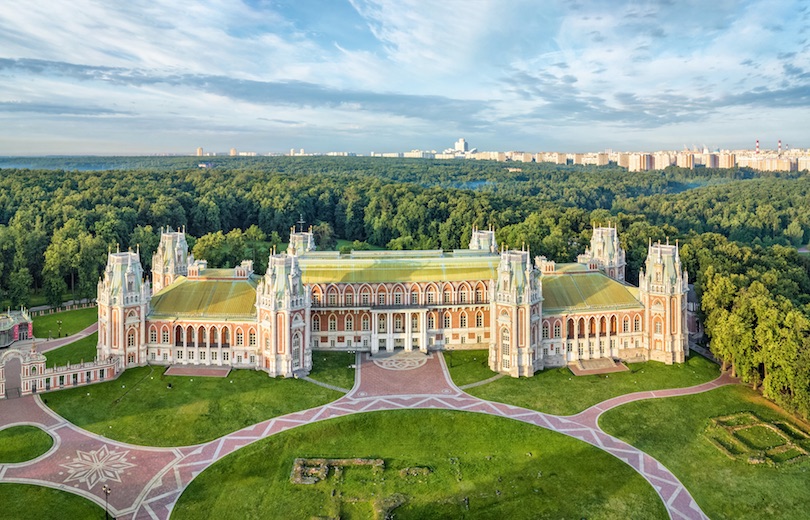
Once the summer residence of Catherine the Great, the stunning Tsaritsyno Palace is now a museum-reserve. The architecture is magnificent and there is a lovely park surrounding it for visitors to explore.
Located in the south of Moscow, the palace was commissioned in 1775 and recent renovations mean its lavish interior looks better than ever before with its elegant halls and beautiful staircases.
The exhibits on display look at the life of the empress as well as the history of Tsaritsyno itself. The huge palace grounds are also home to some other delightful buildings with the elegant opera house and wonderful brickwork of the Small Palace being particularly impressive to gaze upon.
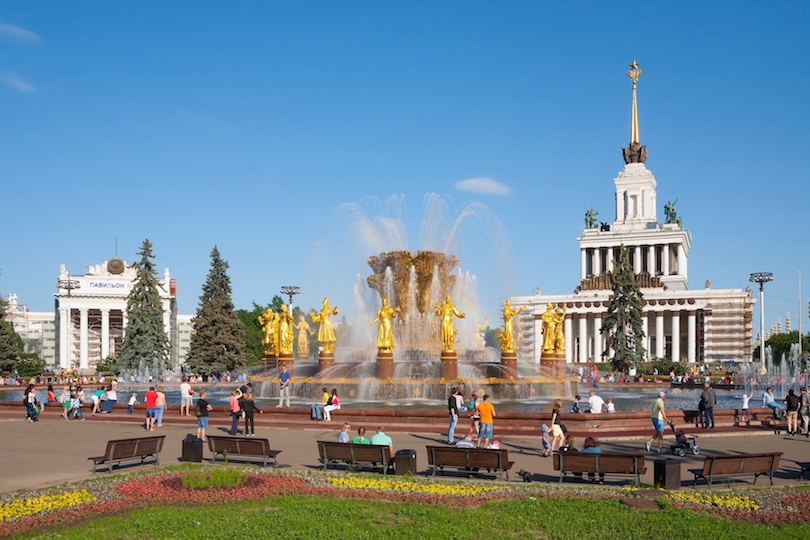
Starting out in 1935 as the ‘All-Union Agricultural Exhibition’, VDNKh has slowly morphed over the years into the fascinating open-air museum of today. Remarkably, over 400 buildings can now be found within its confines.
The huge park complex has numerous pavilions representing former Soviet republics on show, such as those of Armenia and Turkmenistan and the distinctive architecture of each of the buildings is always interesting to gaze upon. In addition to this there is the fascinating Memorial Museum of Cosmonautics which is dedicated to space exploration and the fun Moskvarium aquarium even offers you the chance to swim with dolphins.
With lots of eateries scattered about and numerous entertainment options such as horse-riding and zip-lining, there is something for everyone to enjoy; the Friendship of Nations fountain truly is wonderful.
15. Kremlin Armoury
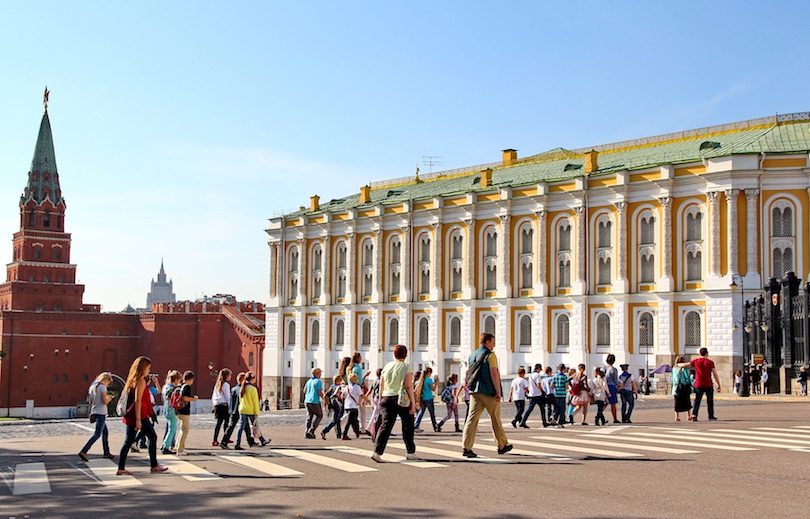
One of the oldest museums in the city, the Kremlin Armoury has a wealth of treasures; highlights include the ornate Grand Siberian Railway egg, the historic Cap of Monomakh and the stunning Imperial Crown of Russia which often has a crowd of tourists around it, jostling to take a photo.
Once the royal armory, there are loads of fascinating objects on display. Perusing the many sabers, jewelry, armor and more is as interesting as it is educational and entertaining and the swords are so finely crafted that you’ll almost wish you could pick up one and wield if yourself.
Established in 1851, the museum is situated in the Moscow Kremlin.
14. GUM Department Store

Standing for ‘Main Universal Store’ in Russian, GUM is stunning. Its wonderful skylights and beautiful facades mean it doesn’t look out of place alongside its illustrious neighbors on Red Square.
With over 200 shops, boutiques and upmarket eateries inside, it is a shopaholic’s heaven and concerned partners will be glad to find more affordable options alongside luxury brands such as Dior and Prada.
The main department store in the city, GUM was opened in 1893. The stunning architecture makes it well worth a visit even if shopping isn’t your thing.
13. Moscow Metro
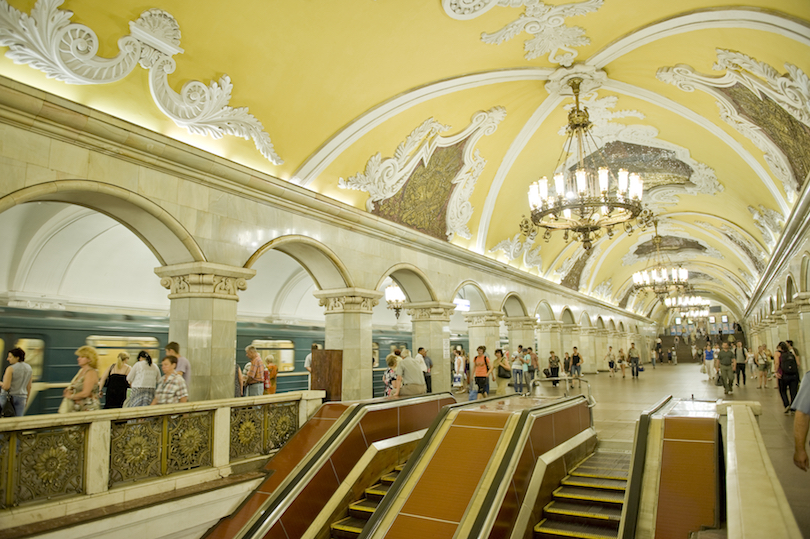
It’s not often that public transport looks like a work of art. So many stops on the Moscow Metro will astound visitors with their beauty and elegance.
Decked in marble and with frescoes covering the walls, the stations are amazing to gaze upon and are part of one of the longest metro systems in the world, with the first stations opened in 1935.
Using the metro is the quickest and easiest way to get around Moscow and braving the crowds of commuters is well worth it for the beauty all around you.
12. Arbat Street
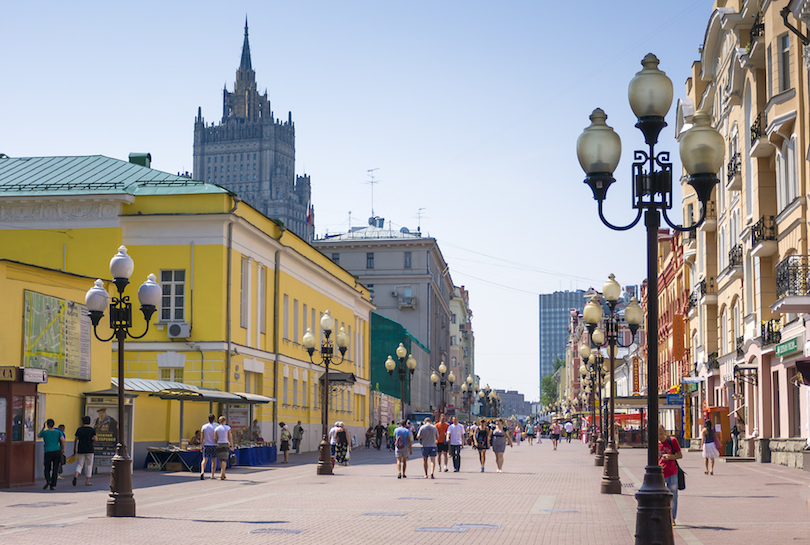
An elegant yet lively street, Arbat is full of impressive architecture and was once a popular place to live for aristocrats, artists, and academics.
A historic place, it is down Arbat Street that Napoleon’s troops are said to have headed on their way to capture the Kremlin.
Nowadays, there are many cafes, restaurants, and shops, as well as various monuments and statues to former residents such as Alexander Pushkin who was reputed to be a lover of the Russian Empress due to his massive influence in court.
11. Novodevichy Convent
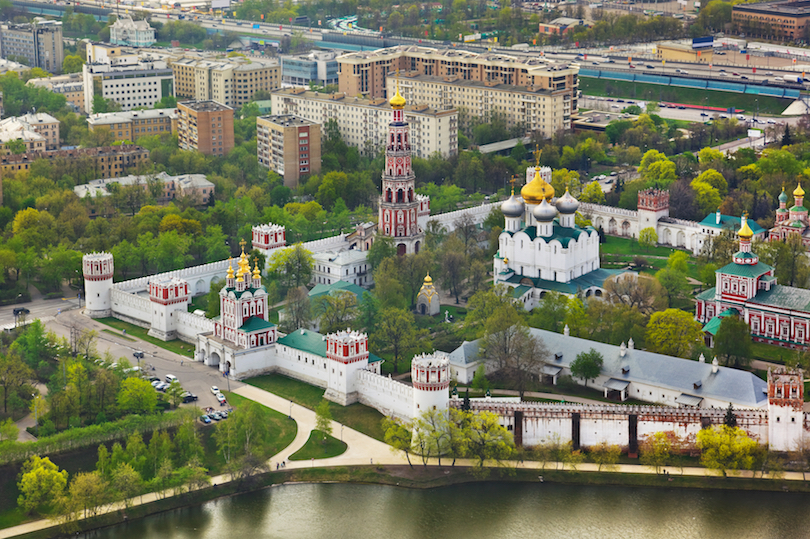
Drenched in history, the Novodevichy Convent is located in a striking building that was once a fortress. This captivating place is well worth visiting when in Moscow.
Founded in 1524, the convent houses four cathedrals; Smolensk Cathedral is the undoubted highlight due to its delightful 16th-century frescoes.
Wandering around the grounds is like stepping back in time. The Novodevichy Cemetery is where many famous leaders of the Soviet Union are buried, such as Yeltsin and Khrushchev.
10. Pushkin Museum
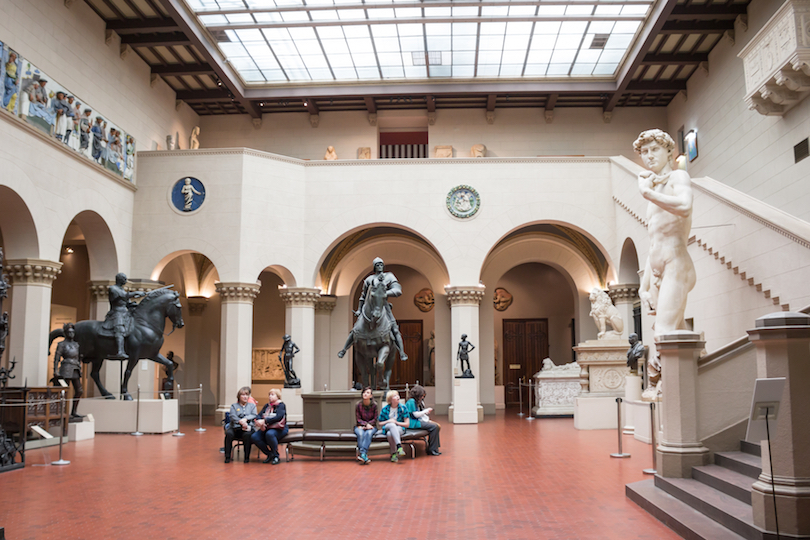
Despite its name, the Pushkin Museum of Fine Arts actually has no connection at all to the famous poet other than that it was named in his honor after his death. A delight to visit, its extensive collection focuses on European art with masterpieces by Botticelli, Rembrandt, and van Gogh all featuring.
Sculptures, graphic art, paintings and more can be found in its beautiful galleries; various sections look at themes and epochs such as the Renaissance, the Dutch Golden Age, and Byzantine art.
Among the many highlights are the clownish characters which can be found in Cezanne’s Fastnacht (Mardi Gras) and the twirling ballerinas who look so elegant in Degas’ Blue Dancers. Picasso’s Young acrobat on a Ball is also well worth checking out for its interesting use of shapes and colors.
9. Christ The Savior Cathedral
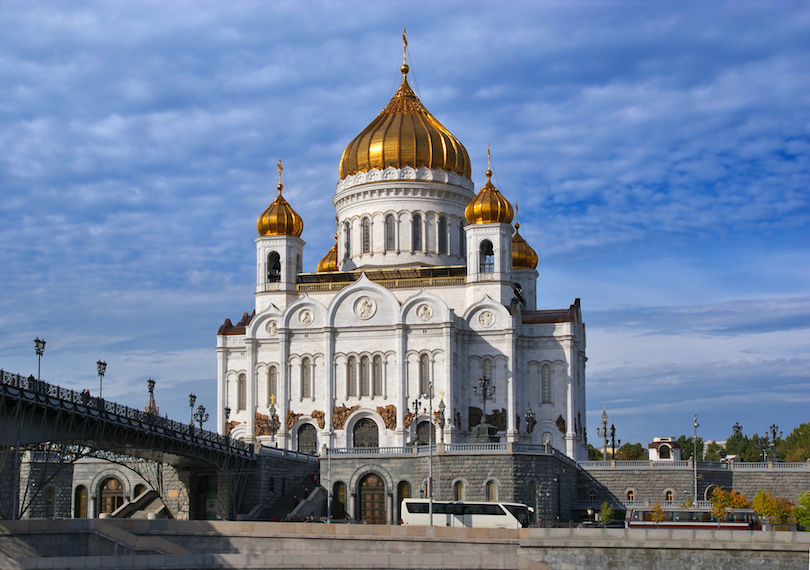
This gorgeous Russian Orthodox cathedral is located on the banks of the Moskva River, just a stone’s throw away from the Kremlin.
The church as it stands today was consecrated in 2000, as the original church that stood here was destroyed on the command of Josef Stalin in 1931 due to the anti-religious campaign.
With its delightful golden dome, spires and dazzling white facades, the Christ the Savior Cathedral is stunning. The interior is just as captivating to wander around, with its beautifully tiled floors and impressive altar.
8. Lenin Mausoleum
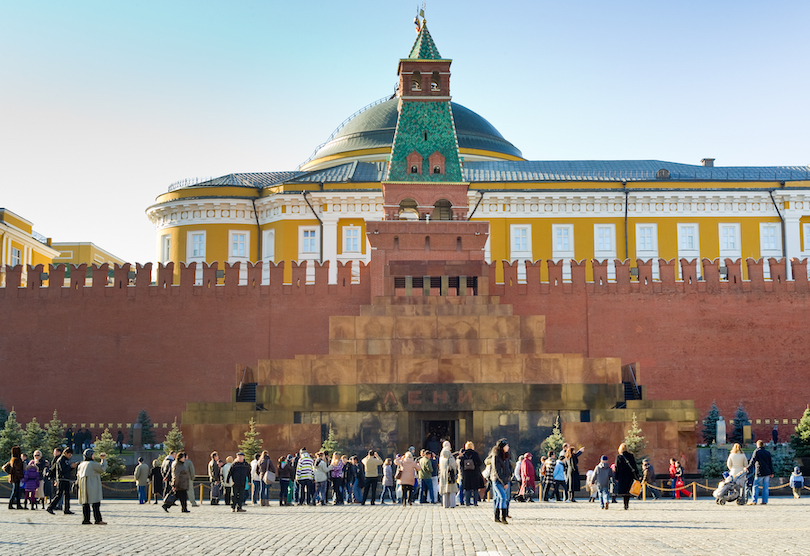
Opened to the public in 1924, Lenin’s Mausoleum is one of the most popular tourist attractions in Moscow. The red granite structure is located at the heart of the city in Red Square.
Lenin’s embalmed body lies in a glass sarcophagus; it is a somewhat eerie experience walking past the former leader of the Soviet Union but is well worth doing as you understandably can’t do it anywhere else in the world.
After visiting the mausoleum, head to the Kremlin wall right next to it for more graves of important communist figures such as Stalin and Brezhnev.
7. Tretyakov Gallery
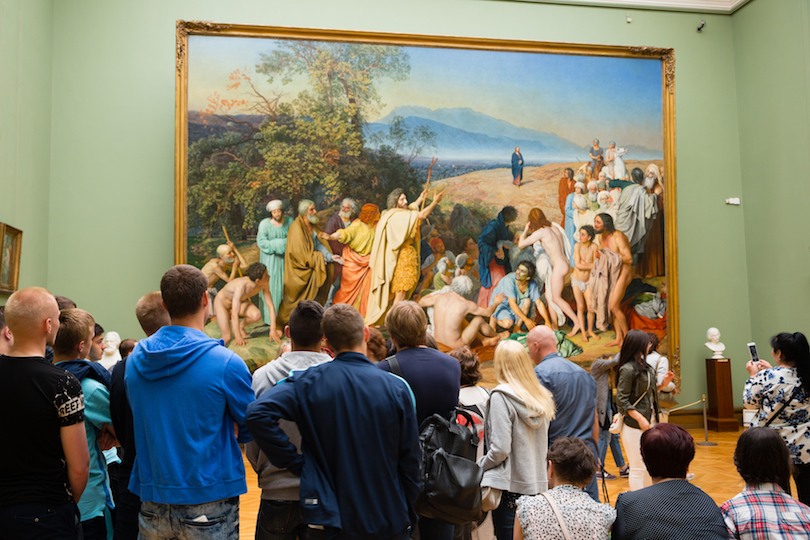
Home to the most extensive and impressive collection of Russian fine art in the world, the State Tretyakov Gallery is definitely worth visiting when in Moscow for the wealth of amazing art pieces that it has on display.
Having started out as the private art collection of the Tretyakov brothers, there are now over 130,000 exhibits. Highlights include the iconic Theotokos of Vladimir which you will almost certainly recognise despite probably not knowing the name and Rublev’s Trinity which is considered to be one of highest achievements in Russian art.
An absolute must for art lovers, the State Tretyakov Gallery will delight visitors with all that is has to offer.
6. Kolomenskoye
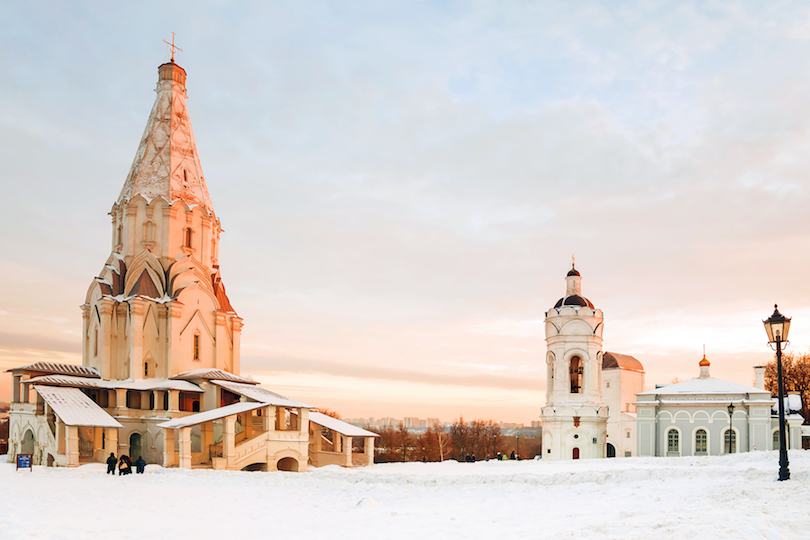
Once a royal estate, Kolomenskoye is now a museum-reserve and lies a few kilometers outside of the city center. A captivating place to visit, there is a plethora of history on show and the site overlooks the Moskva River.
Consisting of four historical sites, there are extensive gardens for visitors to explore, as well as loads of interesting old buildings, the former village of Kolomenskoye itself and the impressive Palace of the Tsar Alexey Mikhailovich – once considered the Eighth Wonder of the World by contemporaries.
Among the many stunning sights, it is the brilliantly white Ascension Church that is the undoubted highlight – dating back to 1532.
5. Gorky Park
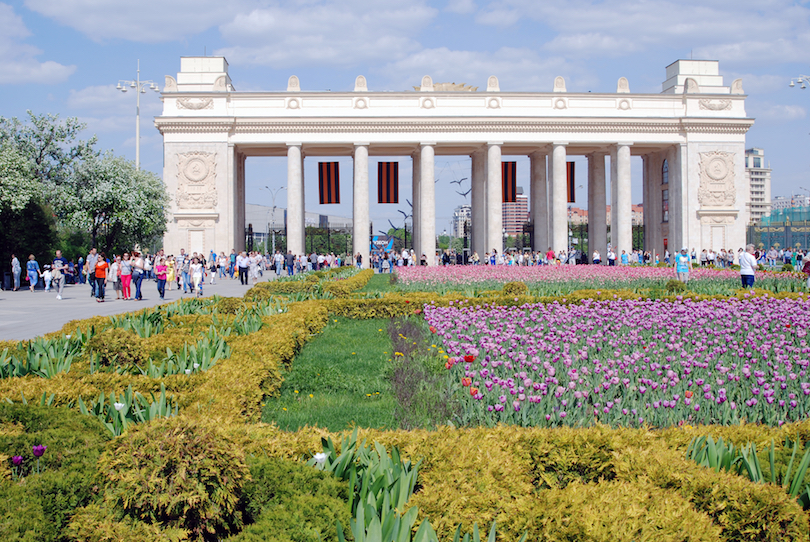
Lying alongside the Moskva River, the huge Gorky Park is a lovely place to visit. Its extensive gardens are home to numerous cultural institutions and visitors should definitely check out the Garage Museum of Contemporary Art and while the eclectic exhibits may not always feature such incredible sights as a balloon-covered rider on a zebra; they certainly always succeed in pushing back the boundaries of art.
Pop-up exhibitions and festivals can be found from time to time in the park itself and there is an open-air theatre and numerous eateries alongside a plethora of leisure activities.
Whether it’s cycling, table tennis or yoga that you are after or beach volleyball and rowing, Gorky Park certainly has it. In winter, there is a huge ice rink for visitors to enjoy.
4. Bolshoi Theatre
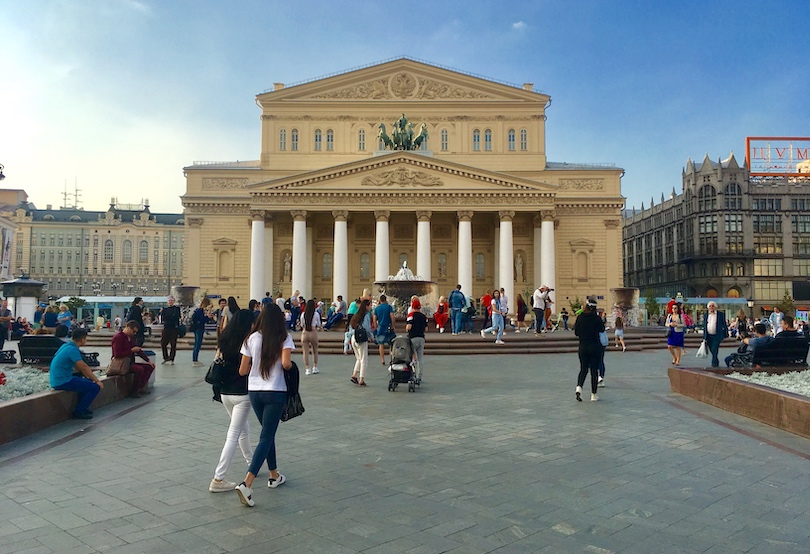
The Bolshoi Theatre is the main theater in the country. The amazing opera and ballet performances it has put on over the centuries go a long way in explaining Russia’s rich history of performing arts.
While the Bolshoi Ballet Company was established in 1776, the theater itself was opened in 1825. The glittering, six-tier auditorium is lavishly and decadently decorated; it is a fitting setting for the world-class performances that take place on its stage.
Spending a night watching a performance of such classics as The Nutcracker or Swan Lake at the Bolshoi Theatre is sure to be a memorable experience and the beauty all around you only adds to the sense of occasion.
3. Moscow Kremlin
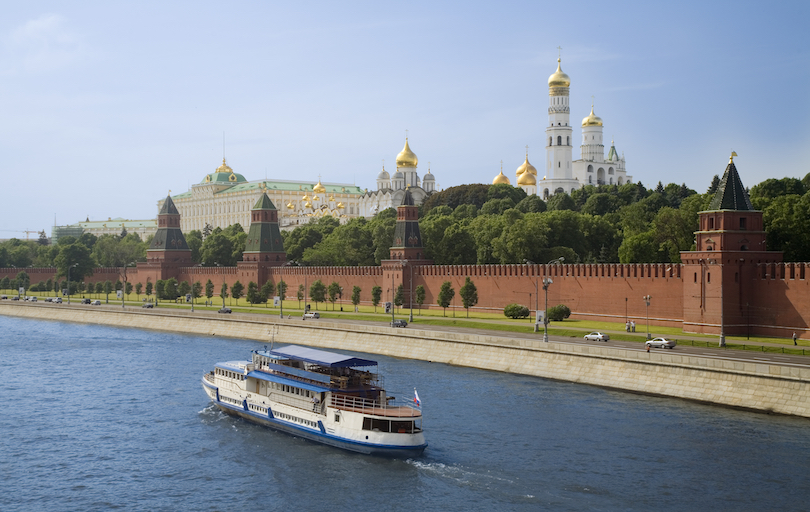
This famously fortified complex is remarkably home to five palaces and four cathedrals and is the historic, political and spiritual center of the city. The Kremlin serves as the residence for the country’s president. It has been used as a fort, and this fact is made clear by its sheer size. The Kremlin’s outer walls were built in the late 1400s.
Under Ivan III, better known as Ivan the Great, the Kremlin became the center of a unified Russian state, and was extensively remodeled. Three of the Kremlin’s cathedrals date to his reign that lasted from 1462-1505. The Deposition Church and the Palace of Facets were also constructed during this time. The Ivan the Great Bell Tower was built in 1508. It is the tallest tower at the Kremlin with a height of 266 feet (81 meters).
Joseph Stalin removed many of the relics from the tsarist regimes. However, the Tsar Bell, the world’s largest bell, and the Tsar Cannon, the largest bombard by caliber in the world, are among the remaining items from that era. The Kremlin Armory is one of Moscow’s oldest museums as it was established more than 200 years ago. Its diamond collection is impressive.
The Kremlin’s gardens – Taynitsky, Grand Kremlin Public and Alexander – are beautiful. The Kremlin has also served as the religious center of the country, and there is a tremendous number of preserved churches and cathedrals here. The collections contained within the museums include more than 60,000 historical, cultural and artistic monuments. Those who enjoy the performing arts will want to consider attending a ballet or concert at the State Kremlin Palace. Completed in 1961, it is the only modern building in the Kremlin.
2. Red Square
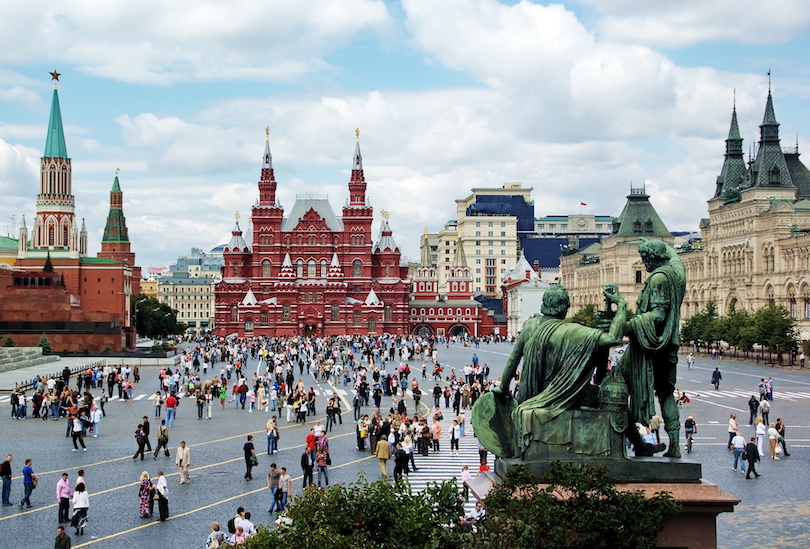
Lying at the heart of Moscow, Red Square is the most important and impressive square in the city. It is one of the most popular tourist attractions due to its wealth of historical sights and cultural landmarks.
Drenched in history, the huge square is home to incredible sights such as the Kremlin, St. Basil’s Cathedral and Lenin’s Mausoleum, among others. Consequently, it is not to be missed when in Moscow as it really is home to the city’s most stunning monuments.
It is here that many important moments in Russian history took place; the former marketplace has hosted everything from Tsar’s coronations and public ceremonies to rock concerts and Soviet military parades. Wandering around the massive square is a humbling experience and undoubtedly one of the highlights the city has to offer.
1. Saint Basil’s Cathedral
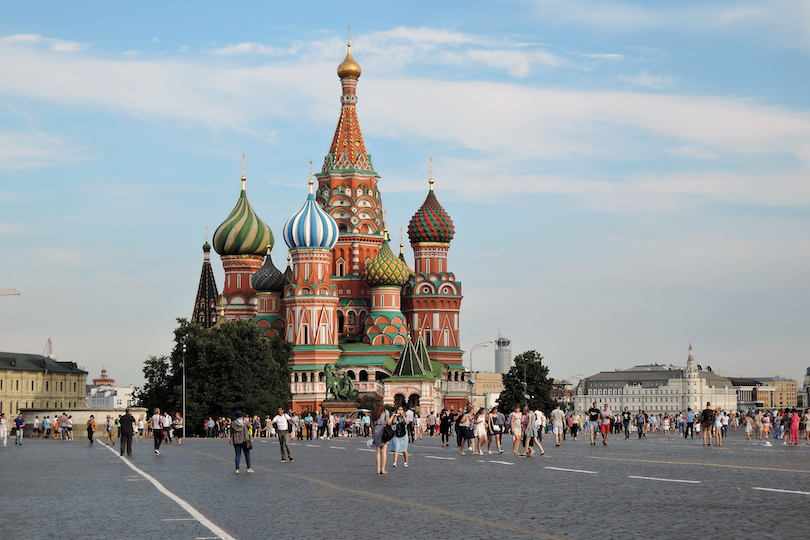
Located in the impressive Red Square, St. Basil’s Cathedral is gorgeous; its delightful spires appear as if out of a fairytale. The most recognizable building in the country, the cathedral is very much a symbol of Russia. No visit to Moscow is complete without having taken in its unique and distinctive features.
Ivan the Terrible ordered the cathedral’s construction in the mid-16th century, and legend holds that Ivan put out the architect’s eyes so that he would be unable to build another cathedral more glorious than St. Basil’s. Designed to resemble the shape of a bonfire in full flame, the architecture is not only unique to the period in which it was built but to any subsequent period. For various reasons, both Napoleon and Stalin wanted to destroy the cathedral but fortunately did not succeed.
Known for its various colors, shapes and geometric patterns, St. Basil’s Cathedral houses nine different chapels that are all connected by a winding labyrinth of corridors and stairways. On the lower floor, St. Basil’s Chapel contains a silver casket bearing the body of St. Basil the Blessed.
Throughout the cathedral are many beautiful murals, frescoes, wooden icons and other art works and artifacts. Outside the cathedral is a lovely garden with the bronze Monument to Minin and Pozharsky, who rallied an all-volunteer Russian army against Polish invaders during a period of the late 16th century known as the Times of Troubles.
Share this post:
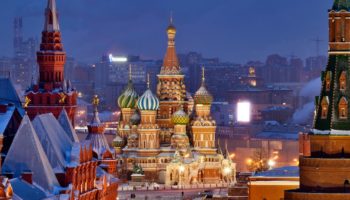
Where to Stay in Moscow
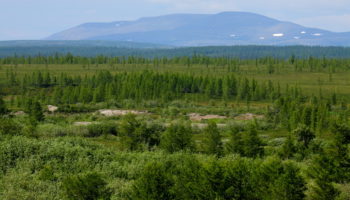
9 Most Beautiful Regions in Russia
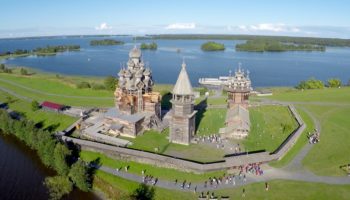
10 Top Tourist Attractions in Russia

10 Most Amazing Destinations in Eastern Russia
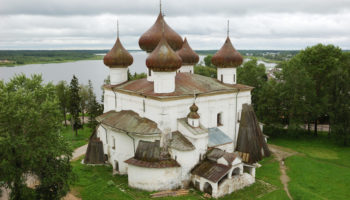
14 Most Scenic Small Towns In Russia
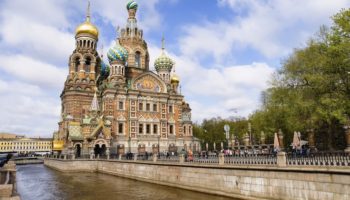
15 Best Attractions & Things to do in Saint Petersburg, Russia
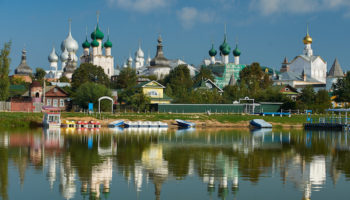
10 Best Places to Visit in Russia
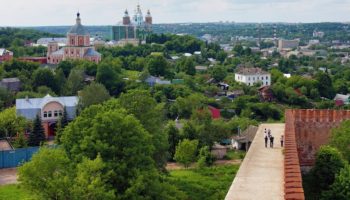
15 Best Cities to Visit in Russia

8 Most Beautiful Society Islands
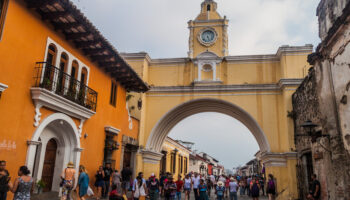
10 Best Places to Visit in Central America


The improved situation of peace and security in Balochistan due to efforts of law enforcement agencies has revived religious tourism in the province.
About 250,000 people from across the world visit Balochistan in April every year for annual celebrations at Hinglaj Mata Temple, reflecting Pakistan's diverse socio-religious fabric embed in inter-faith harmony.
Hinglaj Mata Mandir also known as Nani Mandir is located in Lasbela district and is a sacred place for Hindu community across the world.
The local people consider it their duty to provide hospitality to the visiting guests as per the tribal traditions.
The pilgrimage of Hinglaj Mata is an example of Hindu-Muslim unity and a message of peace to those spreading rumors about the peace of Balochistan.
The participation of hundreds and thousands of local and foreign tourists in the annual event also testifies the efforts of security forces for peace and security in Balochistan.

Subscribe Now! Get features like

- Latest News
- Entertainment
- Real Estate
- HP Board 12th result Live
- Crick-it: Catch The Game
- Lok Sabha Election 2024
- Election Schedule 2024
- IPL 2024 Schedule
- IPL Points Table
- IPL Purple Cap
- IPL Orange Cap
- AP Board Results 2024
- The Interview
- Web Stories
- Virat Kohli
- Mumbai News
- Bengaluru News
- Daily Digest

Moscow extends a warm welcome to Indian travellers with enhanced infrastructure and hidden gems
Russia actively promoting moscow as a tourist destination for indian travellers, improving infrastructure and visa process..
Russia is making an active bid to attract Indian travellers to visit Moscow -- a huge megalopolis and the historical, political and spiritual heart of the Russian Federation. The Moscow City Tourism Committee is promoting the city not only as a cultural capital but also as a business hub as it plans to onboard trade partners, tourists and vacationers. Moscow has also strengthened cooperation with the tourism sectors of allied nations, hosting familiarization tours for delegates and arranging business trips to showcase the city's tourism potential.

To accommodate visitors, Moscow is improving its infrastructure: signs are now available in English and Chinese, all announcements on public transport are repeated in English, and hotels are also adapting to cater to the needs of guests from various countries and ensure a comfortable stay. "We are still on our way to restore the flow of Indian tourists in Moscow like it used to be before the pandemic," said Bulat Nurmukhanov, Head of International Cooperation Division of Moscow City Tourism Committee.
Bulat further said that before the pandemic, there was a steady growth of 12-15 per cent on a year-on-year basis. In the first half of the year, Moscow received about 20,000 Indians, compared to the same period a year ago, it is about 56 per cent higher. In a bid to make Moscow a must-visit destination, the committee is actively working on improving the infrastructure for international travellers. Moscow is spearheading the development of innovative standards in catering to the needs of foreign travellers.
Tourists arriving in the capital can stay in hotels of various price segments. They can savour traditional Russian cuisine, and can also indulge in a diverse culinary experience, with options ranging from authentic Indian delicacies to continental dishes prepared to the highest standards. In 2022, the number of foreign tourists who visited Moscow increased by 6.3 per cent compared to 2021, reaching a total of 1.7 million.
Travelling to Moscow has now become easier as tourists from India and 54 other countries can apply for an electronic visa to enter Russia from August 1, 2023. The impact of e-visa rollout would be available by October this year after the quarterly data from the Russian border control agencies is analysed, Bulat said.
Moreover, the Russian government is planning to come out with a virtual 'Foreign Tourist Card' that will enable cashless payments for various services. "The idea behind this card is, a person back home in India can remotely apply for this card and then he/she can transfer money from the personal bank account to this bank account," Bulat added.
Meanwhile, sources in the Indian Embassy in Moscow told reporters that the Indian tourism ministry as well as the governments of Goa and Kerala are slated to participate in roundtable discussions this month. There are also plans to engage social media influencers to improve the inward traffic to India. Before the pandemic, around 3 lakh Russian tourists visited India annually. The numbers are down to around 80,000-90,000 of late.
To facilitate easy visitor movement across the city, there is "Discover Moscow" -- a navigation and travel web portal about Moscow and "RUSSPASS travel service" -- a digital platform designed for planning trips across Russia. The Discover Moscow portal features descriptions of over 1,200 architectural landmarks in Moscow. The site provides news, digests with festival and event information and curated lists of exhibition venues.
By availing the RUSSPASS travel service, tourists can access all essential information for a trip to Moscow on the site, including visa and currency matters, accommodation and transportation options in the capital. The site also offers a trip builder feature, allowing tourists to select pre-designed city routes or create their own itinerary from their favourite locations. There are versions of the site in Russian, English, Spanish and Arabic.
On the cultural scene, Moscow boasts 10,000 cultural venues including theaters, museums, libraries, parks, cinemas, concert halls, and more. In the last decade, around 900 parks and green spaces have been renovated.
- Tourist Attraction
- Tourist Spot
- Tourist Destination

Join Hindustan Times
Create free account and unlock exciting features like.

- Terms of use
- Privacy policy
- Weather Today
- HT Newsletters
- Subscription
- Print Ad Rates
- Code of Ethics
- DC vs SRH Live Score
- India vs England
- T20 World Cup 2024 Schedule
- IPL Live Score
- IPL 2024 Auctions
- T20 World Cup 2024
- Cricket Teams
- Cricket Players
- ICC Rankings
- Cricket Schedule
- Other Cities
- Income Tax Calculator
- Budget 2024
- Petrol Prices
- Diesel Prices
- Silver Rate
- Relationships
- Art and Culture
- Taylor Swift: A Primer
- Telugu Cinema
- Tamil Cinema
- Board Exams
- Exam Results
- Competitive Exams
- BBA Colleges
- Engineering Colleges
- Medical Colleges
- BCA Colleges
- Medical Exams
- Engineering Exams
- Horoscope 2024
- Festive Calendar 2024
- Compatibility Calculator
- The Economist Articles
- Lok Sabha States
- Lok Sabha Parties
- Lok Sabha Candidates
- Explainer Video
- On The Record
- Vikram Chandra Daily Wrap
- KKR vs SRH Live Score
- EPL 2023-24
- ISL 2023-24
- Asian Games 2023
- Public Health
- Economic Policy
- International Affairs
- Climate Change
- Gender Equality
- future tech
- Daily Sudoku
- Daily Crossword
- Daily Word Jumble
- HT Friday Finance
- Explore Hindustan Times
- Privacy Policy
- Terms of Use
- Subscription - Terms of Use
- Bahasa Indonesia
- Slovenščina
- Science & Tech
- Russian Kitchen
5 of Moscow's most BEAUTIFUL districts
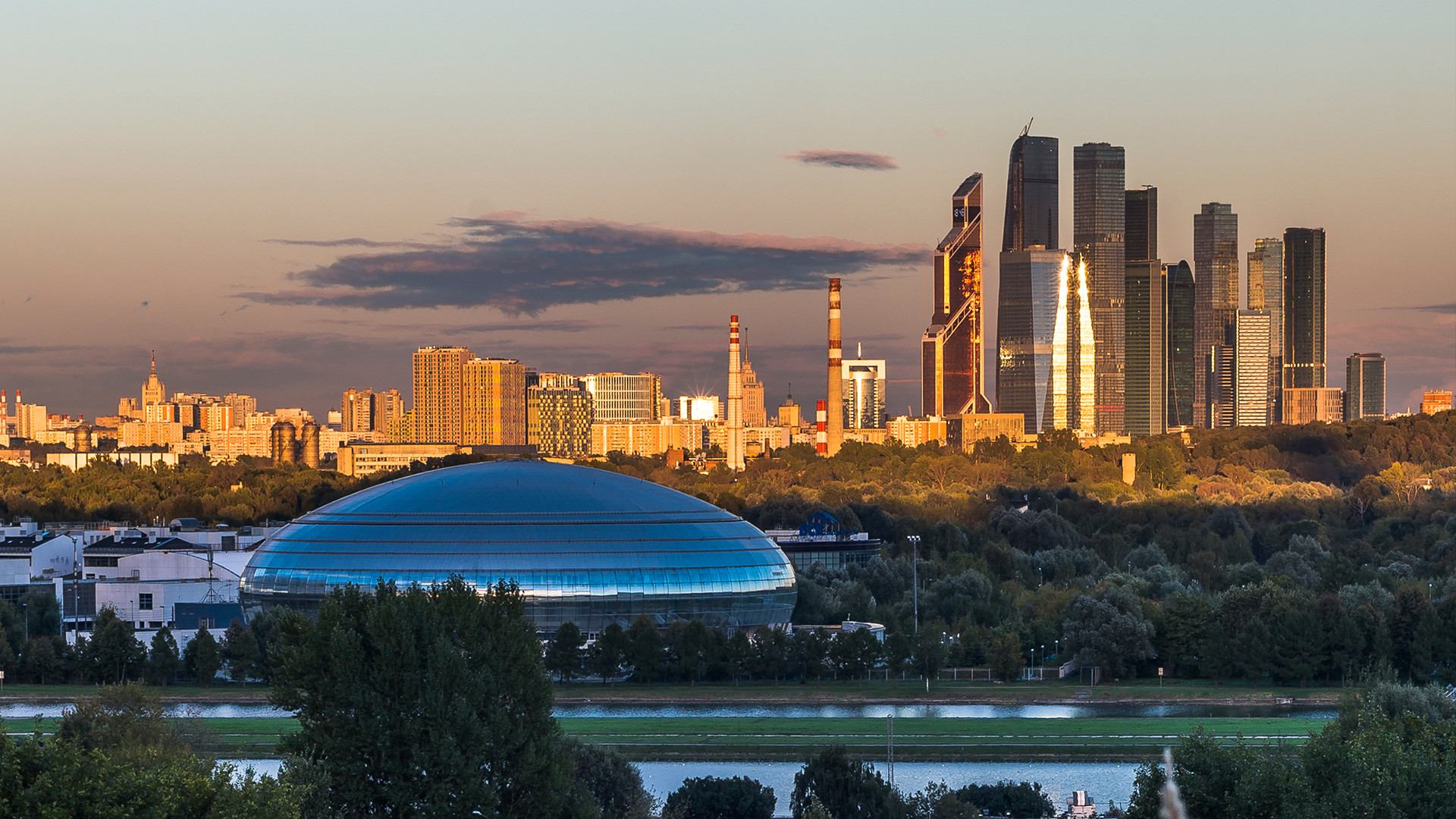
1. Sokolniki
By 9 a.m., the main square of Sokolniki district in the northeast of Moscow begins to fill up with dog-walkers and cyclists. The mobile coffee shops and hot dog outlets are not open yet; the only sounds are the rustling of the autumn leaves and gurgling of the main fountain, around which sleepy guards walk.
“But on the weekend, there are crowds of people here, as if the whole of Moscow descends on it,” says Raisa Bazarova, a resident of Sokolniki. She says that she literally “married” Sokolniki 21 years ago, in 1999, when she moved from the central Arbat district to live with her new husband.
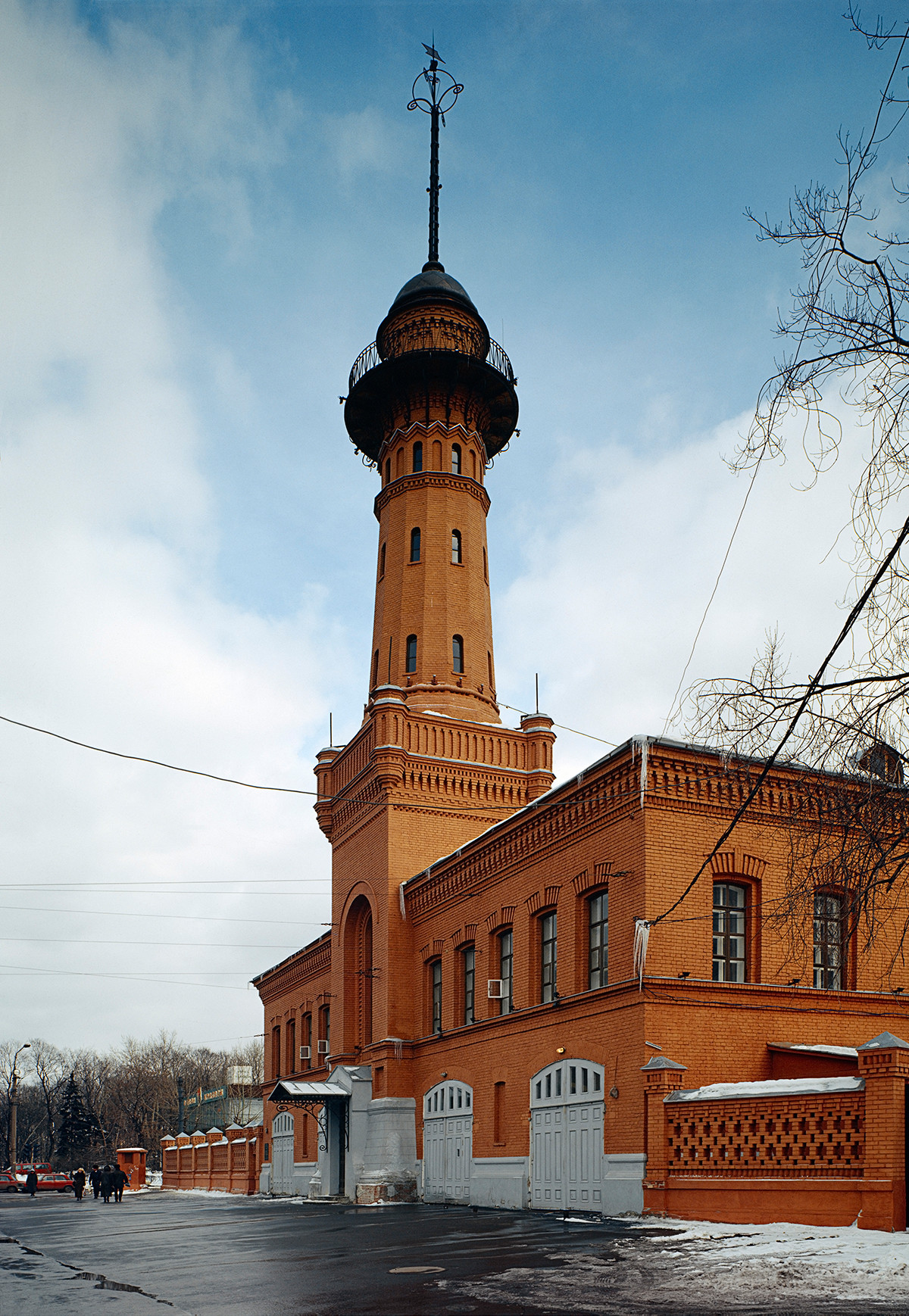
Police fire station with a tower-tower in Sokolniki
It took three years for her to feel at home, finally making friends with the neighbors. Now, Raisa considers it the most beautiful area of Moscow and is fond of its low-rise skyline and architectural monuments.
“As soon as you step out of the subway, you’re in Sokolniki, and the first thing that catches the eye is the pre-revolutionary watchtower [built in 1884]. It saw the old wooden Moscow and has been preserved in all its splendor,” says Bazarova.
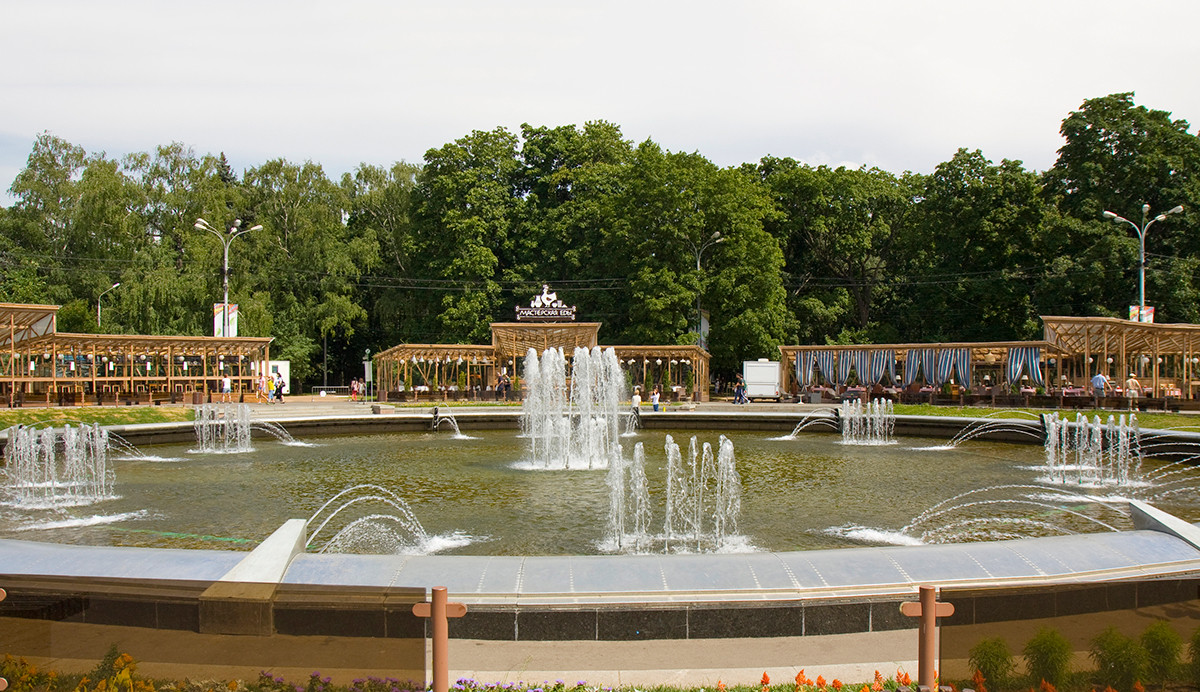
Moscow, park Sokolniki
Raisa also advises foreigners to visit Sokolniki Park, one of the oldest in Moscow, founded in 1878, with fountains, ponds, a swimming pool, an amusement park and its own rose garden. Sokolniki was adored by Peter the Great and Alexander I and it was here that they often held feasts. For Bazarova, the lush greenery makes it the “lungs” of the district.
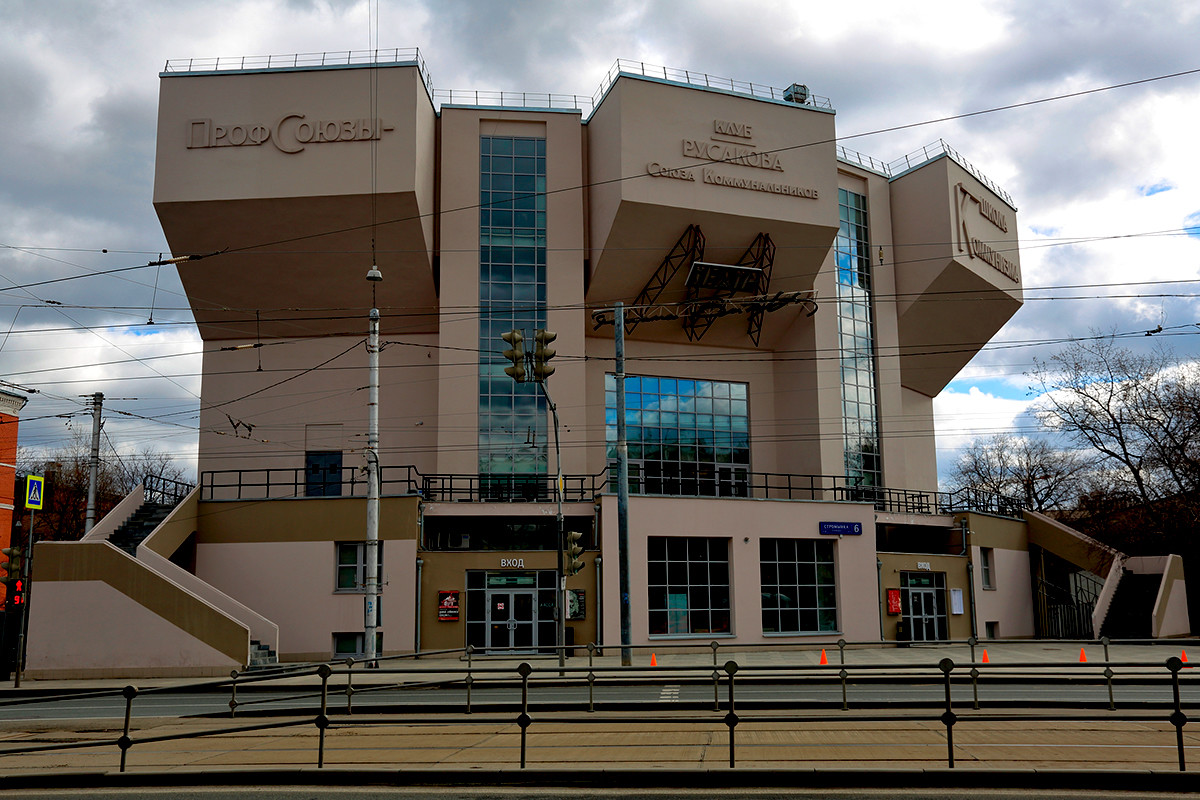
The Viktyuk Theater. The building of the outstanding architect Konstantin Melnikov, 1929
Another must-see, according to Bazarova, is the Roman Viktyuk Theater — if nothing else, then to see one of Moscow’s main architectural gems, designed and built in the Constructivist style that prevailed in the city in the 1920s. Moreover, Russian-speaking theater lovers might want to catch a performance of ‘The Maids’ by French playwright Jean Genet.
2. Levoberezhny
Galina Yakunina, director of a sports club in Moscow’s north for nine years, walks with unfeigned pleasure along the main alley of Rechnoy Vokzal (“River Station”) Park, which was restored in 2020 under the ‘My district’ city improvement program.
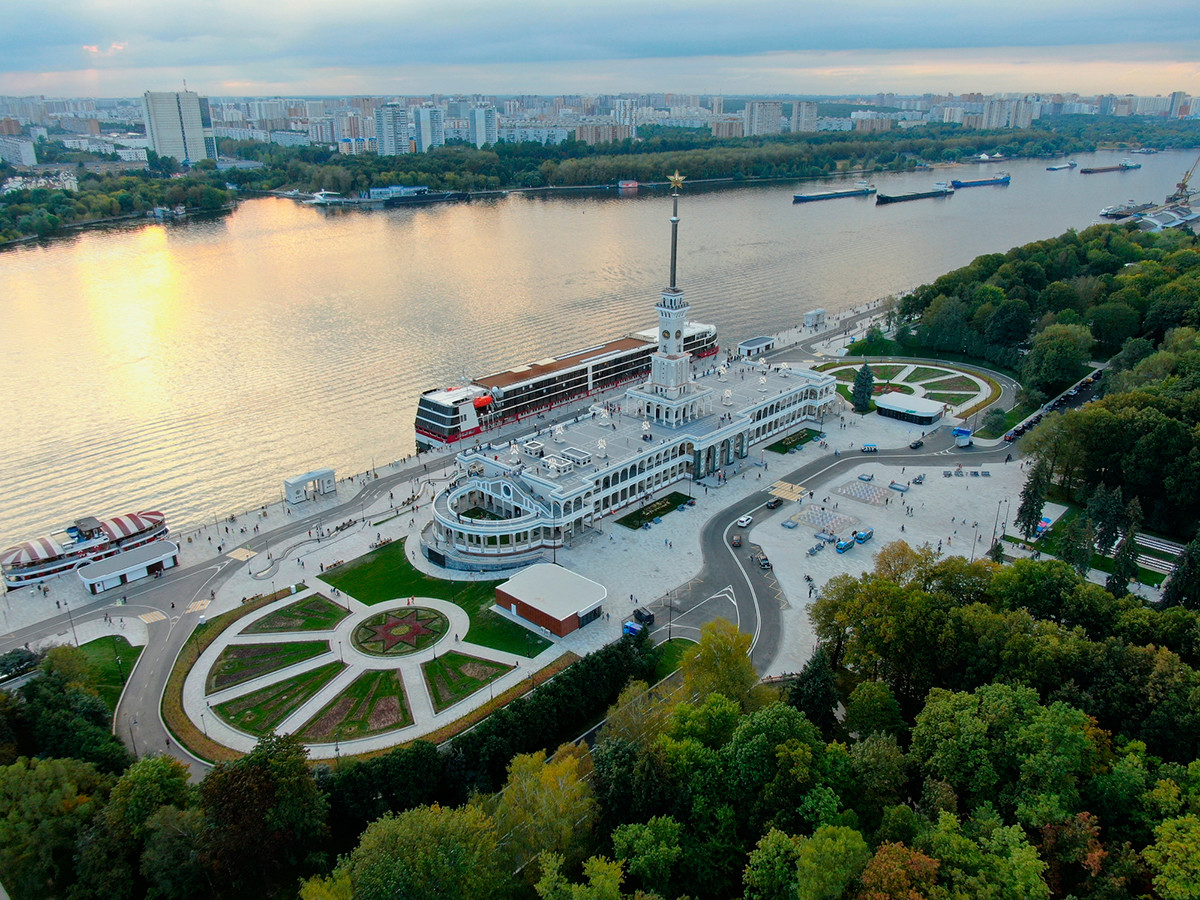
Aerial view is a beautiful panorama of the renovated Northern River Station in Moscow
In the summer of 2020, the station, which resembles a ship, was enveloped in scaffolding, as the original 1937 edifice was being restored. Today, it is surrounded by fountains with children running around, endless flower beds and an all-new embankment that runs along a miniature replica of the Moscow Canal, replete with children’s paddle boats and other attractions.
“It’s really beautiful. Cruise ships and motor vessels depart from here. Muscovites love it and tourists definitely will as well,” says Yakunina.
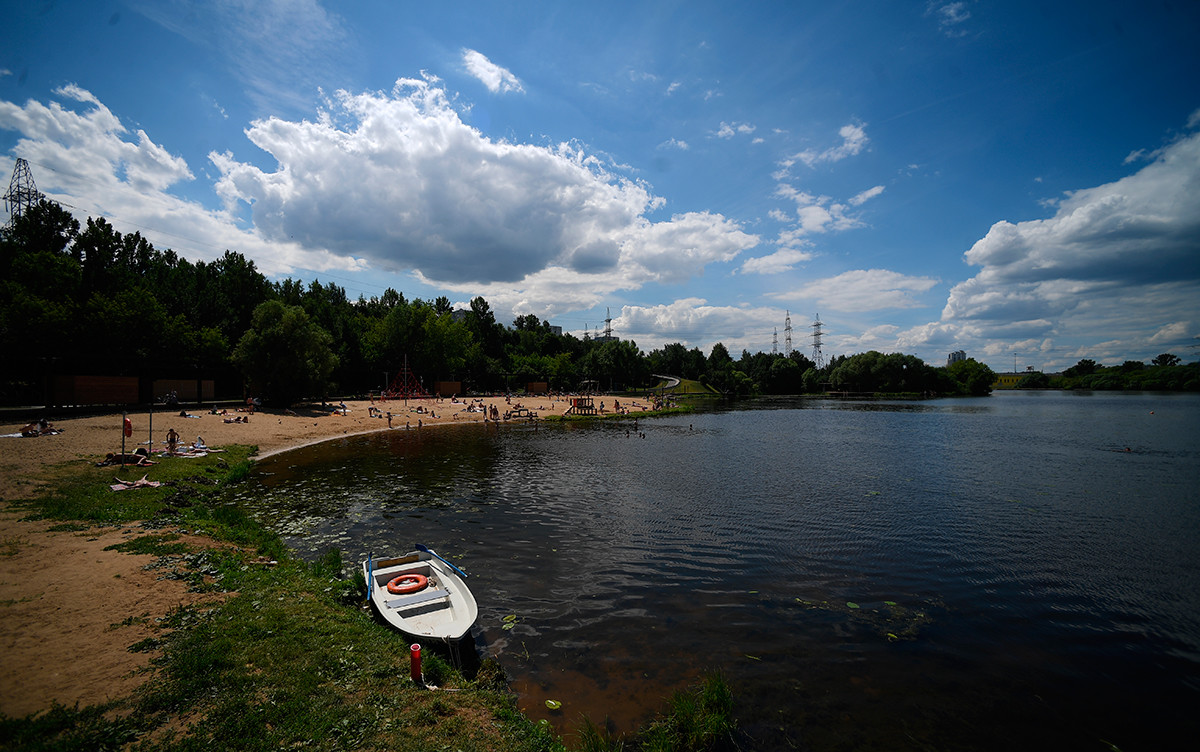
Park Levoberezhnyj, Moscow
Her second favorite place for a post-work evening stroll is Druzhba (Friendship) Park, laid out for the 6th World Festival of Youth and Students in 1957. The main features are its monuments and sculptures dedicated to children, international friendship and war heroes, as well as the pond-reflected willows and the playgrounds. Thanks to these two parks, the air in the district differs sharply from that in central Moscow - that she is sure of.
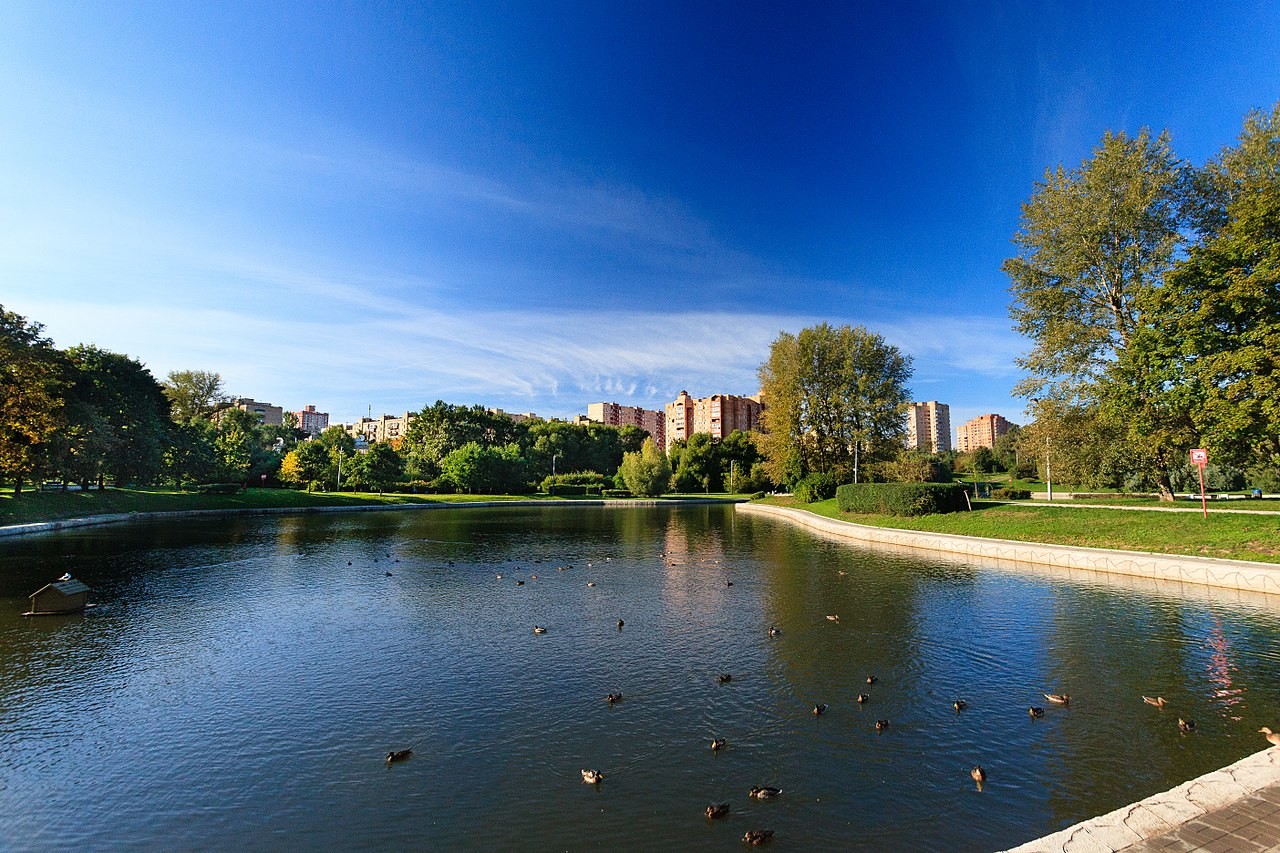
Park Druzhby
In summer, Levoberezhny beach (renovated under the ‘My district’ city improvement program in 2018) becomes the main focal point and Galina heartily recommends it to tourists.
“The beach is covered with sand, with a cafe, sun loungers and beach volleyball. It’s very relaxing,” she says, describing the place.
3. Filevsky Park
For social conflict expert Alexei Ivanushkin, Filevsky Park in the city’s west has always been the main symbol of Moscow.
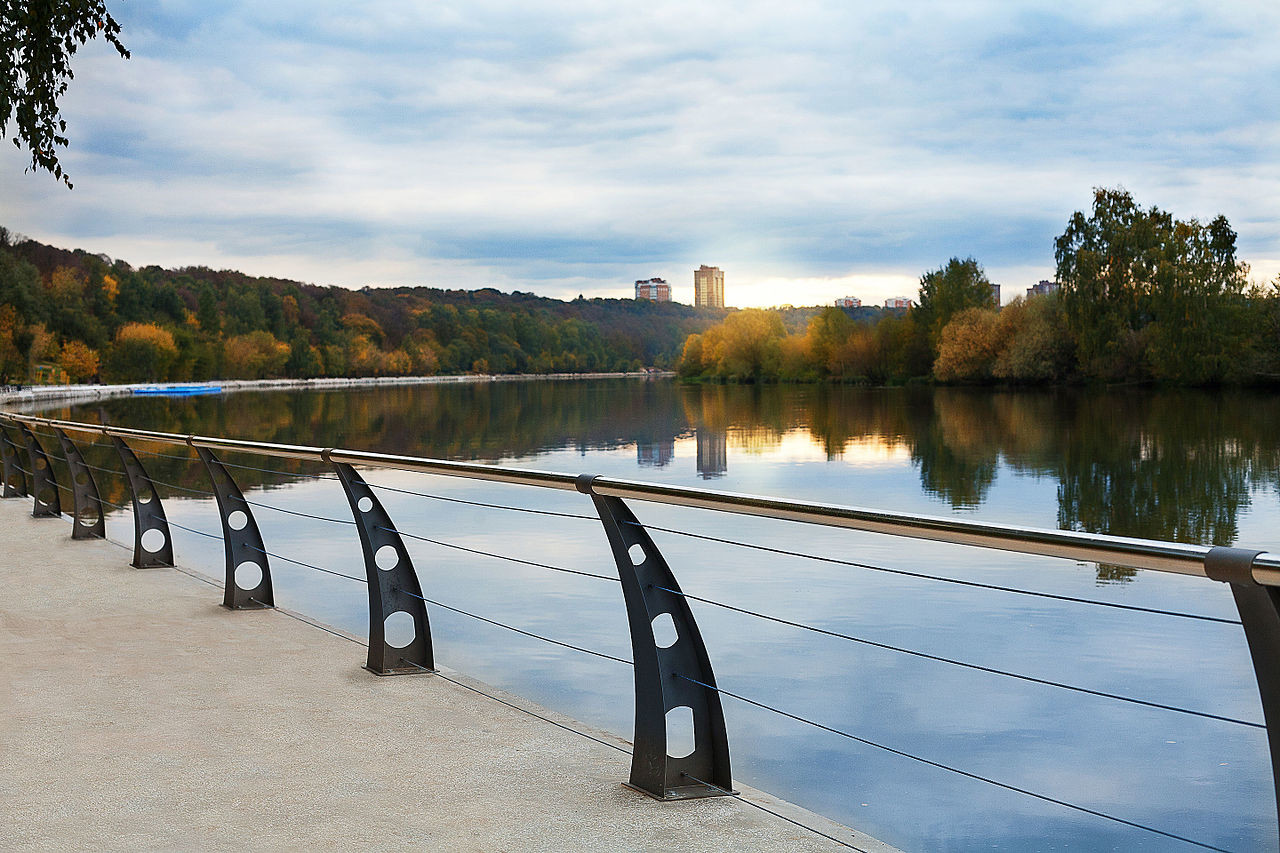
Fili Park embankment
“I moved here in 2005 from St Petersburg, when the Gorbushka electronics market was one of Moscow’s main draws. There were always crowds of people, poorly dressed, but eager for gadgets. We used to go to the wooded parts of Filevsky Park, clearing branches, because it was impossible to get through. There were bottles everywhere that people had just left. In other words, it was a hub for alcoholics,” Ivanushkin shares his first impressions of the area.
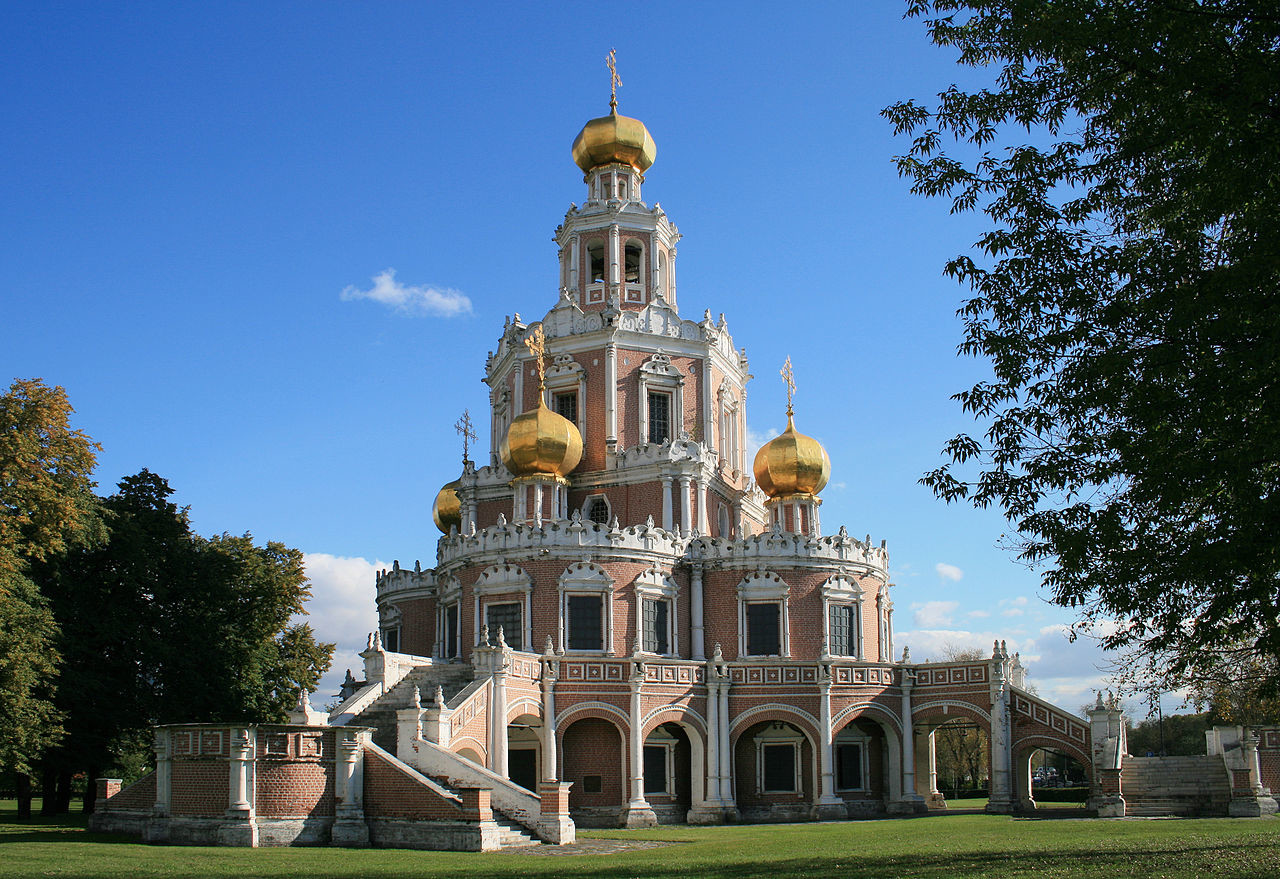
Church of the Protection of the Theotokos in Fili, 1690-1694, Moscow
Fifteen years later, the now-landscaped embankment of the park is Alexei’s favorite spot for daily walks and he also advises tourists to visit.
“For me, the place is full of energy and inspires the soul,” says Ivanushkin.
No less significant is the Baroque Church of the Intercession at Fili, constructed in the late 17th century and financed by the boyar Lev Naryshkin, asserts Ivanushkin. In 1812, Napoleon’s soldiers converted the first floor of the church into a stable. In 1943, the lower church was used as a hospital and then, until 1963, as a warehouse for paper products. Highly recommended to anyone interested in unusual places of worship.
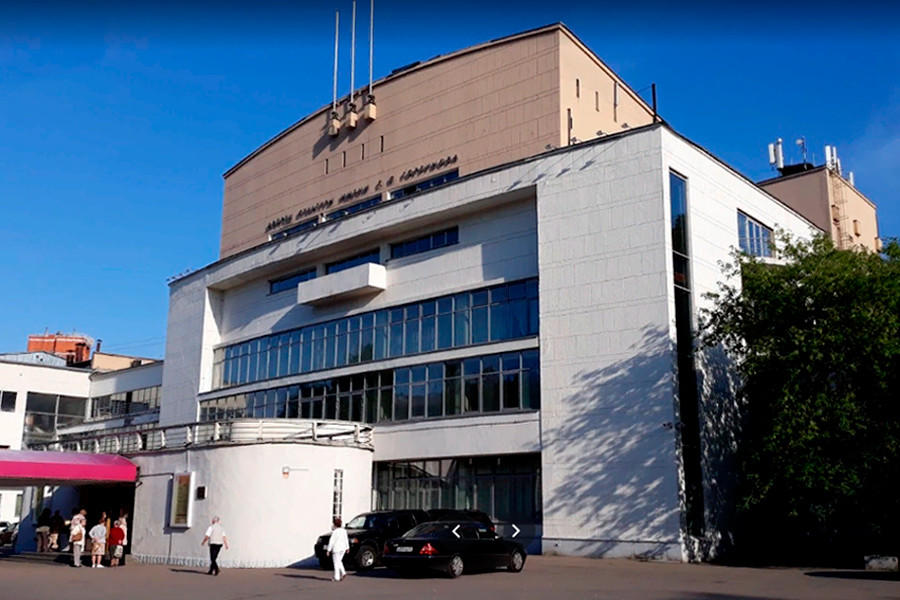
Gorbunova recreation center
“The Suvorov Military School stood opposite the church. And every year at the graduation ceremony, it was a tradition for graduates to secretly raise the flag of the armed forces on the building. They tried to stop it, but no one was ever punished,” recounts Ivanushkin.
To learn more about Russian rock music, Alexei advises a visit to the Gorbunov Palace of Culture, named after Sergei Gorbunov, the director of an aircraft factory and built in 1938. In 1986, it housed the first “rock-n-roll laboratory” in Moscow, earning the building a reputation as the capital’s premier venue for rock concerts and festivals.
4. Krylatskoe
To learn more about sports facilities built for the 1980 Moscow Olympics, Krylatskoye is the place to start, says local resident Yulia Zhiltsova, who moved to Moscow from Siberia and has lived in the city’s western part for 21 years.
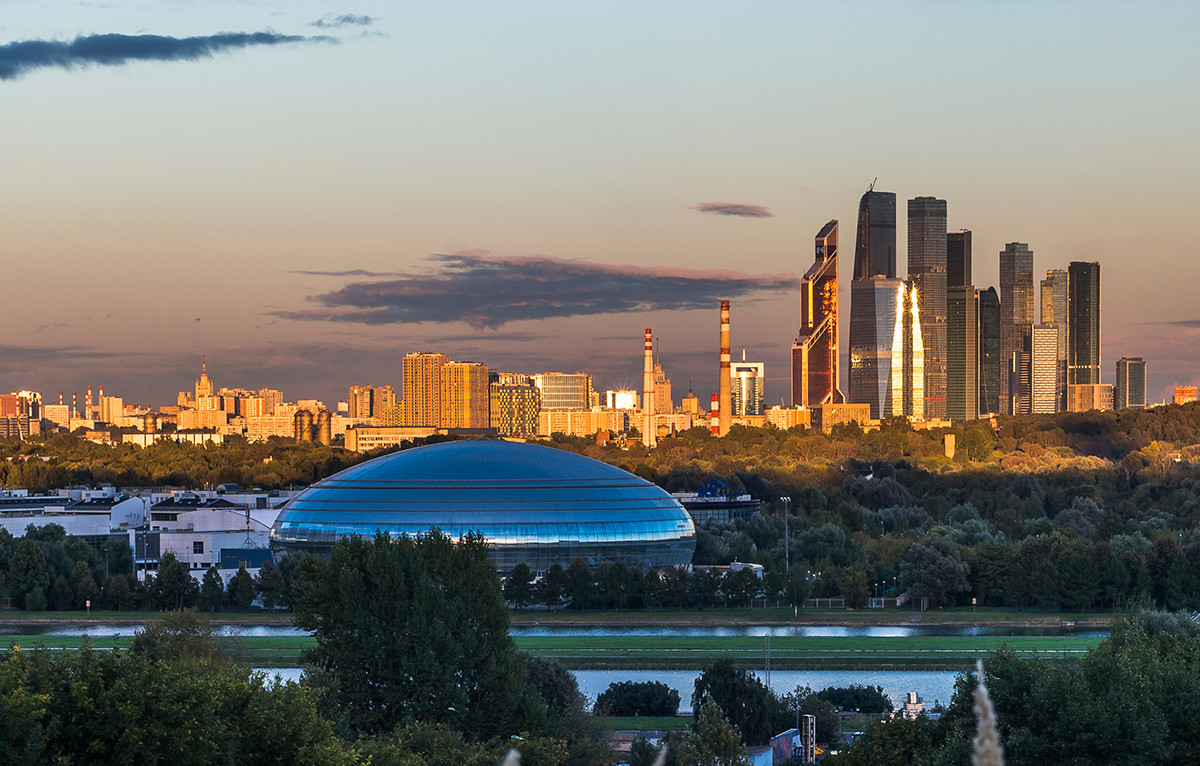
Krylatsky hills. Panorama
“I love walking around the velodrome and other Olympics facilities. There’s also a speed-skating center and rowing canal. Red Bull regularly organizes the Flugtag competition here, it’s really fun and interesting,” notes Zhiltsova.
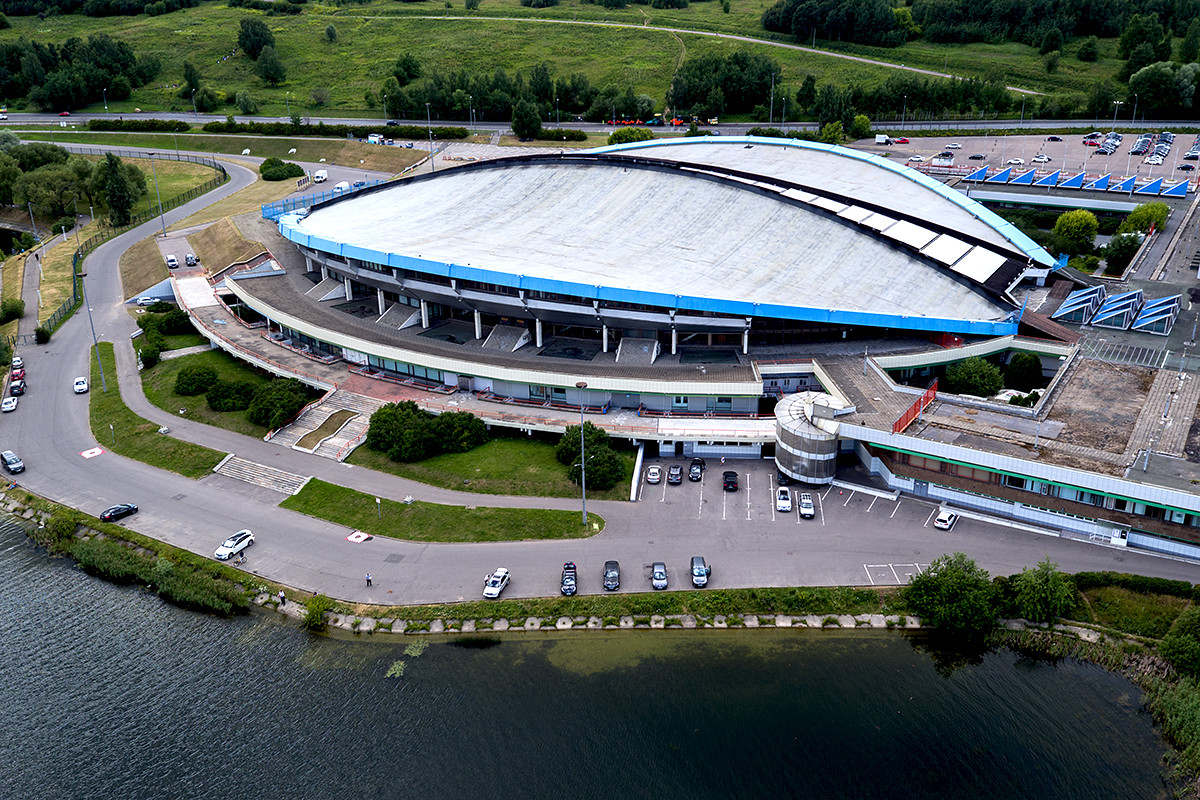
Cycle Track "Krylatskoe"
In her free time, Yulia enjoys what are perhaps the capital’s most beautiful views from West Krylatsky Hill in the nearby park, offering a panorama of Moscow-City, the Church of the Nativity of the Most Holy Theotokos and the arch of Zhivopisny Bridge.
She advises tourists to climb the hill, take shots of the stunning Moscow backdrops and escape the hustle and bustle of the central historical districts.
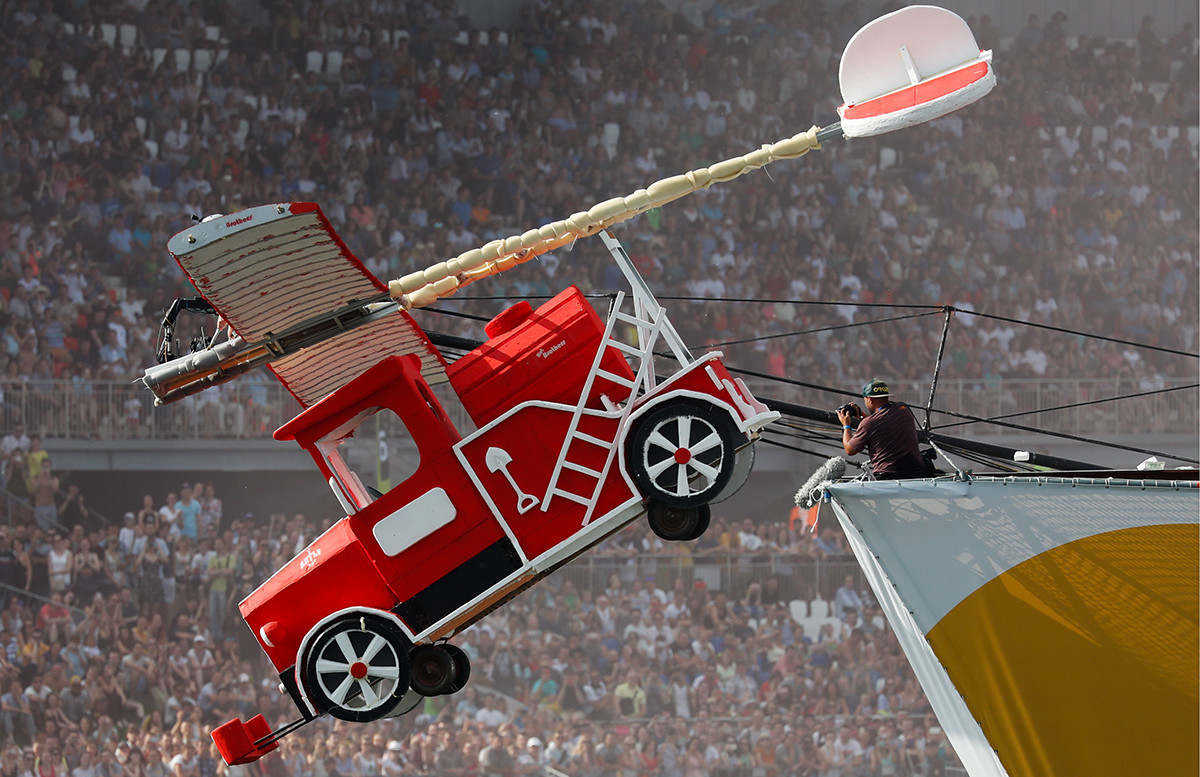
Red Bull Flugtag 2017 in Moscow
“Here you feel at one with nature, yet central Moscow is just 20 minutes down the road. There are no crowds, even on weekends. The center is packed and impersonal, but here the atmosphere is a bit more homely,” Zhiltsova explains.
5. Khoroshevsky
Khodynskoe Field in the Khoroshevsky district is notorious as the site of a deadly crush during celebrations to mark the coronation of Nicholas II in 1905. Today, it looks more like a futuristic city with fantastical towers, art objects in the local park and dancing fountains. By 8 p.m. on weekdays, the park is especially crowded — school students shoot TikTok dance videos and ride skateboards, while children run with their parents through the mirror maze.
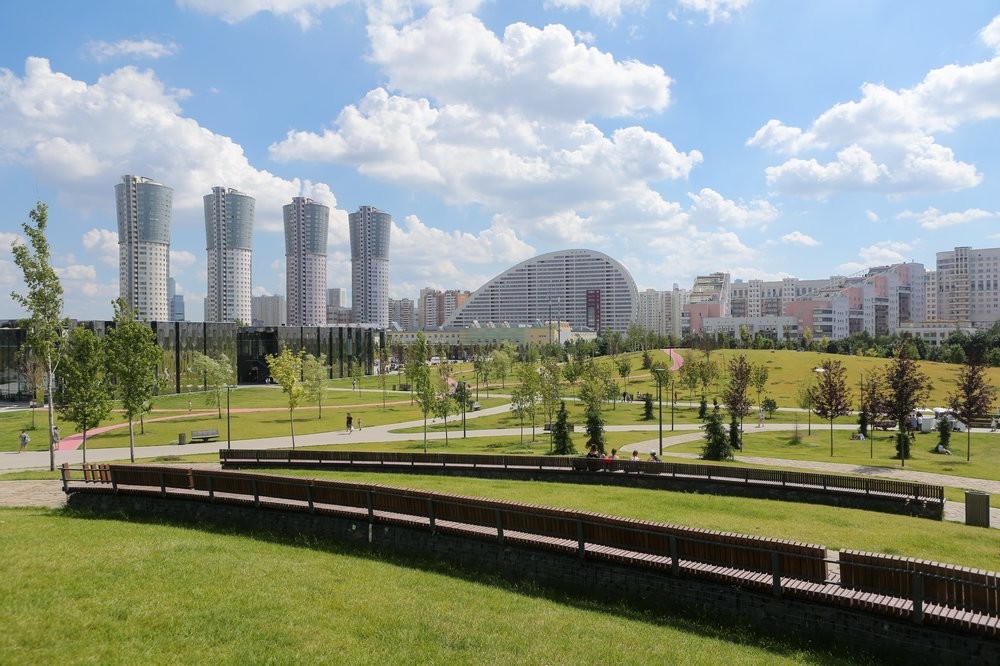
Local resident Alexander Lyubarsky moved to Khodynka in 2010 and, as a photographer, immediately fell in love with the views.
“Every part of Khodynsky Park — be it a swing, a pond, a sports ground stylized as an airplane and helicopter, or the fountains behind us — is photogenic,” explains Lyubarsky. The Park appeared in 2018 under the ‘My district’ city renovation program.
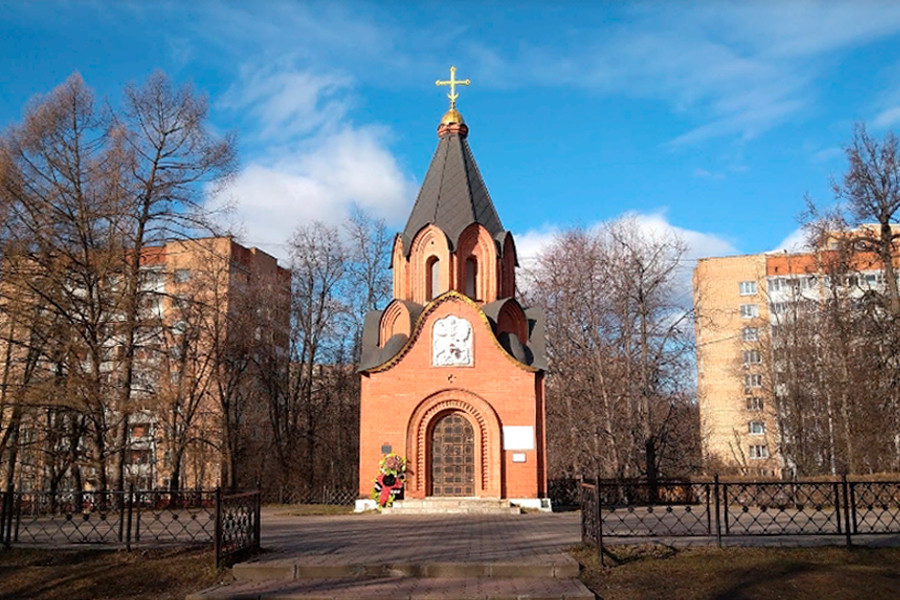
Chapel of the Transfiguration of the Savior in the Memorial Park complex of world war I heroes. Built in 1998
His second favorite place for photos is the small Berezovaya Roscha (“Birch Grove”) Park (renovated in 2020 as part of the ‘My district’ program), which, besides birches, is home to maple, ash, and linden trees.
Every visitor to Khodynka simply must go to the World War I Heroes Memorial Park at the Bratskoe (Fraternal) Cemetery, Lyubarsky insists.
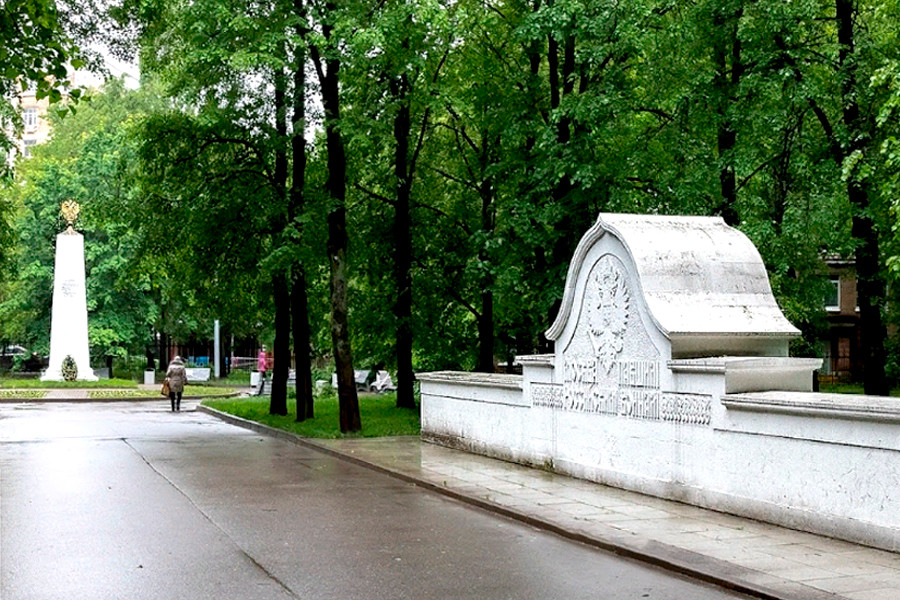
World war I Heroes memorial Park
“There’s a wonderful chapel with the buried ashes of Grand Duke Nikolai Romanov [the grandson of Nicholas I and an uncle of Nicholas II who was the Russian commander-in-chief during World War I]. Everything’s also very photogenic there,” says Lyubarsky.
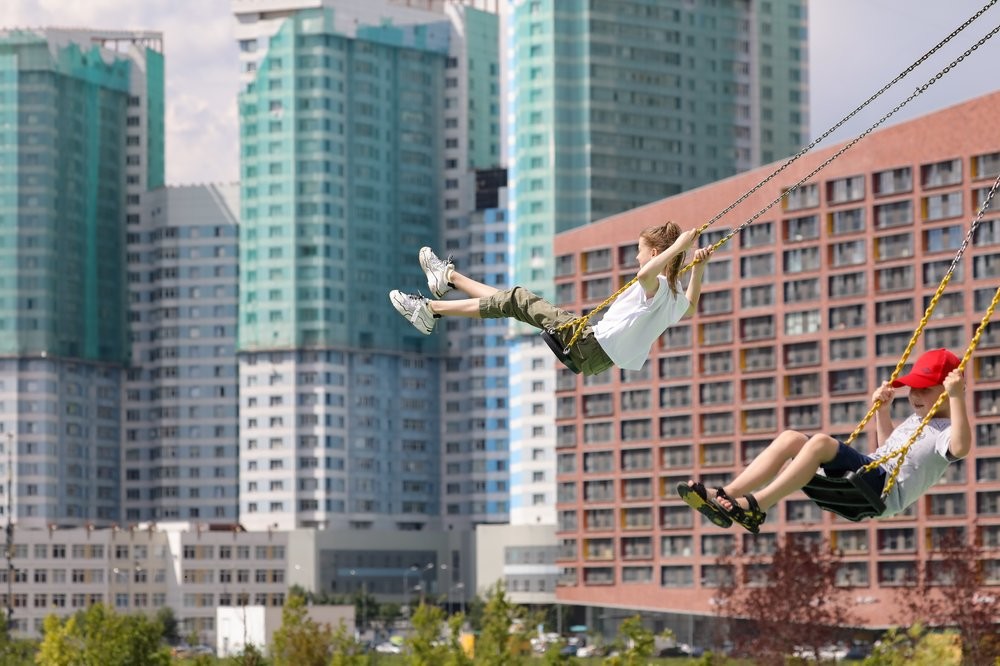
In his opinion, every foreign tourist should visit Khodynka for a glimpse of what the future Russia might look like.
“It would be good if all the suburbs could be like this. I’d love this to spread beyond the Moscow Ring Road [MKAD],” he concludes.
If using any of Russia Beyond's content, partly or in full, always provide an active hyperlink to the original material.
to our newsletter!
Get the week's best stories straight to your inbox
- 4 BEST short walks around Moscow (PHOTOS)
- 5 masterpieces of industrial architecture in Moscow (PHOTOS)
- 5 most BEAUTIFUL Moscow noble estates (PHOTOS)
This website uses cookies. Click here to find out more.
- Share full article
Advertisement
Supported by
460 Years Ago, Shakespeare Was Born Here. Or Somewhere.
Every year, millions flock to Stratford-upon-Avon, England, to visit the house known as Shakespeare’s Birthplace. But was he really born there? A whole industry depends on it.

By Elizabeth Winkler
Sometime in the late 18th century, a sign appeared outside a shambly butcher’s hut in the English town of Stratford-upon-Avon: “The Immortal Shakspeare was born in this house,” it announced, using a then common spelling of his name. Devotees began making pilgrimages — dropping to their knees, weeping, singing odes: “Untouched and sacred be thy shrine, Avonian Willy, bard Divine!”
A tradesman grew rich selling carvings from a local mulberry tree, like pieces of the true cross. Some skeptics suspected that the sign was part of a scheme to bring visitors to Stratford; others wondered if it had been hung by the property’s occupant. A local antiquarian criticized the whole scene as “a design to extort pecuniary gratuities from the credulous and unwary.”
Pilgrims flocked to the house, and it became a site so hallowed that one visitor warned that the veneration of Shakespeare threatened to eclipse that of God:
Yet steals a sigh, as reason weighs/ The fame to Shakespeare given,/ That thousands, worshippers of him,/ Forget to worship Heaven!
About 250 years after its break from the Catholic Church, England had its own Bethlehem and manger.
The problem: No one really knows where Shakespeare was born.
Mock Tudors and magic wands
Stratford-upon-Avon lies two hours northwest of London in the Midlands, more or less the heart of England. Today, it is one of Britain’s most popular tourist destinations, drawing up to three million visitors a year. The Birthplace is its main attraction, followed by the cottage reputed to be the place where Anne Hathaway, Shakespeare’s wife, grew up.
Stratford exudes Elizabethan kitsch, with souvenir shops and half-timbered buildings. In the 19th century, the Victorians tried to make Stratford look more “authentic,” which has left it teeming with mock Tudors.
It’s a town whose economy and identity revolve around Shakespearean fervor, which peaks every year on April 23, the date celebrated as Shakespeare’s birthday. It is also, conveniently, St. George’s Day , honoring the patron saint of England.
On my first visit in June 2021, I passed the Hathaway Tea Rooms and a cafe called the Food of Love, a cutesy name taken from “Twelfth Night” (“If music be the food of love, play on”). Confusingly, there were also several Harry Potter-themed shops. Stratford and Hogwarts, quills and wands, poems and spells . Then again, maybe the conflation was apt: Wasn’t Shakespeare a sort of boy wizard, magically endowed with inexplicable powers?
On Henley Street, I arrived at the Birthplace, a half-timbered house yellowed with age. Today, it looks like a single detached building, but it was originally a row of tenements. John Shakespeare bought one tenement on the street in 1556, though he also bought property on nearby Greenhill Street, which could just as easily have been the site of his son’s birth. He bought the property thought to be the Birthplace in 1575, 11 years after his son was born.
Those who believe in the Birthplace point to a record from 1552 showing that a John Shakespeare was fined for keeping a dung heap somewhere on Henley Street. It doesn’t specify the location, but that dung heap has fueled a theory that he must have been living there at the time of his son’s birth, perhaps as a renter.
Similarly, the claim for the authenticity of Anne Hathaway’s Cottage rests on a record that a John Hathaway leased the 90-acre farm on which the building stood 13 years before Anne was born in about 1556. The cottage may well be linked to the Hathaways, but there is no proof that Anne actually grew up in it, just as there is none that Shakespeare was born in the house on Henley Street.
Together, these traditions have sustained Stratford’s tourist industry, worth about $315 million in 2019, before the pandemic. But they have not convinced many skeptics over the years.
“Stratford permits — indeed encourages — one of the biggest frauds in England to rage unchecked,” the journalist Bernard Levin railed in The Daily Mail in 1965. “I mean those two monumental frauds, ‘Shakespeare’’s Birthplace and Anne Hathaway’s Cottage.”
It didn’t help that hucksters have found ways to make the story profitable. In the early 19th century, a tenant of the Birthplace named Mrs. Hornby ran a lucrative hustle showing and selling Shakespeare’s “relics” to gullible visitors. The relics were eventually exposed in an 1848 article in Bentley’s Miscellany , which observed that four different chairs, each purporting to be “Shakespeare’s chair,” had been sold over the years, each made by a well-known local craftsman.
I entered through the Shakespeare Centre, a strange museum that acts as an antechamber to the Birthplace. There were no books owned by Shakespeare or letters in Shakespeare’s hand, because none are known to exist. Instead, a glass case displayed eight Shakespeare busts dating from 1844 to 2000. Another case featured a Shakespeare beer mug (1933), Shakespeare playing cards (1974) and a Shakespeare action figure made in China (2003).
Inside the Birthplace, I went from room to room with the other visitors. Guides regaled us with tales of Shakespeare’s childhood — how he played and ate and dreamed in these rooms. Of course, his childhood is actually a yawning blank: From his baptism in 1564 to his marriage in 1582, there are no records of him. In one room, a table displayed books, quills and ink, indicating a family of learning — but his parents signed documents with a mark, like many illiterate people in Tudor England.
The other visitors murmured to one another in reverent museum whispers and nodded at the guides. I thought of how, in the late 19th century, a Birthplace custodian named Joseph Skipsey resigned his post after a few months, explaining that “not a single one of the many so-called relics on exhibition could be proved to be Shakspere’s” and that “the Birthplace itself is a matter of grave doubt.”
The power of popular faith
Efforts to preserve the property as the official Birthplace began in 1847, when it was put up for sale. In response to fears that P.T. Barnum was going to buy it and make it part of a show, a committee was formed to “save” the house for the nation, and the group began to solicit donations.
Not everyone was convinced. “The extraordinary sensation caused by the purchase of this shabby sausage-shop deserves a prominent place amongst popular delusions,” declared the 1848 Bentley’s Miscellany article . A writer for another British periodical mocked the gullibility of a nation pouring forth funds to buy a “rubbishing mass of lath and plaster in which the Poet was no more born than was the Man in the Moon himself.”
But the belief had already become an article of faith, strengthened by its own repetition. The Birthplace was a better shrine for the very absence of evidence — for the faith it required of its visitors — the publisher Charles Knight wrote at the time. That same year, the committee secured the Birthplace at auction for 3,000 pounds, worth about $323,000 today .
The “shabby sausage-shop” made an uninspiring temple. So the adjoining premises were demolished, walls moved, floorboards replaced, new doorways and staircases created. Its new stewards transformed it into the large, comfortable home of a prosperous Elizabethan family, leaving the cellar as “the only portion which remains as it was,” as the scholar Sidney Lee wrote in 1901. What emerged was less a Tudor dwelling than a Victorian imagination of one.
The committee became the Shakespeare Birthplace Trust , the group that still runs the site, and maintains its authenticity. “We know that, to the best of our current understanding, the building includes the surviving fabric of a property that is traditionally and intimately associated with Shakespeare and his family,” said a spokesman for the trust.
The trust went on to acquire more properties, including Anne Hathaway’s Cottage, a thatched farmhouse where visitors are invited to “relive Shakespeare’s love story.”
A temple to baby Shakespeare
“This is the room where we believe William Shakespeare was born in April 1564,” read a sign in the Birthroom. Next to the bed stood a cradle laid out with blankets and a tiny pillow, encouraging visitors to imagine the baby genius mewling by his parents’ side. For the Victorians, the Birthroom offered the mystical possibility of contact with the poet. Visitors recorded melodramatic accounts of what they felt on entering the room: They burst into tears. They fell down. They kissed the floor. Those desiring a more extended communion spent the night.
Others were unimpressed. “If I were to allude to Stratford, it would not be in connection with the fact that Shakespeare came into the world there,” wrote the novelist Henry James after visiting. “It would be rather to speak of a delightful old house near the Avon which struck me as the ideal home for a Shakespearean scholar.”
But the fantasy is resilient. In a 2023 PBS documentary, “ Making Shakespeare: The First Folio ,” the scholar Michael Dobson, director of the Shakespeare Institute, stood in the Birthplace, gushing over “the very room in which Shakespeare was born.”
I shuffled around the cradle with the other visitors, unsure of what to do. Were we supposed to genuflect? Kiss it? After an appropriate amount of staring, we moved on.
To exit, I had to pass through the gift shop, where any lingering sense of piety dissipated in a tidal wave of consumerism. Visitors were loading up on Shakespeare T-shirts, breakfast teas and tea towels. Shakespeare rubber ducks and windup toys. Shakespeare Christmas ornaments, baby onesies, tote bags and luxury chocolates. Belief is good business.
When I returned to Stratford last February, little had changed since my first visit. The Shakespeare Centre was now showing modern artists’ interpretations of the poet, including a Surrealist painting of a masked figure that suggested the mystery surrounding him. The trinket stands were still hawking their modern versions of those 18th-century mulberry tree carvings. Faith in the traditions is bound up with desire — the need to believe.
Where was “the Immortal Shakspeare” really born? Stories are usually more seductive than the truth.
Sheelagh McNeill contributed research.
Elizabeth Winkler is a journalist, a critic and the author of “ Shakespeare Was a Woman and Other Heresies: How Doubting the Bard Became the Biggest Taboo in Literature .”
Follow New York Times Travel on Instagram and sign up for our weekly Travel Dispatch newsletter to get expert tips on traveling smarter and inspiration for your next vacation. Dreaming up a future getaway or just armchair traveling? Check out our 52 Places to Go in 2024 .
Open Up Your World
Considering a trip, or just some armchair traveling here are some ideas..
52 Places: Why do we travel? For food, culture, adventure, natural beauty? Our 2024 list has all those elements, and more .
Mumbai: Spend 36 hours in this fast-changing Indian city by exploring ancient caves, catching a concert in a former textile mill and feasting on mangoes.
Kyoto: The Japanese city’s dry gardens offer spots for quiet contemplation in an increasingly overtouristed destination.
Iceland: The country markets itself as a destination to see the northern lights. But they can be elusive, as one writer recently found .
Texas: Canoeing the Rio Grande near Big Bend National Park can be magical. But as the river dries, it’s getting harder to find where a boat will actually float .
UN Tourism | Bringing the world closer
Share this content.
- Share this article on facebook
- Share this article on twitter
- Share this article on linkedin
COMMITTEE FOR TOURISM - MOSCOW CITY GOVERNMENT
Country: Russian Federation
Website: https://www.mos.ru/tourism/
15 Places To Visit in Moscow, Russia During the Winter
Contributed by Gerlie Mar Laroa
Do you remember the time when you were taught about the world’s seven continents in school, and how your teacher showed where they were located on the world map? I do. Only I wasn’t paying that much attention since I was immediately intrigued as to how gigantic one of the countries was — Russia. That’s when my curiosity about stepping into this country started.
Russia is the world’s largest country, a nation that is in both the continents of Europe and Asia. For Philippine passport holders, we have two options on how to obtain an entry visa to the country. One of them is by applying for a Russian free electronic visa (e-Visa), which is only applicable to St. Petersburg and the Leningrad region. It will also allow Filipinos to stay in the said Russian territories for eight days. The point of entry and exit will be through the checkpoints at the Far Eastern Federal District and Kaliningrad Oblast.
Also read: How to Get a Russian E-Visa for Philippine Passport Holders
But since my husband and I were aiming to step into Russia’s capital and most populous city, Moscow, we had to apply for a Russian Federation Tourist Visa. So, we had to prepare for the following:
- Tourist visa invitation to Russia prior to the actual visa application. It will contain the tourist voucher that indicates the inviting company’s name, address, and the reference number assigned to the inviting company by the Ministry of Foreign Affairs of the Russian Federation.
- Individual travel insurance valid for the period of travel.
- Confirmed airline tickets.
- Confirmed hotel booking from a hosting Russian travel agency or hotel, registered with the Russian Ministry of Foreign Affairs and authorised to invite foreign citizens in the Russian Federation.
- Completed, dated, and signed application form.
- One passport-sized photo glued to the application form.
- Copy of Qatari Residence Permit (for Filipino residents only).
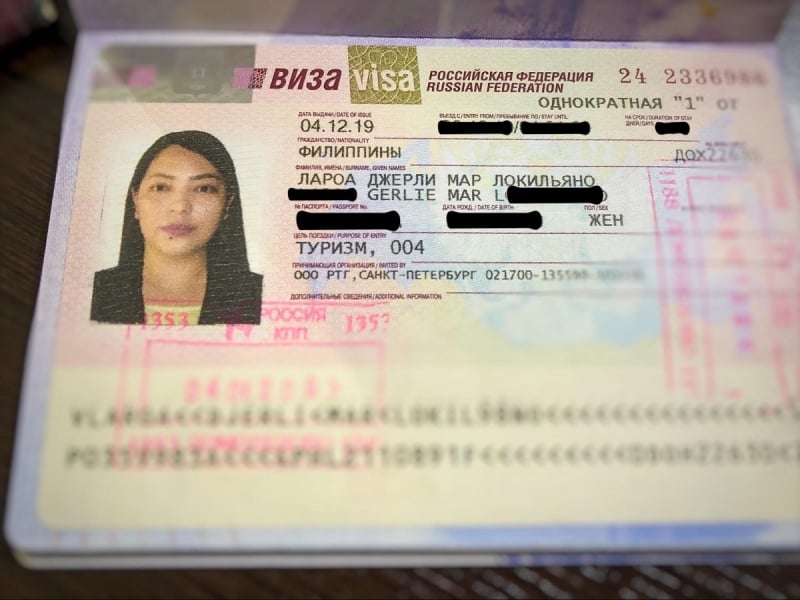
And, voila! We retrieved our passports with stamped visas after three days.
Moscow is the heart and cosmopolitan capital of Russia. It is also the northernmost and coldest megacity in the world! Here are 15 places to visit in Moscow, Russia that you can strike off your bucket list during the city’s winter season.
1. The Kremlin
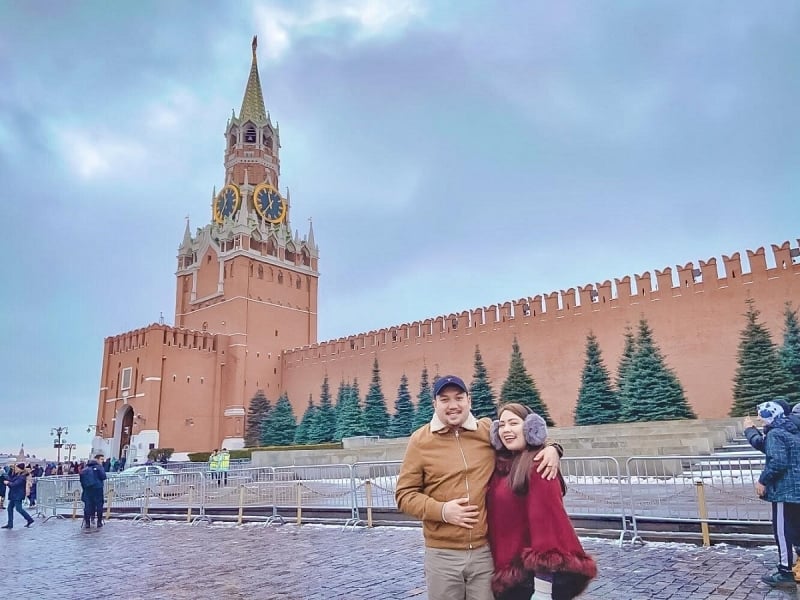
The Kremlin is the symbol of both Russian and (for a time) the Soviet Union. Today, this medieval city-fortress serves as the official residence of the President of the Russian Federation.
2. The Red Square
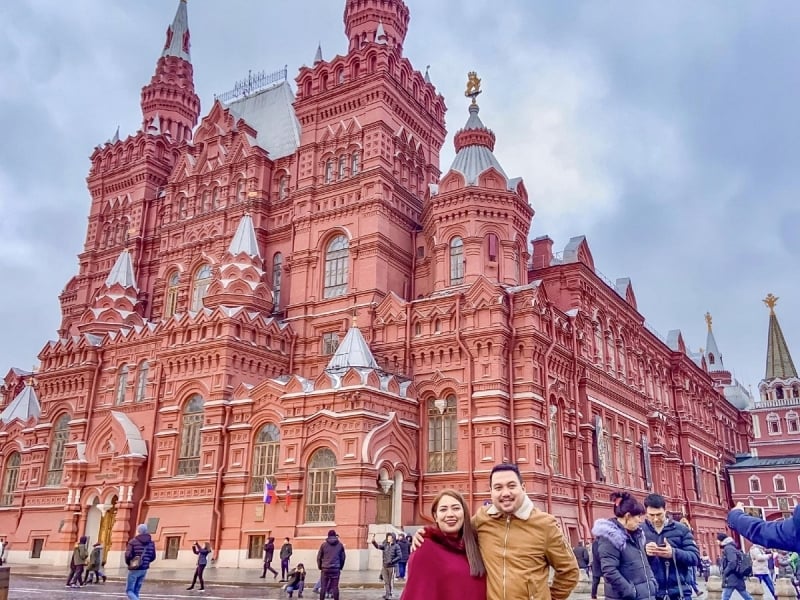
The Red Square remains to be the beating heart of Russia along with Moscow’s fascinating architectural jewels. It is considered to be the central square of Moscow since the city’s major streets, which connect to Russia’s major highways, originate from the square. It is also one of the UNESCO World Heritage Sites in the city!
3. The Saint Basil’s Cathedral
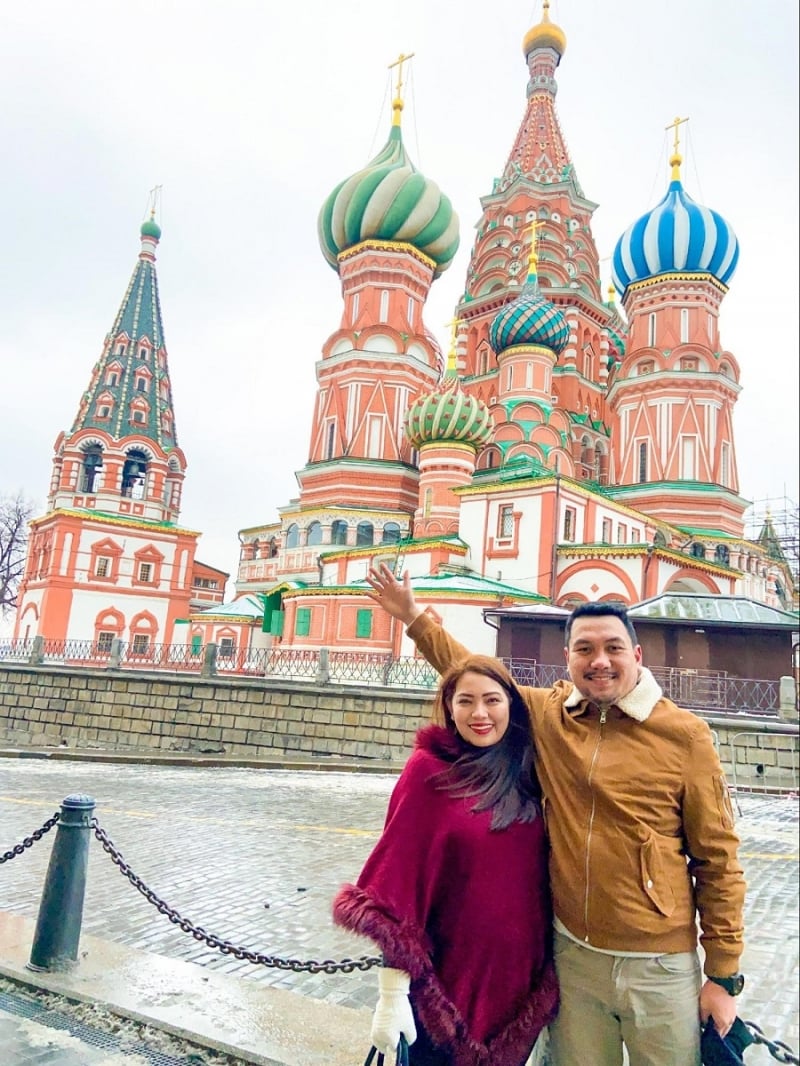
The famous onion domes of Saint Basil’s Cathedral are some of the most recognisable symbols of Russia. Originally known as Trinity Church and later Trinity Cathedral, it is shaped like the flame of a bonfire rising into the sky.
4. The Moscow Metro
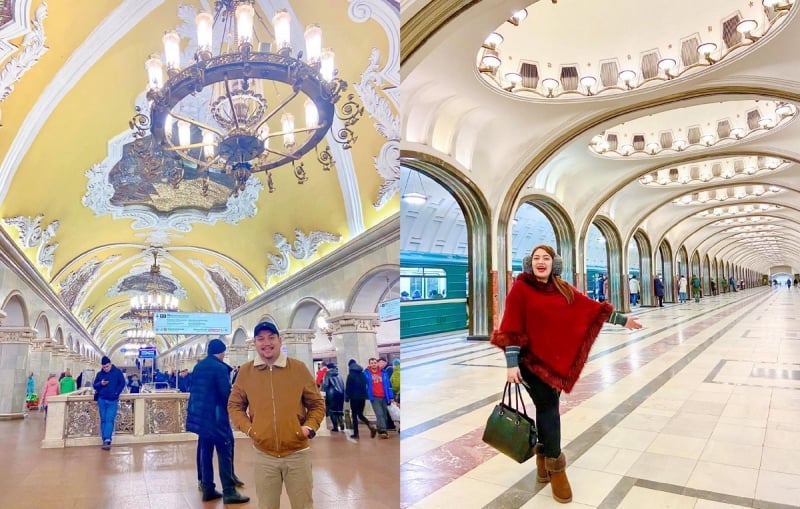
The Moscow metro system has several lines that run through the city. Some are located deep underground, so the escalators leading to the station tend to be a lot longer than anyone would imagine. Many cities don’t make an effort, or at least haven’t considered, to make their metro stations architecturally attractive. But for Moscow, it’s a different case. In fact, in this city, the metro was originally built as an architectural attraction on its own!
5. The Cathedral of Christ the Saviour
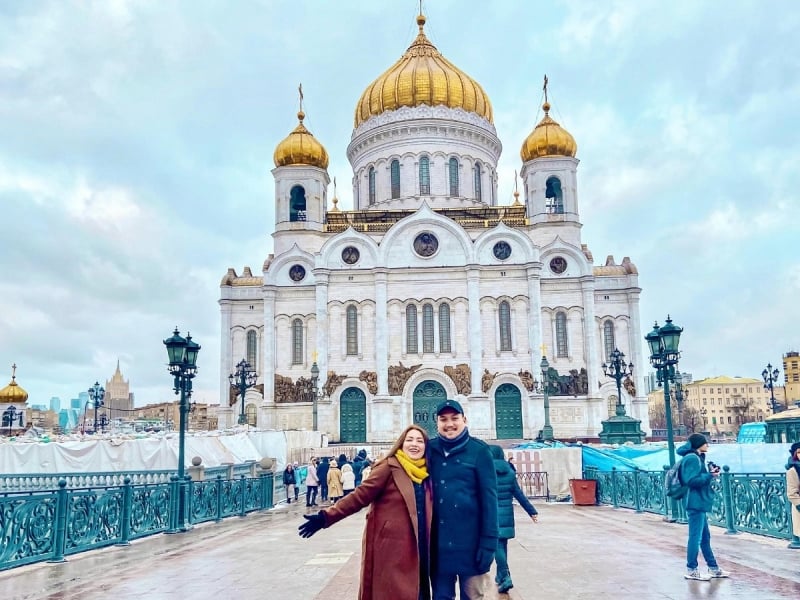
This cathedral is deemed to be the most important cathedral in Moscow. It is the highest Orthodox temple in the world and the seat of the Orthodox Patriarch of Moscow. Its largest dome was gilded with a then-new technique called “gold electroplating”.
6. The Novodevichy Convent
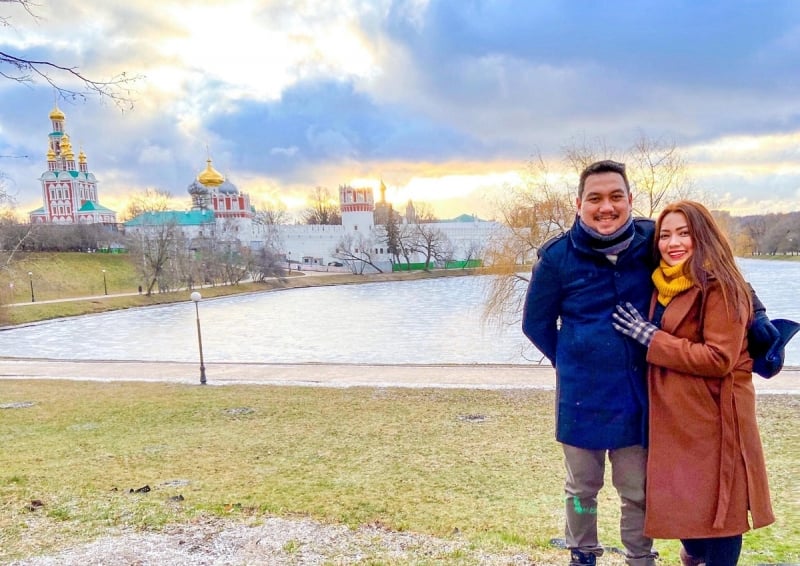
Previously called New Maidens’ Convent, the Novodevichy Convent is a functioning monastery that also deserves a slot in your list of places to visit in Moscow. Women are advised to cover their heads and shoulders when entering the churches, while men are advised to wear long pants. Its white Smolensk Cathedral is the oldest and most dominant building on the grounds.
7. The Gorky Park Museum
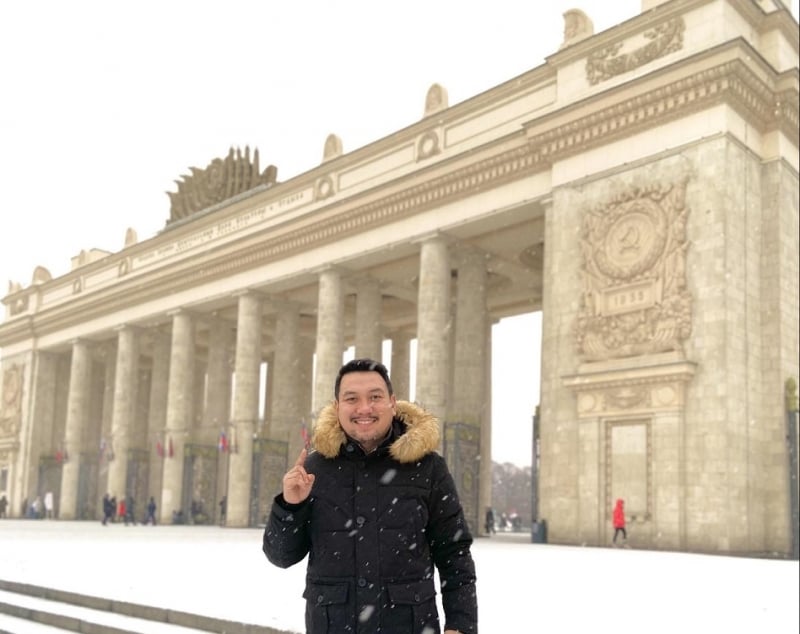
Gorky Central Park of Culture and Leisure is a central park in Moscow which was named after Maxim Gorky, a Russian writer and political activist. In the winter, Gorky Park turns into a shimmering winter wonderland that features an ice skating rink available to the public.
8. The Izmailovsky Market
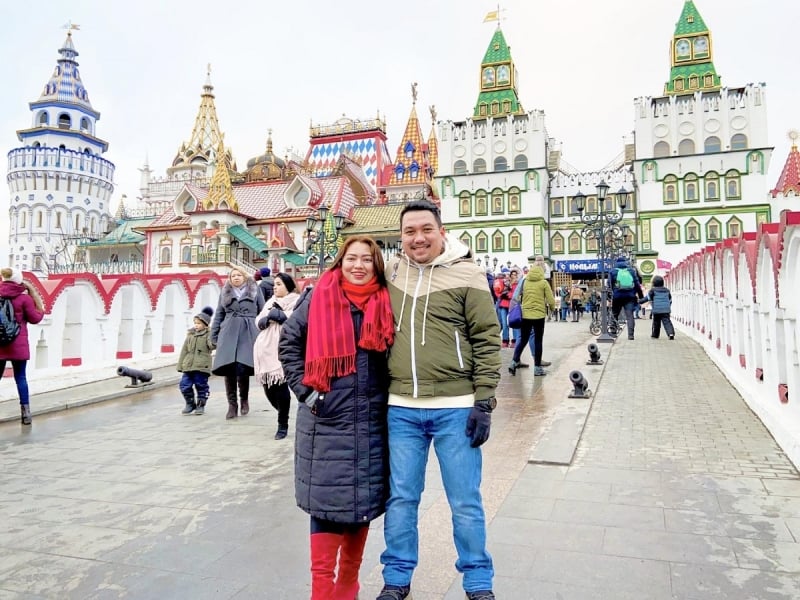
One of the top flea markets in Moscow, the Izmailovsky Market is the best place to shop for authentic hand-made Russian beautiful crafts and unique souvenirs in the city.
9. The Volen-Stepanovo Ski Resort

Only two hours away from the Moscow city centre, the Volen-Stepanovo Ski Resort is one of the best ski and snowboard resorts in the Moscow region. You have the option of going there by train or taxi.
10. The Panorama 360
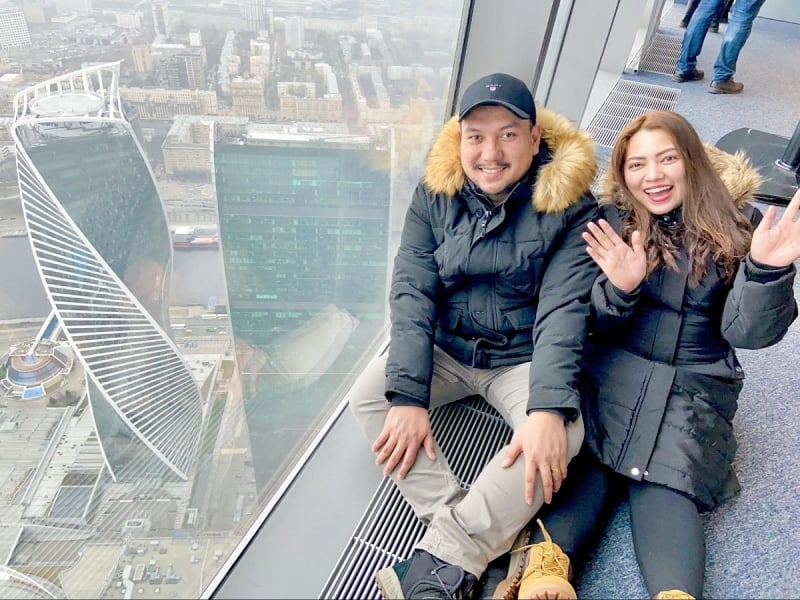
Offering spectacular 360-degree panoramic views of Moscow, Panorama 360 is the highest observation deck in Europe. Here, you’ll also find the highest ice cream factory and the highest chocolate factory in the world!
11. The highest chocolate and ice cream factories in the world
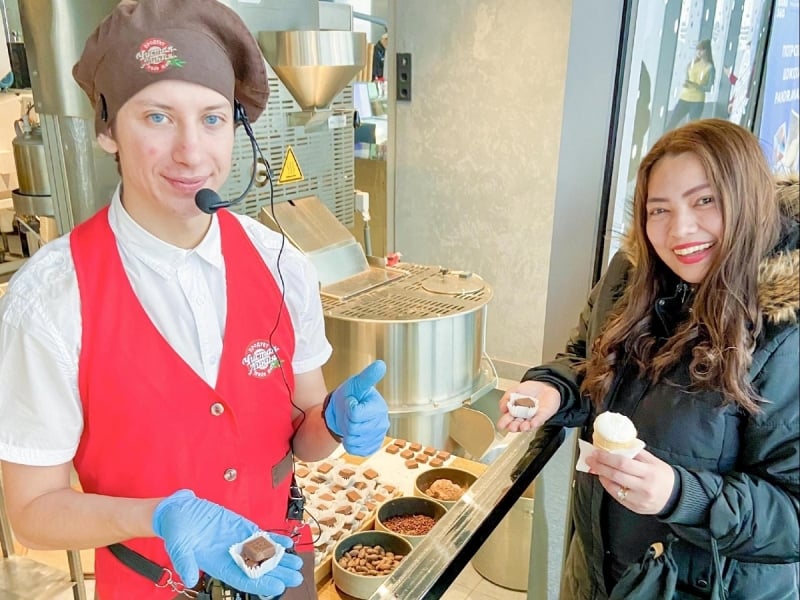
Located on the 89th floor of the Federation Tower in Moscow are the world’s highest ice cream and chocolate factories. Visitors to the observation deck of Panorama 360 can watch the full cycle of chocolate production — from crushing cocoa beans to moulding finished products. You can also observe the ice cream production and even taste a serving for free!
12. The decorated streets of Moscow
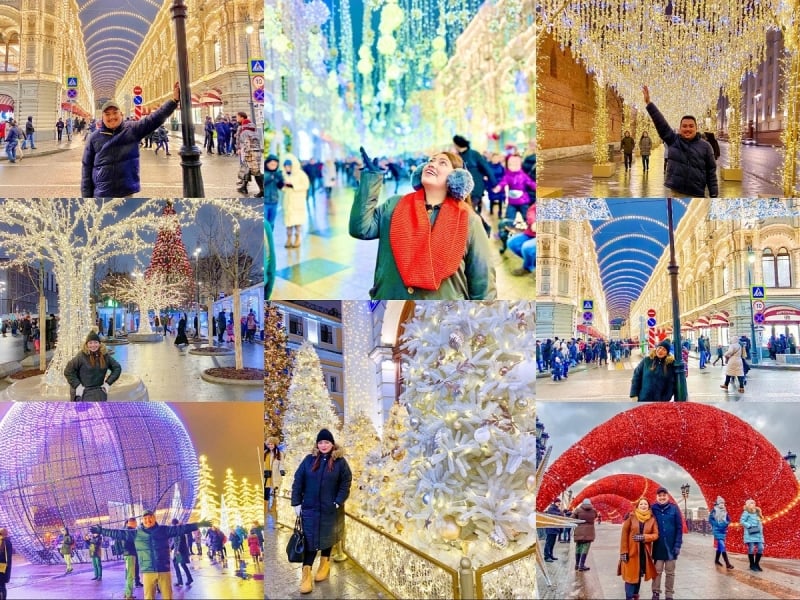
Moscow has a long-standing tradition of decorating city streets for the New Year and Christmas. As a visitor, you can revel in the fun and festive sceneries while braving the chilly temperatures outdoors.
13. The GUM
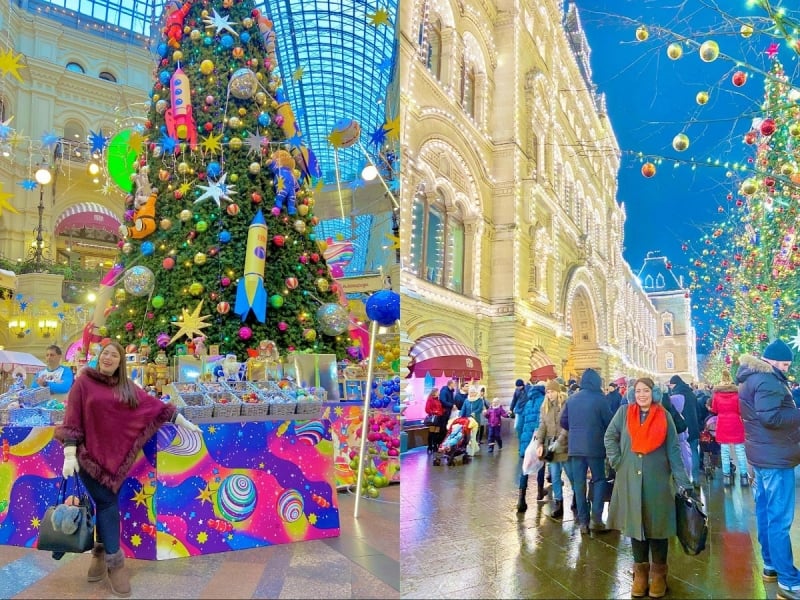
The GUM is both an architectural landmark and a luxury shopping centre. It the largest department store in Russia situated on a traditional market site on the northeast side of Red Square in Moscow.
14. Moscow International Business Center – The Skyscraper City
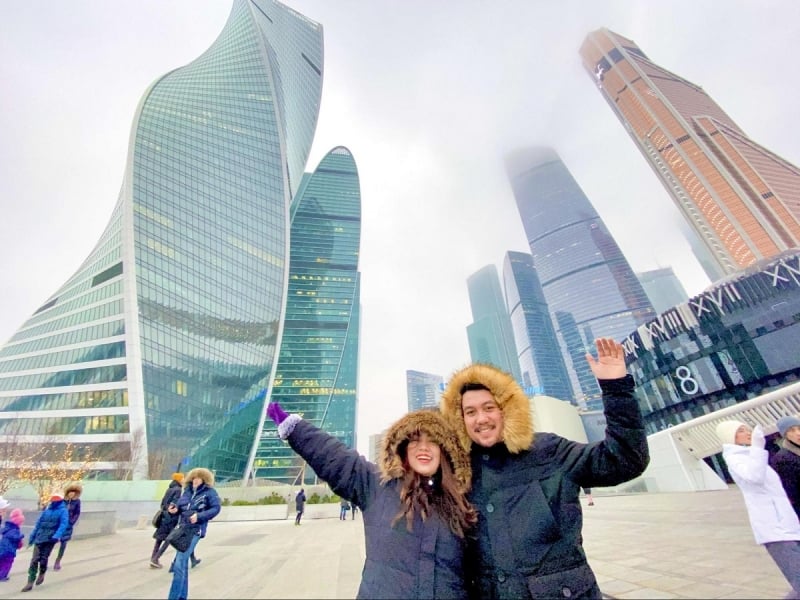
Currently the largest modern skyscraper complex in Europe, the Moscow City or Moscow International Business Center (CINM) is home to the largest Russian companies and foreign multinationals. The Federation Tower, the highest of the buildings and comes with an observation deck, is made up of two skyscrapers located in the centre of the complex.
15. The Moscow city centre itself
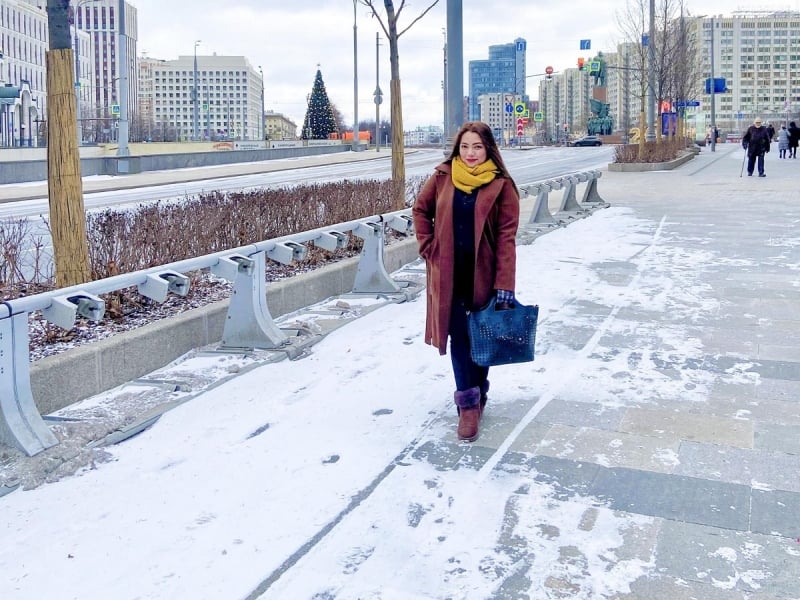
A no-brainer, but if you happen to have spare time, you can also always explore Moscow’s city centre itself, the largest attraction of all. Who knows what you’ll discover while wandering around this massive city?
Also read: 8 Incredible Reasons Why You Should Travel to Russia
To wrap up, always check the daily weather forecast in the city. If you’re lucky and it’s forecasted to have snow showers at particular hours of day, it really happens! Also, invest in winter garments that can help you withstand the cold, wind, and snowstorms. Layering clothes and warmers are your best friends during this time of the year.
There is no doubt that Moscow is a dreamy and glorious place to visit during the winter season. So treat yourself by enjoying the magical views and activities the city has to offer!

Gerlie Mar Laroa
Gerlie is a Filipina born and raised in Davao, Philippines. She currently works in a government hospital in Doha, Qatar. An idealist, a visionary, and a happily married woman, she sees to it that she finds time to travel in order to discover, learn, experience, and improve herself as a person.
How to Make the Most Out of Virtual Networking Events
8 heritage restaurants and cafes you can find in metro manila, 10 educational tiktok channels run by empowered pinays, 3 skills filipinos can learn in chiang mai, thailand, 10 easiest herbs to grow indoors for beginner gardeners, advertising & collaboration.

Advertise | Cut through the noise with integrated marketing solutions across multiple channels.
Press | Send us your Press Releases & Media Invites.
Editorial | Contribute your travel stories or submit content enquiries.
- Skip to primary navigation
- Skip to main content
- Skip to primary sidebar
- Skip to footer
TravelAwaits
Our mission is to serve the 50+ traveler who's ready to cross a few items off their bucket list.
19 Unique And Fabulous Experiences In Moscow

- Destinations
Thinking of visiting Russia? When visiting such a famous city, one must, of course, visit the iconic landmarks first. Moscow has plenty of those, most of them in the center of the city, which is very well-planned for tourists. Once you’ve seen the sights that are on most travelers’ lists, it’s time to branch out and visit some of the lesser-known sites, and there are some fascinating places to see and things to do.
I know this list is long, but I just couldn’t help myself. You probably won’t have the time to see them all. But that’s okay. Just scroll through the list and choose what sounds the most interesting to you. Where possible, make sure to book in advance, as things can get crowded, especially during high season.

1. The Red Square, Kremlin, And Surroundings
Red Square (Krasnya Ploshad) is the heart and soul of Russia, and where much of the country’s history has unfolded. This is the most famous landmark in Moscow and indeed the whole country, it’s an absolute must-do! The square is always full of people and has a rather festive atmosphere!
Saint Basil’s Cathedral
This is the famous church with the rainbow-colored, onion-domed roof. The cathedral was commissioned in the 1500s by Ivan the Terrible and according to legend, the Tsar thought it was so beautiful, that he ordered that the architect’s eyes be cut out afterward, so he could never build anything more beautiful! He wasn’t called Ivan the Terrible for no reason!
Lenin’s Mausoleum
The “love-it-or-hate-it” of tourist attractions in Russia. A glass sarcophagus containing the embalmed body of Russian revolutionary, Vladimir Lenin. It may seem a bit bizarre to display the mummy of a person, but it has been there for almost half a century and the 2.5 million visitors who come each year, clearly feel the queuing and thorough body search are worth it, to be in Lenin’s presence.
Pro Tip: no photos and no loud talking are allowed inside the Mausoleum.
Eternal Flame
There is an Eternal Flame in honor of an unknown soldier on the left side of Red Square. The hourly changing of the guards is worth seeing.
The Kremlin is the official residence of the Russian president. You can see it from the outside, or you can take an excursion to one of the museums located inside. This is the biggest active fortress in Europe, and holds a week’s worth of attractions! Once behind the 7,332-feet of walls, there are five squares, four cathedrals, 20 towers, various museums, and the world’s largest bell and cannon to see. Worth a special mention is the Armory Chamber that houses a collection of the famous Faberge Eggs.
Pro Tip: You can only go inside the Kremlin if you are part of a tourist group.

2. Bolshoi Theatre
Bolshoi Theatre translates to “The Big Theatre” in Russian, and the building is home to both the Bolshoi Ballet and Bolshoi Opera — among the oldest and most famous ballet and opera companies in the world.
Pro Tip: It’s hard to get an inexpensive ticket, so if you’re reading well in advance of going to Moscow then try buying tickets on the official website . Last-minute tickets cost around $250 per person. If this is out of your budget, about an hour before a performance, you can try buying a ticket at the entrance from a reseller. Most can speak enough English to negotiate the price.
Tour the Bolshoi Theatre: You can take a group guided tour of the Bolshoi Theatre which focuses on the history and architecture of the theatre and behind the scenes. There’s an English language tour that lasts 2 hours and costs around $300 for a group of up to six.

3. Luxury Shopping At GUM And TSUM
Russia’s main department store, GUM, has a stunning interior that is home to over 100 high-end boutiques, selling a variety of brands: from luxurious Dior to the more affordable Zara. Even if shopping is not on your Moscow to-do list GUM is still worth a visit; the glass-roofed arcade faces Red Square and offers a variety of classy eateries. TSUM, one of the biggest luxury malls in town, is right behind the Bolshoi and GUM. It’s an imposing building with lots of history, and worth a visit just for its design and its glass roof.

4. Christ The Savior Cathedral
This is one of Russia’s most visited cathedrals and is a newer addition to the gorgeous array of Muscovite cathedrals, but don’t let its young age fool you. After perestroika, in the early 90s, the revived Russian Orthodox Church was given permission to build a cathedral on this site. It did the location honors and built the largest temple of the Christian Orthodox Church. The façade is as grand as you’d expect, but it’s the inside that will mesmerize you, with its domes, gold, gorgeous paintings, and decor!
The cathedral is located just a few hundred feet away from the Kremlin and was the site of the infamous Pussy Riot protest against Putin back in 2012.
Pro Tip: Bring a shawl to cover your hair as is the local custom.

5. Gorky Park
Moscow’s premier green space, Gorky Park (Park Gor’kogo) is the city’s biggest and most famous park. There is entertainment on offer here for every taste, from outdoor dancing sessions to yoga classes, volleyball, ping-pong, rollerblading, and bike and boat rental in summer. In winter, half the park turns into a huge ice skating rink. Gorky Park is also home to an open-air movie theater and the Garage Museum of Contemporary Art. There is also Muzeon Art Park, a dynamic contemporary space with a unique collection of 700 sculptures. It is located right in front of Gorky Park.
6. Sparrow Hills Park
If you take a walk from Gorky Park, along the Moscow River embankment, you’ll end up in the city’s other legendary park, Sparrow Hills. Although the park doesn’t offer as many activities as its hip neighbor, it has a great panoramic view of the city
Pro Tip: You can take a free walking tour to all of the above attractions with an English-speaking guide.

7. River Cruising
One of the best ways to experience Moscow, and see all the famous landmarks, but from a different angle, is from the Moscow River. Take a river cruise. Avoid the tourist crowds. There are little nameless old boats that do the cruise, but if you are looking for a more luxurious experience take the Radisson Blu cruise and enjoy the sights with some good food and a glass of wine.

8. Metro Hopping
Inaugurated in the 1930s, the Moscow Metro system is one of the oldest and most beautiful in the world. Started in Stalinist times, each station is a work of art in its own right. I’d recommend touring the stations between 11 a.m. and 4 p.m. This way, you’ll be able to properly see it without the crowds. Ideally, I’d recommend taking a tour with a knowledgeable guide with GuruWalk, who will tell you stories of forgotten stations and how the history of the country is interconnected with the metro development. If going by yourself, then I definitely recommend checking out: Mayakovskaya, Ploschad Revolutsii, Kievskaya, Kropotkinskaya, Kurskaya, and Novoslobodskaya stations.
Visit the free Moscow Metro Museum: For real train enthusiasts, located in the southern vestibule of Sportivnaya station is a small free museum. Here you can take a peek into the driver’s cabin, see a collection of metro tokens from different cities, and see different models of a turnstile, traffic lights, escalator, and more.

9. Moscow State University View
In his effort to create a grander Moscow, Stalin had seven skyscrapers built in different parts of town; they’re called the Seven Sisters. The largest of these buildings and the one with the best view is the main building of the Moscow State University. Although this is a little outside the city center, the view is more than worth it.

10. Izmailovsky Market
Mostly known for the city’s largest flea market, the district of Izmaylovo is home to a maze of shops where you can get just about anything, from artisan crafts to traditional fur hats, handcrafted jewelry, fascinating Soviet memorabilia, and antiquities. It’s also one of Moscow’s largest green spaces. There are often no price tags, so be prepared to haggle a bit. Head to one of the market cafes for a warming mulled wine before continuing your shopping spree.
The History of Vodka Museum is found here, and the museum’s restaurant is the perfect place to sample various brands of the national drink.
Once you’ve covered the more touristy spots, Moscow still has plenty to offer, and the places below will also be full of locals! So for some local vibes, I would strongly recommend the spots below!

11. Moscow City
With a completely different vibe, Moscow City (also referred to as Moscow International Business Center) is like a mini Dubai, with lots of impressive tall glass buildings. Here is where you’ll find the best rooftops in towns, like Ruski Restaurant, the highest restaurant both in Moscow City and in Europe. Moscow City is great for crowd-free shopping and the best panoramic views of the city.

12. Tretyakov Gallery
Tretyakov Gallery started as the private collection of the Tretyakov brothers, who were 19th-century philanthropists. They gave their private collection to the government after their deaths. If there is just one museum you visit in Moscow, I recommend this one!

13. Tsaritsyno Museum-Reserve
Tsaritsyno was a residence of Catherine the Great more than two centuries ago. It became derelict during the Soviet era but has now been fully renovated. With its opulently decorated buildings, gardens, meadows, and forests, Tsaritsyno Park is the perfect place for a green respite in Moscow.

14. Kolomenskoye
A 10-minute metro ride from the city center is Kolomenskoe Museum-Reserve, where you can get an idea of what Russia looked like 200 years ago. You’ll find ancient churches (one dating back to the 16th century), the oldest garden in Moscow, and the wonderful fairytale wooden palace of Tsar Alexey Mikhailovich, father of Peter the Great.

15. Ostankino TV Tower
Built in 1967, Ostankino TV Tower was the tallest free-standing construction in the world at the time, it’s still the 8th tallest building in the world and the highest in Europe. It’s also the best observation deck, with a glass floor and 360-degree views. The speedy elevators take you 1,105 feet in next to no time.
Pro Tip: You need to book in advance; entrance is based on specific ticket times and the capacity is limited and only a certain number of tourists are allowed per day. Don’t forget your passport, you’ll need it to get through security.

16. Zaryadye Park
Zaryadye is a newly opened, landscaped urban park so new you won’t find it in a lot of tour guides. The park is near Red Square and is divided into four climatic zones: forest, steppe, tundra, and floodplains, depicting the variety of climatic zones in Russia.
These last three suggestions are a little quirky, but all are really worth checking out.
17. Museum Of Soviet Arcade Games
Release your inner child playing on 66 arcade machines from the Soviet era! What a great way to spend a couple of hours when tired of visiting museums and palaces. The staff speaks excellent English and are happy to explain how the games work.

18. Moscow Rooftop Tour
Take a 1-hour private Moscow rooftop tour with an experienced roofer. I can just about guarantee none of your friends will be able to say they’ve done it! For your comfort, I recommend wearing comfortable shoes. Take your camera, there are some amazing photo opportunities out there!

19. Sanduny Banya
This classical Russian bathhouse opened its doors in 1808 and is famous for combining traditional Russian banya services with luxurious interiors and service. If you enjoy spas and saunas, then you should experience a Russian bathhouse at least once in your life! Go with an open mind and hire a specialist to steam you as it’s meant to be done — by being beaten repeatedly with a besom (a leafy branch)! This is said to improve circulation, but is best done by a professional!
So there you have my list of things to do in Moscow. I could have gone on and on and on, but I didn’t want to try your patience! There are so many things to do in this vibrant city that you’ll definitely need to allocate several days for exploring.
Here are some other reasons to visit Moscow and Russia:
- 7 Reasons To Put Moscow On Your Travel Bucket List
- Russia 30 Years (And 30 Pounds) Ago
- Massive Mysterious Craters Appearing Again In Siberia

Born and raised in Sydney, Australia, before moving to Africa at the age of 21, Sarah Kingdom is a mountain climber and guide, traveler, yoga teacher, trail runner, and mother of two. When she is not climbing or traveling she lives on a cattle ranch in central Zambia. She guides and runs trips regularly in India, Nepal, Tibet, Russia, and Ethiopia, taking climbers up Tanzania’s Mount Kilimanjaro numerous times a year.

15 Top-Rated Tourist Attractions & Things to Do in Moscow
Written by Diana Bocco Updated Dec 23, 2023 We may earn a commission from affiliate links ( )
Moscow is one of Europe's most enigmatic destinations, home to a fascinating history and colorful, awe-inspiring architecture you won't find anywhere else in the world. Moscow might be one of the most populous cities in the world with over 11 million inhabitants, but this hasn't changed its strong cultural and social traditions.
Walk the cobblestone streets of the Red Square or the banks of the Moskva River early in the morning, and it's hard to tell what century you're in.
Tsarist architecture, must-see churches, and glamorous shopping opportunities blend together for a visual experience you won't forget. For ideas on what to see and do while visiting Russia, here's our list of top tourist attractions in Moscow.
1. Marvel at the Size of the Kremlin
2. catch a performance at the bolshoi theatre, 3. shop at the luxurious gum, 4. make your way into lenin's mausoleum, 5. spend an hour (or three) at red square, 6. discover history at the museum of cosmonautics, 7. ride the stunning moscow metro, 8. explore the moscow state integrated museum-reserve, 9. spend a rainy day at the tretyakov gallery, 10. walk up and down arbat street, 11. stop by the vdnkh all-russian exhibition centre, 12. wander around gorky park, where to stay in moscow for sightseeing, map of tourist attractions & things to do in moscow.
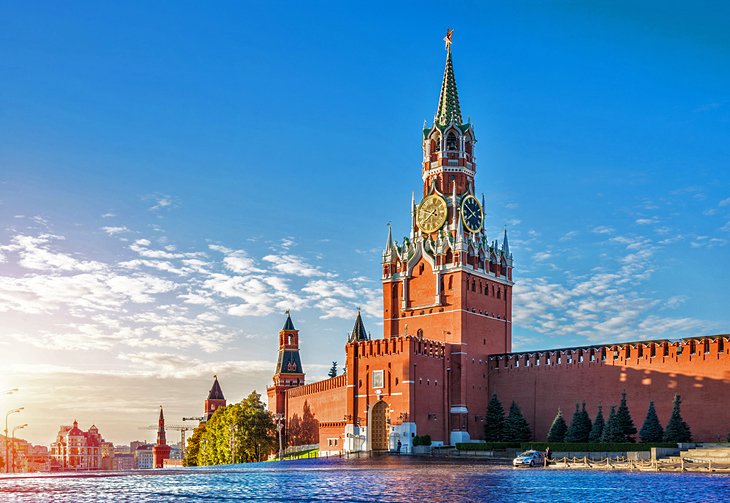
Moscow's most recognizable structure is without a doubt the Kremlin, a 15th-century fortified complex that covers an area of 275,000 square meters surrounded by walls built in the 1400s.
The Grand Kremlin Palace -which has over 700 rooms- was once home to the Tsar family and is now the official residence of the president of the Russian Federation, although most heads of state choose to reside elsewhere.
The massive complex also includes many other buildings, some of which are open to the public and can be visited regularly. Aside from three cathedrals (including one where the Tsars were once crowned) and a number of towers, the Kremlin is also home to the Armory building, a museum holding everything from the royal crown and imperial carriages to the ivory throne of Ivan the Terrible and Fabergé eggs.
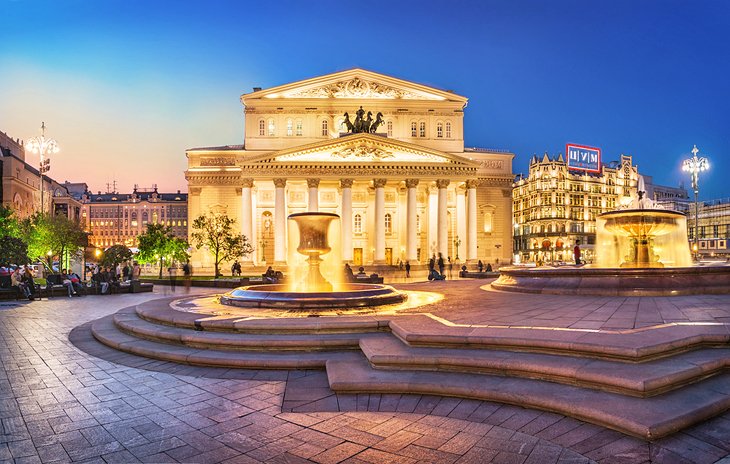
The Bolshoi Theater is home to the largest and one of the oldest ballet and opera companies in the world . While the theater has undergone several major renovations over the past century-including a recent one in 2011 to restore some of the imperial architectural details-it still retains all of its Neoclassical grandeur.
The Bolshoi Theater you see today opened in 1824, after several older versions burned down. Inside, red velvet, a three-tiered crystal chandelier, and gilt moldings give the place a Byzantine-Renassaince grandiose feel like no other.
Catching a show from the resident ballet and opera troupes is a treat, as the theater often presents a number of classic performances, such as Tchaikovsky's Mazeppa and Rachmaninoff's Francesca da Rimini, both of which originally premiered here.
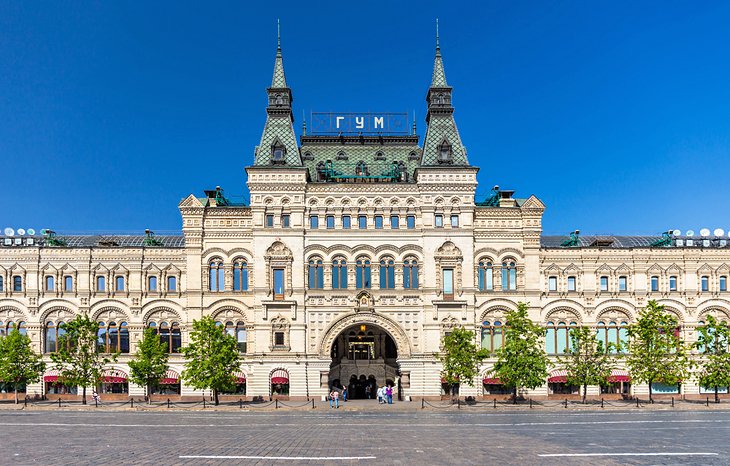
Moscow's oldest and most upscale shopping center is an architectural marvel. GUM (short for Glávnyj Universálnyj Magazín or "Main Universal Store") was built in the late 1800s in neo-Russian style to showcase a beautiful mix of a steel skeleton and 20,000 panels of glass forming an arched roof.
This was a unique construction at the time, since the glass had to be strong enough to support the snow-heavy Russian winters. The building is just as impressive outside, with all three levels covered in marble and granite.
While GUM is no longer the largest shopping center in Moscow, it's still by far the most beautiful. Home to brands like Gucci and Manolo Blahnik, this might not be the ideal destination for most budget-conscious visitors, but the beauty of the building itself is worth a visit.
On the third floor, there are also great dining options, including a Soviet-style canteen that serves traditional Russian food, and a stand selling ice cream made by hand using an original 1954 recipe originally approved by the Soviet government.
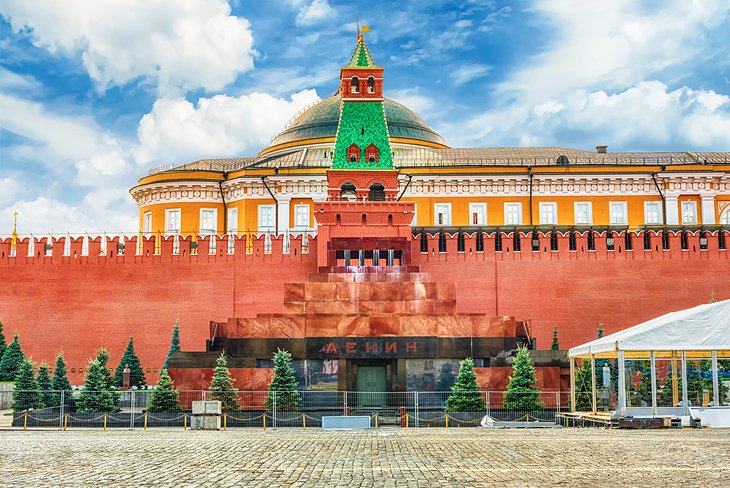
Lenin's Mausoleum, the final resting place of Soviet leader Vladimir Lenin, occupies a central spot in Red Square. His body has been in the mausoleum since his death in 1924-and although the original plan was for him to be buried after a short period of public display for mourning, the plan quickly changed.
After over 100,000 visited the tomb over a period of six weeks, it was decided that a new sarcophagus and a more permanent display space could actually preserve Lenin's body for much longer than expected-and Lenin's Mausoleum was built.
Over the years, the mausoleum and its marble stairs also became the main spot from where Soviet leaders would watch parades and events happening in Red Square.
Lenin's embalmed body can still be seen today, lying down in a bulletproof glass sarcophagus as if he's sleeping. While a visit to the mausoleum is certainly unusual, it has become a must-do for history buffs looking to understand how Lenin's legacy truly changed the nation. Come ready to wait, though -there are usually lines to get in.
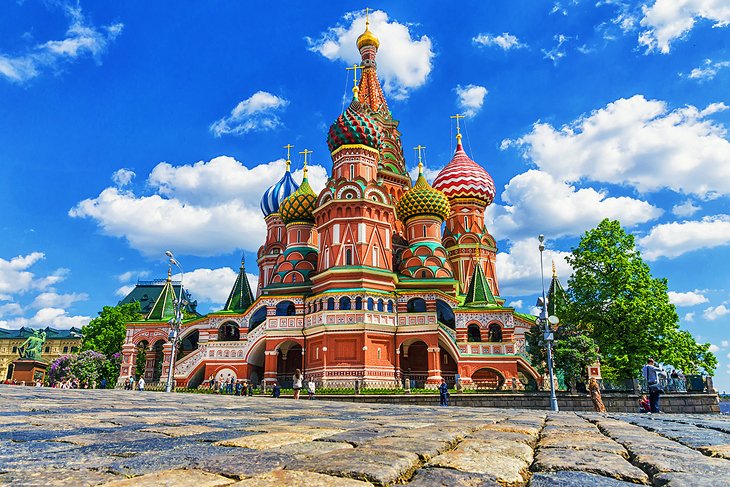
All of Moscow's main streets start at Red Square, so it's easy to see why this is considered the heart of the city. A massive space of 330 meters by 70 meters, the square is flanked by the Kremlin, Lenin's Mausoleum, two cathedrals, and the State Historical Museum.
In 1945, a massive Victory Parade was held here to celebrate the defeat of Nazi Germany by the Soviet Armed Forces.
St. Basil's Cathedral , one of the most recognizable buildings on the square, was built in 1555. The unique cathedral has architectural details inspired by Byzantine and Asian design, as well as details that resemble those found in famous mosques. There are nine individual chapels inside the church, all decorated with colorful mural art.
Both the square itself and the Kremlin are recognized as UNESCO World Heritage Sites . On weekends, there are sometimes stalls selling souvenirs and traditional items here, such as matryoshka (Russian nesting dolls), at the entrance of the square.
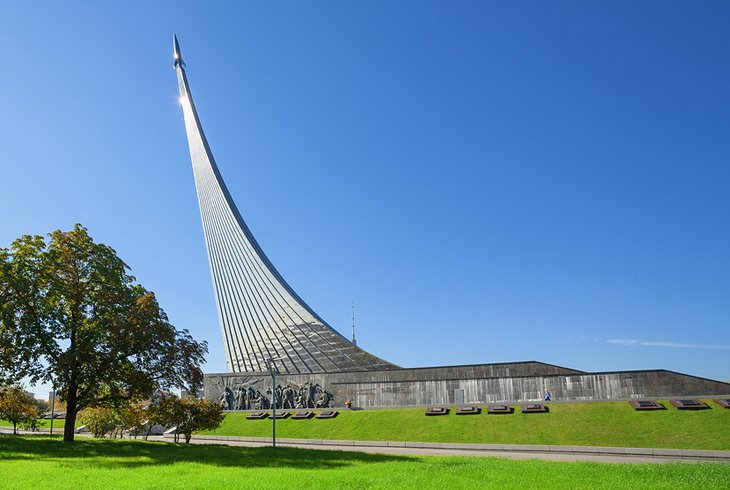
At one point, Russia and the US were toe-to-toe when it came to space exploration. While that might no longer be the case, the museum's amazing collection-which includes over 85,000 items-is still awe-inspiring.
Main exhibits include the space capsule used by Yuri Gagarin , the first human to travel into outer space; a USSR flag with moon fragments; a Soviet spacesuit; and a rocket propulsion unit from the 1960s. A special two-story hall showcases sections of the Mir space station interior, and there are also models of the first sputniks and a replica miniature spaceship.
English-language tours are available, and there's also a Cinema Hall showing subtitled short films about the history of space exploration programs and the first manned space flight.
The museum is located inside the base of the monument to the Conquerors of Space, which was built almost 20 years before the museum opened.
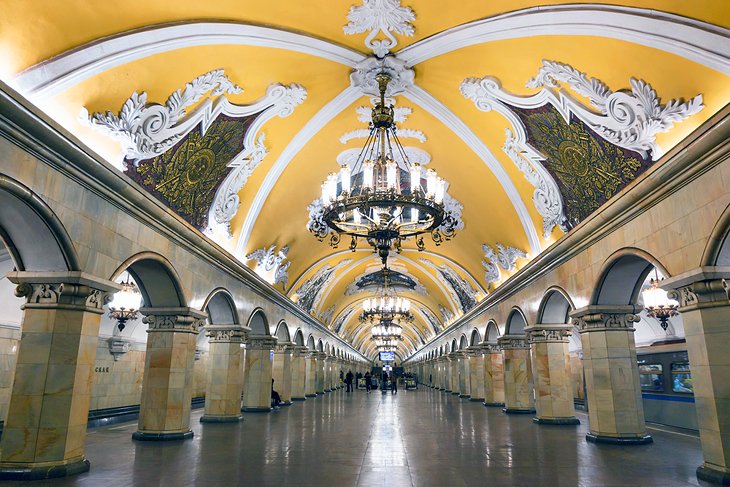
Riding the Moscow metro is an experience all in itself, but even just heading underground to walk through the stations is something no visitor should miss. With 223 stations and 12 metro lines crosscutting through Moscow, however, this can be tricky, so visiting at least a few of the most impressive ones is a good start.
Arbatskaya station was designed by a skyscraper architect, so it's no surprise that it features multicolored granite slabs and impressive bronze chandeliers.
Park Kultury station , located next to Gorky Park, is covered in marble and features reliefs of people involved in sports, while Teatralnaya station is decorated with porcelain figures dancing and wearing traditional Russian costumes.
The metro is open between 5:30am and 1:00am but it's very crowded in the early morning and after 4pm, so it's better to visit in the late morning or early afternoon to really appreciate the architecture without the crowds.
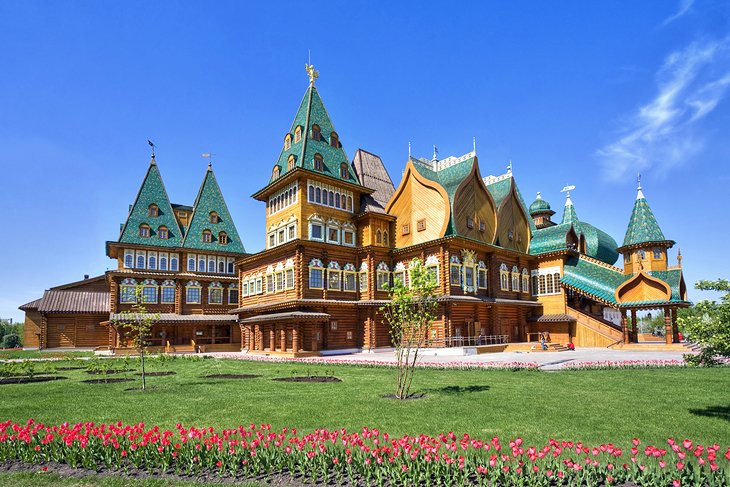
The Moscow State Integrated Art and Historical Architectural and Natural Landscape Museum-Reserve is a cultural open-air museum complex comprised of four different historical sites.
The most important site, the Kolomenskoye Estate, was once the summer residence of Tsars as far back as the 14 th century. The complex, which covers almost 300 hectares, is home to fairy-tale wooden palaces; a tent-roof stone church built in the 1500s; a water tower; fort towers and structures; and the 24-room Museum of Wooden Architecture , which includes the restored dining room of Tsar Alexei I.
Beautiful manicured gardens , riverside picnic areas, and a massive collection of both artifacts and structures make this a great destination to help you see what medieval Russia looked like. English-language tours are available, but you're also free to wander the grounds on your own.
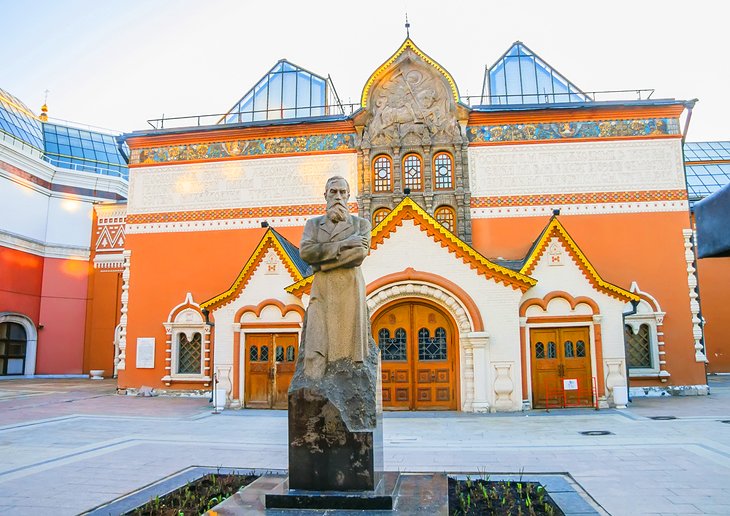
The largest collection of Russian art in the world sits here, with over 180,000 paintings, sculptures, and religious art dating back to over a millennia ago. The gallery, built using beautiful red and white colors from classical Russian architecture, is located near the Kremlin and it was built in the early 20 th century.
Significant art pieces include the Vladimir Mother of God; a Byzantine icon of the Virgin and child dating back to the 1100s; Andrei Rublev's The Trinity icon from the 15 th century; and several works by Ilya Repin, the most famous realist painter in Russia.
On the grounds of the museum, there is also an 86-meter-tall statue of Peter the Great, as well as a number of Socialist Realism sculptures.
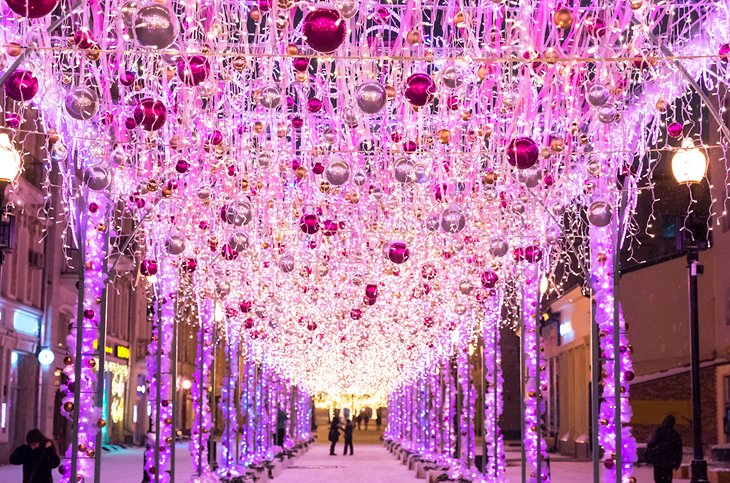
Moscow's one-kilometer-long pedestrian street has been around since the 15 th century. Originally a trade route in the outskirts of the city, Arbat Street is now very centrally located, home to posh buildings and lots of places to eat and shop.
Beautiful street lamps and two significant statues-one of Princess Turandot (from Puccini's last opera) and one of Soviet-era poet Bulat Okudzhava-adorn the street, which fills up with both locals and tourists on evenings and weekends.
A great place to pick up souvenirs or sit down at an outdoor café, Arbat Street also offers a chance to visit the former home of poet Alexander Pushkin and the café both Anton Chekhov and Leo Tolstoy used to visit.
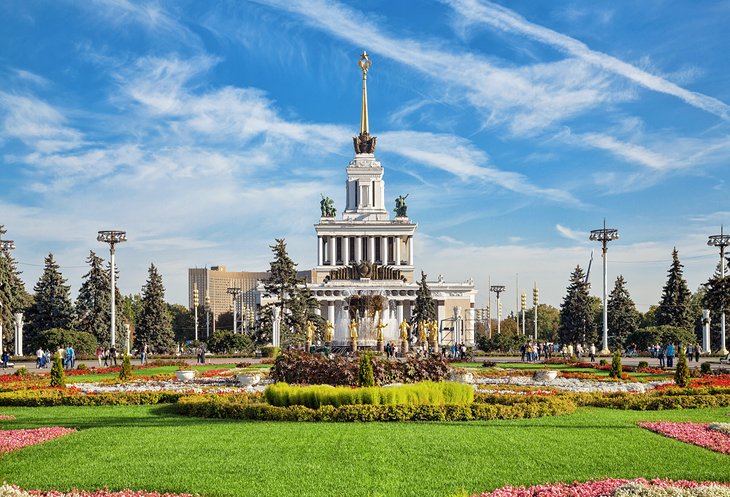
Although it was originally designed as a general-purpose trade show venue, this park complex now houses amusement rides , ice rinks , and a number of galleries and other attractions for all ages.
The park's most famous landmarks are the Moskvarium, a marine biology center home to over 8000 species of marine animals, the Garage Museum of Contemporary Art, and a shopping center selling traditional products from former Soviet countries.
There's even a film museum showing Soviet cartoons or even a full-length film (for an extra fee) and an education center offering masterclasses on everything from becoming a barista to video montage (call or write in advance to find out which ones are English-friendly).
Soviet-era pavilions, sculptures, and fountains abound here as well, including the famous Friendship of the Peoples Fountain, which features statues of women dressed in costumes from different former Soviet countries.
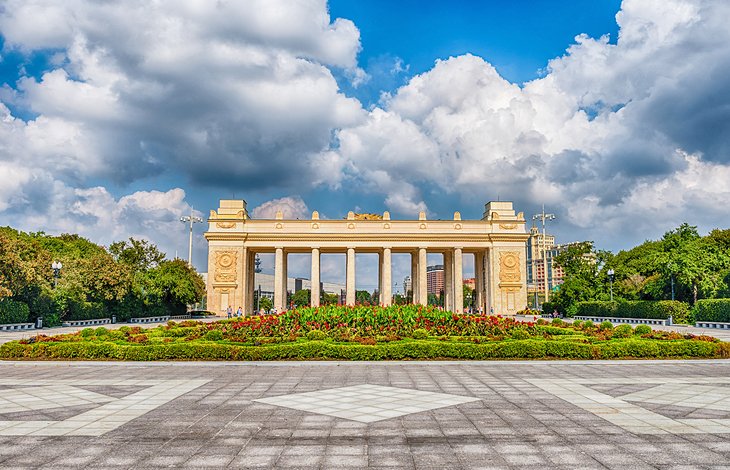
Named after the famous Russian writer Maxim Gorky (who was nominated for the Nobel Prize in Literature five times but never won it) and sitting right across the Moskva River, Gorky Park covers 120 hectares of beautiful ponds and green spaces.
Popular with both locals and tourists, the park offers a variety of things to enjoy-from sunbeds, hammocks, and drinking fountains to free yoga classes and children's playgrounds. There's free Wi-Fi and sockets for charging your phone, as well as many food stands and plenty of wild animals, including deer, rabbits, and pheasants.
Visitors can rent paddle boats and bicycles to explore the park-and from May to October, there is also an open-air movie theater, as well as scheduled presentations by street performers, musicians, and artists. Gorky Park attracts the young and old, so don't be surprised to see a mix of people exercising, playing chess, and sunbathing.
Luxury Hotels :
- Lotte Hotel Moscow is one of the top 5-star properties in Moscow offering the largest Royal Suite in Russia. The trendy rooms and suites here all have contemporary style and great city views. On-site amenities are plentiful. There are two restaurants: one serving contemporary Italian fare, and the other Japanese. There is an impressively lit indoor swimming pool, a well-known spa, and a state-of-the-art gym.
- Another excellent luxury hotel is the Ararat Park Hyatt Moscow . The residential-style property is in the heart of Moscow just next to the Bolshoi Theatre and within walking distance of the Kremlin and Red Square. The rooms and suites have been opulently designed by Tony Chi. The on-site restaurant serves a mix of European and Armenian specialities. There is also a Japanese sushi bar and a rooftop lounge with fabulous city views.
- The St. Regis Moscow Nikolskaya also has a central location just a few minutes from the Kremlin and Red Square. The 5-star property has a mix of elegant rooms and suites, including interconnecting room options for families with kids. There are multiple restaurants on-site including an Italian bistro. Other amenities include the fabulous Iridium Spa, which does a full range of treatments and has an indoor swimming pool, sauna, and steam room.
Mid-Range Hotels :
- Palmira Business Club is a top mid-range choice. The contemporary lifestyle hotel offers well-appointed rooms and suites, including options for families. Suites are quite spacious and have kitchenettes. Amenities here include a complimentary breakfast at the on-site restaurant, a hot tub, sauna, and spa. There is also a fitness center.
- The trendy Mercure Moscow Baumanskaya offers a mix of rooms and suites with contemporary decor. The mid-range hotel can arrange airport transportation and offers baggage storage. Other amenities include a restaurant and room service. The front desk is open 24 hours.
- Boutique Hotel Brighton is about 10 minutes from the city center in a leafy park area. It offers excellent value for money and has charming rooms and suites with sound-proof windows and doors, as well as blackout curtains. A complimentary breakfast is served, and there is also an indoor swimming pool.
Budget Hotels :
- Hotel Ibis Budget Moscow Panfilovskaya is about a 15-minute drive from Moscow's downtown, and it's within walking distance from a metro station that will take you there. The soundproof rooms at this budget property are clean, comfortable, and can sleep up to three people. The hotel is pet friendly, has paid parking available on-site, and also has a salon.
- If you just need a budget hotel near the airport then check out Aviator Hotel Sheremetyevo . Located right at the airport, it has soundproof rooms, including options for families. Amenities include an indoor play area for kids, a sauna and swimming pool, and a free breakfast.
More Related Articles on PlanetWare.com
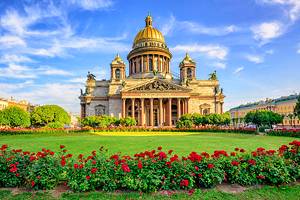
Exploring Russia: Whether you are interested in history, nature, or architecture, there's much to see in Russia. For a good introduction to some of the most fascinating spots in the country, take a look at our article on the Best Places to Visit in Russia . For more on Russia's second-largest city and all it has to offer, check out our piece on the Top-Rated Tourist Attractions in St. Petersburg .


Moscow Travel Guide: Interesting Facts and Tourist Maps
Moscow facts, what is moscow how big is moscow when was moscow founded when did moscow became the capital of russia is moscow in europe or asia and, finally, moscow tourist attractions and travel guides... all of this information can be found here in a single article. read it and be ready for your moscow vacations.
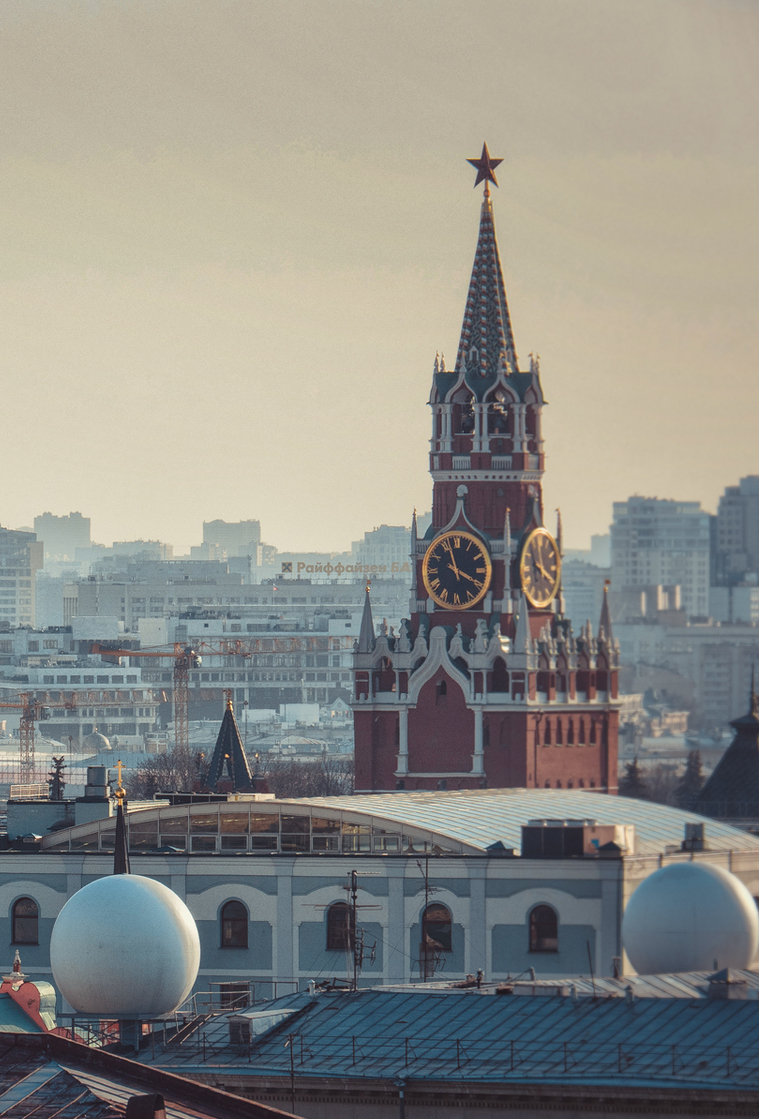
Moscow attractions
- Red Square (St Basil’s cathedral, Lenin's tomb, Kremlin, GUM, State Historical museum)
- KGB headquarters
- Moscow metro stations
- Christ the Savior cathedral (very beautiful but new)
- Tretyakov gallery (amazing paintings)
- Bolshoi theatre (its a legend...)
- Arbat and Tverskaya street (nice streets for walking)
- Novodevichy convent (ancient beautiful monastery in the centre of Moscow)
- Sparrow hills (Moscow University - monumental building of Stalin's epoch)
- «VDNH» (Museum of Space Exploration - monumental building of Stalin's epoch)
- Victory Park (memorial complex of Stalin's epoch)
- Secret Soviet bunker (65 meters by stairway to secret soviet bunker)
- Eliseevsky grocery store (shop with amazing interior left from 19th century)
- Gulag museum (dark sides of soviet history)
- Tsaritsino and Kolomenskoye parks (nice parks for walking in good weather with royal palaces)
- Moscow zoo (best place for families with children)
- Izmaylovo palace (modern but nice)
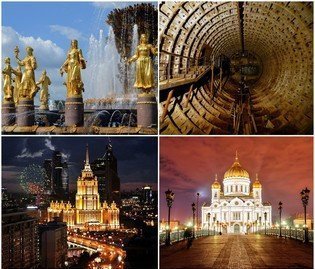
During the tour, we will escape the bustling center of Moscow to explore the ordinary life of people in the «rusty belt of Moscow». I will show you many pieces of the local life that will give you the complete picture of the Real Moscow at the end of the tour.
We will visit areas that are perfect to represent how Russian epochs have followed one another. Many years ago, the place was a far suburb of Moscow full of wooden houses. Then industrial revolution came to change cozy houses into the factories. USSR worsen the situation, turning whole area into the industrial zones of heavy machinery. Many years after, sleeping districts grew there to give a place to a new generation of Soviet people. Then Moscow became so huge, that such a godforsaken area suddenly turned into the very valuable land with a modern apartment complexes raising here and there out of nothing.
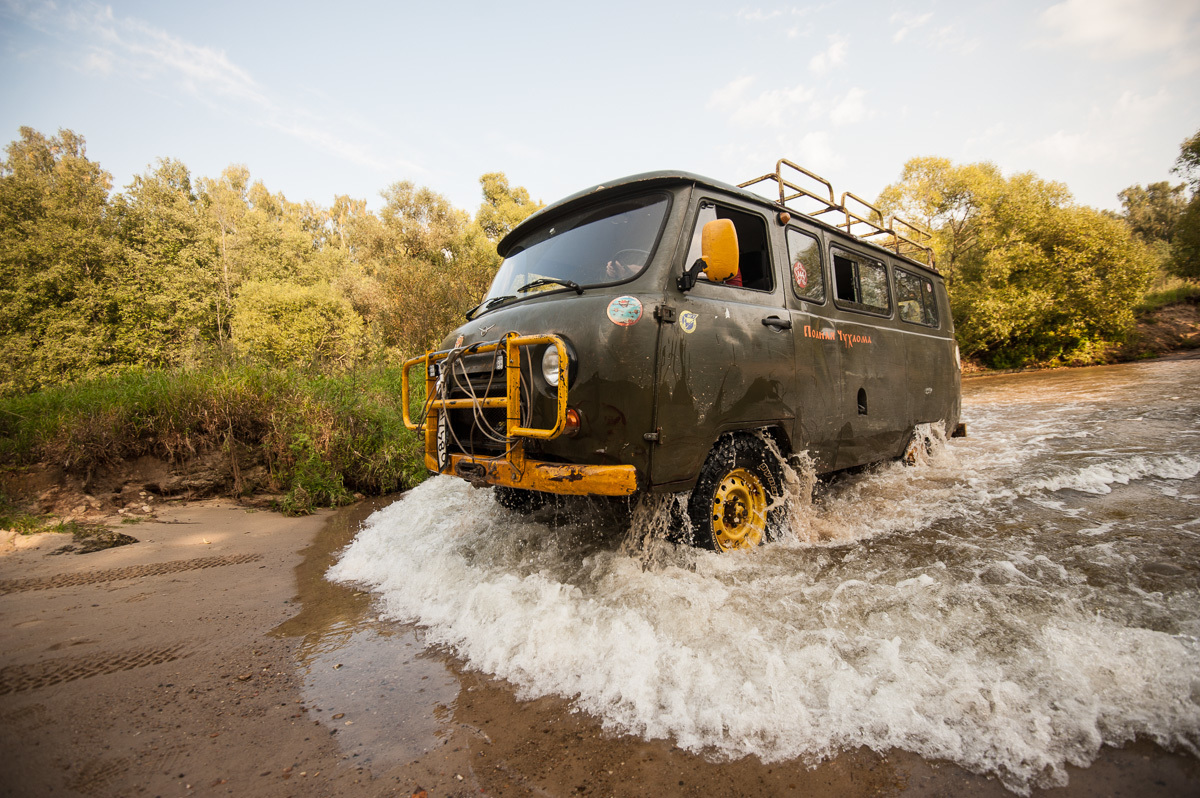
For a second part of our adventure, you will visit a network of underground limestone caves with an experienced caver guide. Depending on your adventurism, you can either wander in some easily accessible and beautiful cavern halls or you can search the depths of remote parts and the most challenging kilometers of a lengthy underground network!
Finally, after a long day of exploring, you will have a lovely meal of our traditional food and enjoy a blazing campfire.
Do you want to explore it by yourself? Find Top 10 attractions in Moscow
- Rest of World News
Moscow ready to welcome Indian travellers with improved infrastructure, untapped attractions
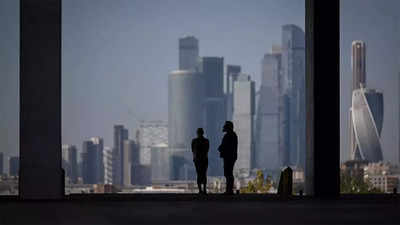
Visual Stories

- General Information
Moscow CityPass
The Moscow CityPass is a tourist card that gives you free entry to more than 40 top attractions in the Russian capital, including the Kremlin and Saint Basil's Cathedral.
Included attractions
The 10 most popular attractions included with the Moscow CityPass are:
- Saint Basil's Cathedral
- Bunker-42 Museum
- Tretyakov Gallery
- Tsaritsyno Palace Museum
- Museum of the Patriotic War 1812
- State Historical Museum
- Great Wooden Palace of Tsar Alexis I in Kolomenskoye
- Moscow Sightseeing Bus Pass
- Moscow River Cruise
Moscow CityPass Prices
You can buy the Moscow CityPass for a duration of 1, 2, 3 or 5 days depending how long you're planning to spend in the city.
Is it worth it?
Entrance into these attractions is worth much more than the cost of the CityPass, yet it offers even more, for example, the Pushkin Museum , the Museum of the History of Vodka and the Museum of Contemporary History , among others, plus discounts at restaurants, shows and shops. If you're already planning to visit these sights, then it's well worth buying the CityPass to save money on tickets.
Where to buy the Moscow CityPass?
You can buy your Moscow CityPass online in advance via our website . Then, all you need to do is collect it from the Komsomolskaya Tourist Information Centre (Komsomolskaya Square, 5-1), near the Komsomolskaya metro station. The office is open from 9 am until 8 pm.
You may also be interested in
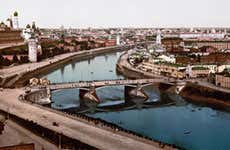
Moscow has seen its fair share of history, from invasions to revolutions: these days it is home to a wealth of culture and is one of the most populated capitals in the world.
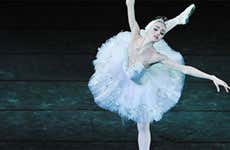
Russian National Ballet
Ballet is one of the most emblematic symbols of Russian culture, a dance that has infiltrated countries the world over. Watch a performance in Moscow!

Barcelona’s Tourist Tax Just Got Higher. Here Are Other Places That Will Cost You to Enter in 2024
B arcelona, one of Spain’s most visited cities , has just announced another hike in its tourist tax. This increase comes after multiple tourist destinations have implemented visitor fees in response to the problems caused by excessive tourism .
Overtourism, characterized by an overwhelming number of visitors that exceeds a location’s capacity, has led to increased environmental degradation, infrastructure strain, and a diminished quality of life for residents. Several cities and countries have implemented or increased tourist taxes to mitigate these effects. The funds also typically support necessary infrastructure and environmental protection projects.
The Rising Cost of Barcelona’s Welcome
Barcelona raised its tourist tax for the first time since 2022. The increase signals a continued effort to control the number of visitors. Since introducing the tax in 2012, the city has utilized these funds for essential infrastructure, including bus routes and roadwork. As of April 2024, the municipal fee has increased to $3.52 (€3.25) per night, up from $2.98 (€2.75) in 2023.
This tax applies to every visitor staying in official tourist accommodations. Guests will pay $3.79 (€3.50) per night for five-star and luxury hotels, $2.43 (€2.25) for holiday rentals like Airbnb, and $1.84 (€1.70) for four-star hotels. Meanwhile, cruise passengers must pay 3 euros ($3.25) for city tours shorter than 12 hours and 2 euros ($2.17) for longer ones.
Tourist Taxes Around the World
Barcelona is not alone in its approach. Various tourist hotspots worldwide have adopted similar measures . These destinations have introduced or increased tourist taxes to preserve their natural and cultural assets while ensuring that visitors contribute their fair share to the upkeep of these places.
Portimão and Olhão in Portugal have introduced a tourist tax that differs from high to low season. Charges vary from $2.13 (€2) per night starting from April to October and $1.07 (€1) per night from November to March. Children under 16 are exempt, and the tax is capped at five nights. This means the maximum additional cost per trip is $10.65, or €10.
In light of the upcoming 2024 Olympics , France also has significantly increased its tourist tax on hotel rooms by 200 percent as of January 2024. Depending on the city, the tax can reach up to 15 euros per night, or $15.98. This fee is a substantial increase to fund the expected influx of visitors and the related infrastructure needs.
Likewise, visitors to Bali must pay a fee of approximately $8.52 upon entry, collected at Ngurah Rai International Airport. This tax is designated for environmental protection projects, addressing the impact of decades of over-tourism on the island’s natural beauty.
After years of debate, Venice has also decided to charge an entrance fee of €5 to visitors on weekends and peak days between April and mid-July. The cost is applicable during peak hours to minimize queues and encourage more extended stays rather than day trips.
Looking Ahead
As tourist taxes become more prevalent, travelers must stay informed about the additional costs of visiting certain destinations . These taxes reflect the broader trend towards sustainability and responsible travel, emphasizing the need for travelers to contribute to the preservation and upkeep of the places they visit.
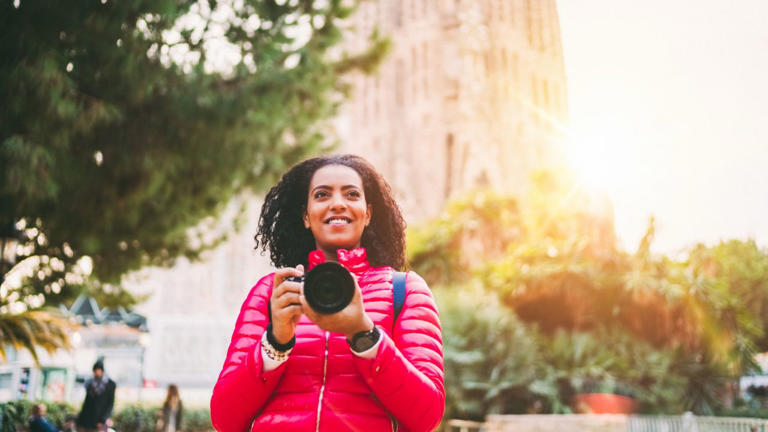

IMAGES
COMMENTS
Religious tourism, spiritual tourism, sacred tourism, or faith tourism, is a type of tourism with two main subtypes: pilgrimage, meaning travel for religious or spiritual purposes, and the viewing of religious monuments and artefacts, a branch of sightseeing. Types.
WELCOME Anatolian Landscape and Faith Tourism: Ancient Times to Present ATTENDEE PANEL CALL FOR PAPERS August 25 - 28 2022 Ankara & Cappadocia, Turkey Face to Face & Online (Safe Tourism Certified) Registration Fee: 300 TL(Academician and other participant)-200 TL(Student) Papers will be accepted in Turkish and English Online and face-to-face participations are both charged a participation fee ...
Cathedral of Christ the Saviour. Arbat & Khamovniki. This opulent and grandiose cathedral was completed in 1997 - just in time to celebrate Moscow's 850th birthday. The cathedral's sheer size and splendour….
The religious tourism market covers a broad range of tourism products, including pilgrimage trips, visiting sacred sites, church tourism, travel for worship and religious missions. While a large part of European residents are Christian, halal tourism has been growing in the last few years, as well as the demand for spiritual tourism. Important target markets in Europe include Germany, the ...
About the portal. A technological tool for effective communication between the leading players in the Moscow tourism market and representatives of the foreign/regional tourism industry through online events. OBJECTIVES: • Building long-term cooperation with foreign/regional representatives. • Raising awareness among foreign/regional ...
3. The Red Square is the first place where every tourist goes. It is the center, the heart of Moscow and many tourist attractions are located there. 4. GUM is a huge shopping center on the Red Square. It is quite expensive, so not so many people go there for shopping. Still, it is a fancy place.
Why visit Moscow? Majestic churches, impressive historic fortresses, and palatial buildings: Moscow is a fascinating city whose emblematic architecture reflects the turbulent history that has defined Russia throughout the centuries. The traces of the USSR can be found around every corner of the city, side by side with the iconic relics of Imperial Russia, like the mythical Red Square, the ...
Mr. Evgeny Kozlov, Deputy Head Mayor of Moscow Government and Chairman of the Moscow City Tourism Committee, who has come to the city to attain BLTM, the annual prestigious travel event at the Leela Ambience Convention Centre, Delhi spoke with TW Editor Anirban Dasgupta on his vision and goal with the all-new tourism initiatives in Moscow. The bond between India and Russia has a long history ...
The interior is just as captivating to wander around, with its beautifully tiled floors and impressive altar. 8. Lenin Mausoleum. Opened to the public in 1924, Lenin's Mausoleum is one of the most popular tourist attractions in Moscow. The red granite structure is located at the heart of the city in Red Square.
About 250,000 people from across the world visit Balochistan in April every year for annual celebrations at Hinglaj Mata Temple, reflecting Pakistan's diverse socio-religious fabric embed in inter-faith harmony. Hinglaj Mata Mandir also known as Nani Mandir is located in Lasbela district and is a sacred place for Hindu community across the world.
Moscow is the biggest city of Russia, with more than 12 million citizens, 400 museums, 11 000 restaurants, and around 500 parks. Our individual tours are here to help you not to get lost in the Russian capital's vibrant rhythm and explore the most exciting spots of Moscow with our professional guides.
Russia actively promoting Moscow as a tourist destination for Indian travellers, improving infrastructure and visa process. Explore. Search Sunday, Apr 28, 2024. New Delhi o C. Games. E-Paper.
Moscow City Tourism Committee (MCTC) held first over roadshow in three main metros of India as part of its ongoing initiative to promote Moscow as a leading tourism and business destination. The closing event took place in Mumbai on September 12 at the Four Seasons Mumbai Hotel. Prior to this, the events were also held
3. Filevsky Park. For social conflict expert Alexei Ivanushkin, Filevsky Park in the city's west has always been the main symbol of Moscow. Fili Park embankment. Parkfili (CC BY-SA 4.0) "I ...
The power of popular faith. Efforts to preserve the property as the official Birthplace began in 1847, when it was put up for sale. ... In 2019, before the pandemic, tourism was worth about $315 ...
1. Tourist Map of Moscow's Center. Tourist map of the most centric area of Moscow (Red Square and its surroundings), with information on the main museums, churches, theaters, public parks and location of tourist information centers, as well as a map of the Moscow Metro.
Global Code of Ethics for Tourism; World Committee on Tourism Ethics; Ethics Convention; Accessibility; Tourism and Culture; Women's Empowerment and Tourism; COVID-19: Sociocultural Impact; Technical Cooperation. Silk Road; UN Tourism Academy. Courses, Webinars & Resources; UN Tourism Executive Education; UN Tourism.QUEST; UN Tourism.TedQual ...
Tourist visa invitation to Russia prior to the actual visa application. It will contain the tourist voucher that indicates the inviting company's name, address, and the reference number assigned to the inviting company by the Ministry of Foreign Affairs of the Russian Federation. Individual travel insurance valid for the period of travel.
The "love-it-or-hate-it" of tourist attractions in Russia. A glass sarcophagus containing the embalmed body of Russian revolutionary, Vladimir Lenin. It may seem a bit bizarre to display the mummy of a person, but it has been there for almost half a century and the 2.5 million visitors who come each year, clearly feel the queuing and ...
Spend a rainy day at the Tretyakov Gallery. 10. Walk Up and Down Arbat Street. 11. Stop by the VDNKh All-Russian Exhibition Centre. 12. Wander Around Gorky Park. Where to Stay in Moscow for Sightseeing. Map of Tourist Attractions & Things to Do in Moscow.
For the second and third days we recommend that you visit less popular landmarks of the Russian Capital. There are a lot of options depending on your wishes. If you are interested in Soviet Moscow, a good choice is to visit Victory Park, Sparrow Hills and Stalin's skyscrapers.Having a tour guide is perfect for those who want to learn more about the former USSR times and its impact on modern ...
This tourist website is a joint project by the Moscow Department of Information Technology and Department of Sports and Tourism. All the information is available in three languages: Russian, English and Chinese. According to the Department of Sports and Tourism press service, Discover Moscow's database includes more than 300 landmarks, such ...
In 2022, the number of foreign tourists who visited Moscow increased by 6.3 per cent compared to 2021, reaching a total of 1.7 million.
Entrance into these attractions is worth much more than the cost of the CityPass, yet it offers even more, for example, the Pushkin Museum, the Museum of the History of Vodka and the Museum of Contemporary History, among others, plus discounts at restaurants, shows and shops. If you're already planning to visit these sights, then it's well ...
Botanical Garden of Academy of Sciences. Gorky Park. Izmaylovskiy Park. Kolomenskoye. Losiny Ostrov National Park. Neskuchniy Garden. Sokolniki Park. Tsaritsyno Park. Fountain in Moscow's Square of Europe, lit at night.
This tax applies to every visitor staying in official tourist accommodations. Guests will pay $3.79 (€3.50) per night for five-star and luxury hotels, $2.43 (€2.25) for holiday rentals like ...
A British tourist is in intensive care after suffering serious injuries in a rare shark attack off the coast of Tobago.. The man, named by local officials as Peter Smith, 64, of Berkhamsted, Herts ...